inbox and environment news: Issue 516
October 31 - November 6, 2021: Issue 516
Echidnas Are Out And About; Please Slow Down
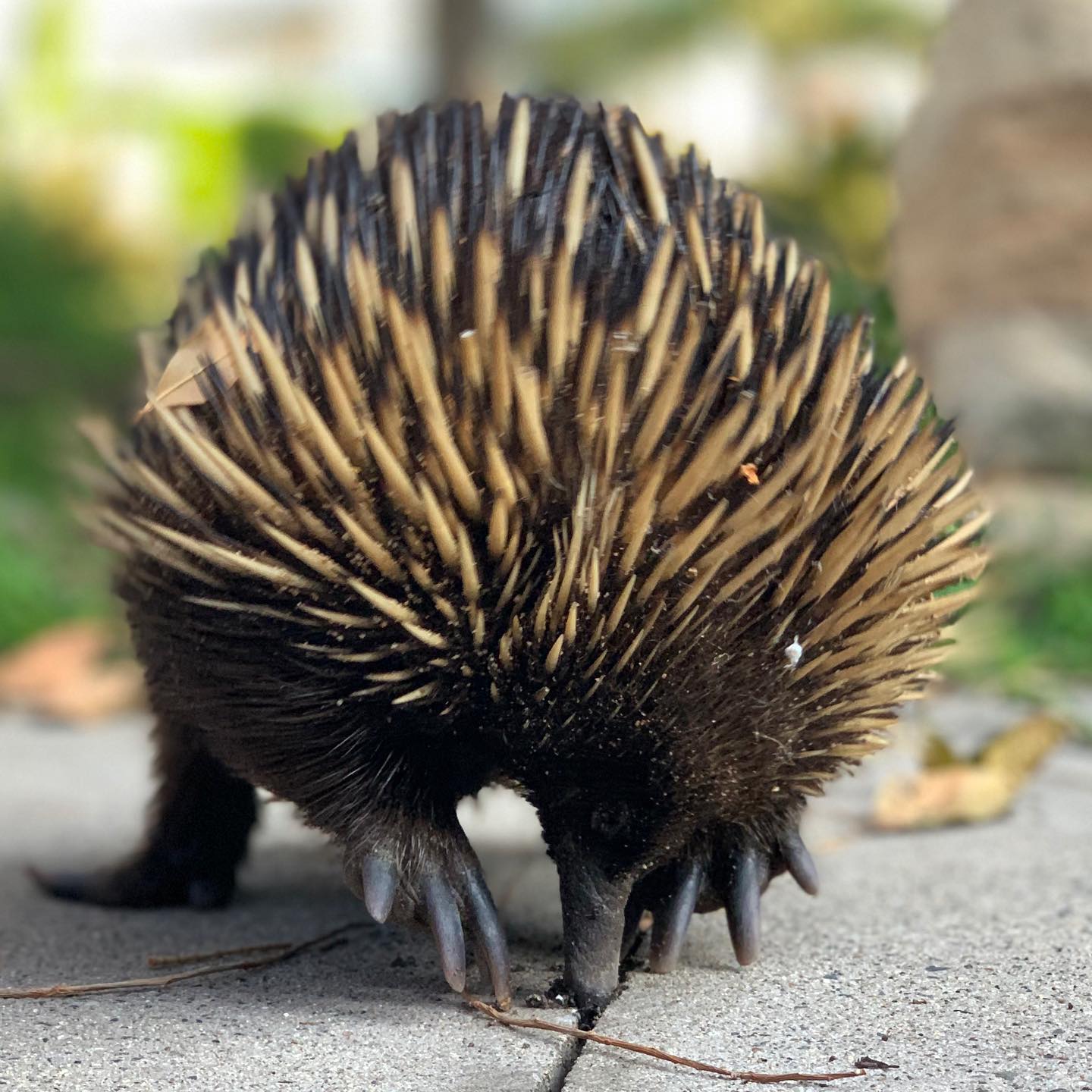
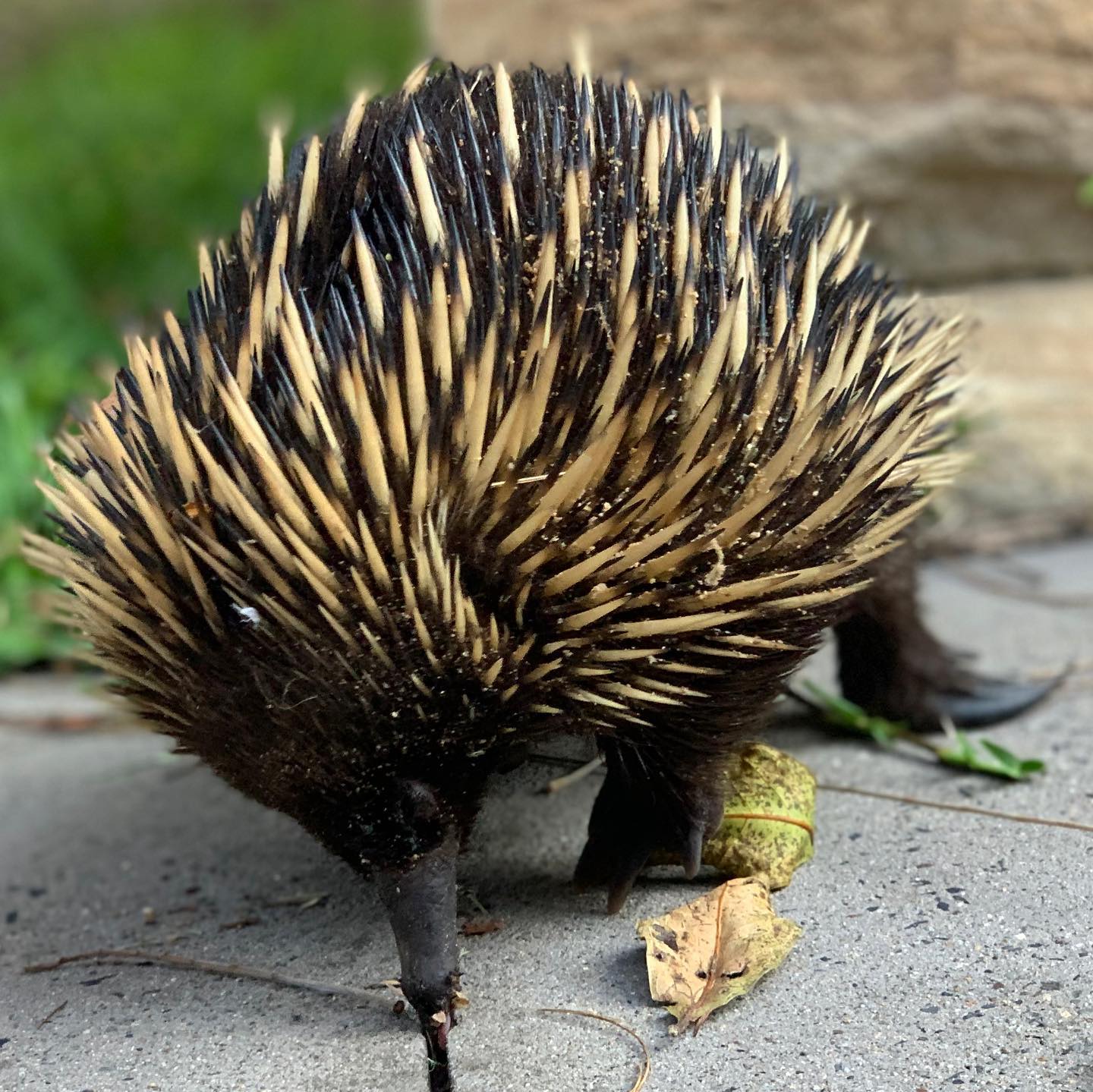
Bioluminescence Seen This Week
Sparkling dolphins swim off our coast, but humans are threatening these natural light shows

It was 2 am on a humid summer’s night on Sydney’s coast. Something in the distance caught my eye – a pod of glowing dolphins darted towards the bow of the boat. I had never seen anything like it before. They were electric blue, trailing swaths of light as they rode the bow wave.
It was a stunning example of “bioluminescence”. The phenomenon is the result of a chemical reaction in billions of single-celled organisms called dinoflagellates congregating at the sea surface. These organisms are a type of phytoplankton – tiny microscopic organisms many sea creatures eat.
Read more: Framing the fearful symmetry of nature: the year's best photos of landscapes and living things
Dinoflagellates switch on their bioluminescence as a warning signal to predators, but it can also be triggered when they’re disturbed in the water – in this case, by the dolphins.
You can see marine bioluminescence from land in Australia. Places like Jervis Bay and Tasmania are renowned for such spectacles.
But this dazzling night-time show is under threat. Light pollution creates brighter nights and disrupts ecological rhythms along the coast, such as breeding and feeding patterns. With so much human activity close to the shore and at sea, how much longer can we continue to enjoy this natural light show?
Lighting Up The World Has An Ecological Price
Light pollution is a well-known problem for inland ecosystems, particularly for nocturnal species.
In fact, a global study published earlier this year identified light pollution as an extinction threat to land bioluminescent species. The study surveyed firefly experts, who considered artificial light to be the second greatest threat to fireflies after habitat destruction.
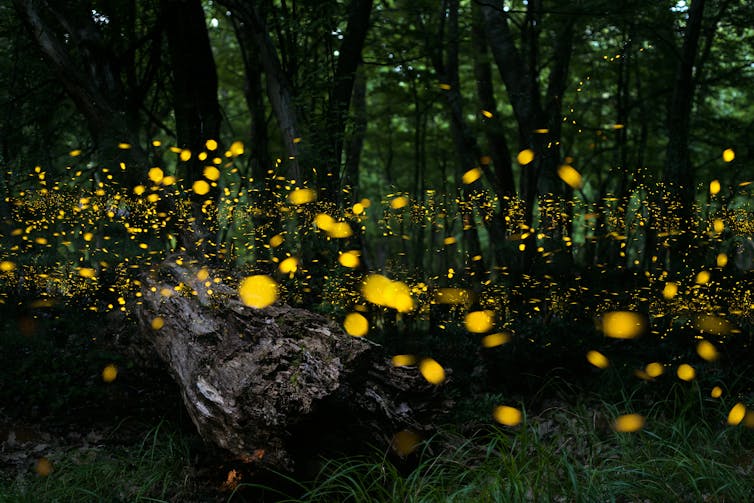
At sea, artificial light pollution enters the marine environment temporarily (lights from ships and fishing activities) and permanently (coastal towns and offshore oil platforms). To make matters worse, light from cities can extend further offshore by scattering into the atmosphere and reflecting off clouds. This is known as artificial sky glow.
For organisms with circadian clocks (day-night sleep cycles), this loss of darkness can have damaging effects.
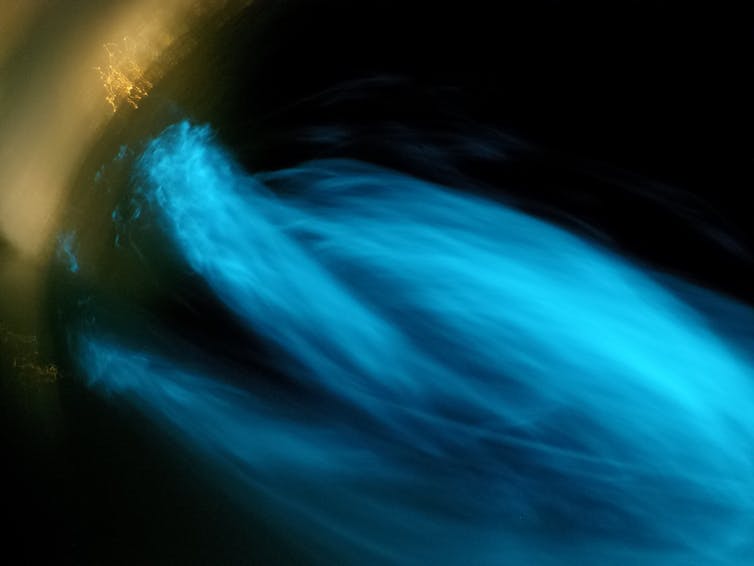
For example it can disrupt animal metabolism, which can lead to weight gain. Artificial light can also change sea turtle nesting behaviour and can disorientate turtle hatchlings when trying to get to sea, lowering their chances of survival.
Read more: Lights out! Clownfish can only hatch in the dark – which light pollution is taking away
It can also disorientate the foraging of fish communities; alter predatory fish behaviour (such as in Yellowfin Bream and Leatherjacks) leading to increased predation in artificial light at night; cause reproductive failure in clownfish; and change the structural composition of marine invertebrate communities.
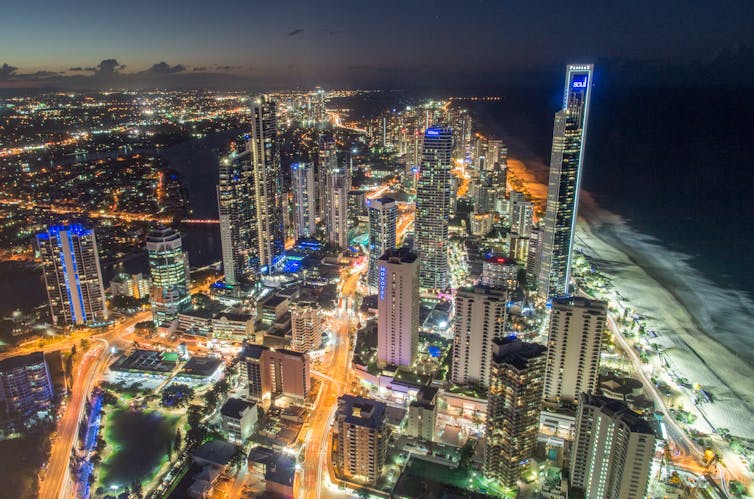
For zooplankton – a vital species for a range of bigger animals – artificial light disrupts their “diel vertical migration”. This term refers to the movement of zooplankton from the depths of the ocean where they spend the day to reduce fish predation, rising to the surface at night to feed.
What Does This Mean For Bioluminescent Species?
Increased exposure to artificial light due to human activities, such as growing cities and increased global shipping movement, may disrupt when and where bioluminescent species hang out.
In turn, this may influence where predators move, leading to disruptions in the marine food web, potentially changing the dynamics of energy transfer efficiency between marine species.
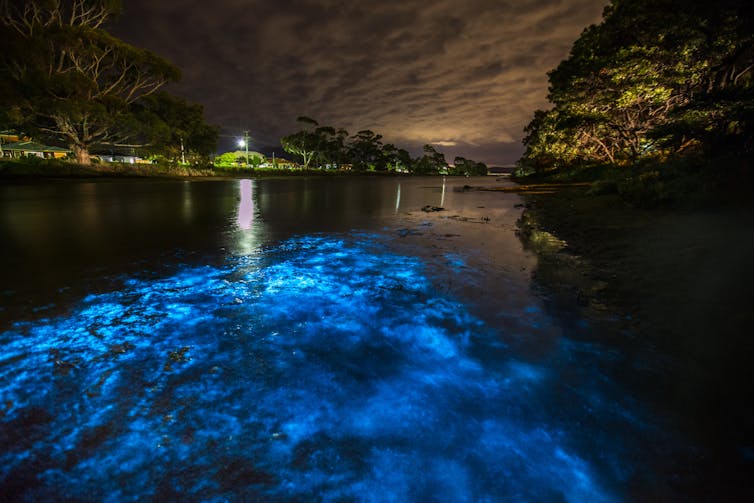
Bioluminescence usually serves as a communication function, such as to warn off predators, attract a mate or lure prey. For many species, light pollution in the ocean may compromise this biological communication strategy.
And for light-producing organisms such as dinoflagellates, excess artificial light may reduce the effectiveness of their bioluminescence because they won’t shine as bright, potentially increasing their risk of being eaten.

A 2016 study in the Arctic revealed the critical depth where atmospheric light dims to darkness, and bioluminescence from organisms becomes dominant, was approximately 30 metres below the sea surface.
This means any change to light in the Arctic influences when marine organisms rise to the surface. If there is too much light, these organisms remain deeper for longer where it’s safe – reducing their potential feeding time.
Read more: Bright city lights are keeping ocean predators awake and hungry
What Can We Do?
Understanding the level at which artificial light penetrates the ocean is tricky, especially so when dealing with mobile sources of light pollution such as ships, which are becoming an almost permanent fixture in some areas of the ocean.

Pockets of darkness still remain in our oceans. But they are becoming rarer, making light pollution a serious global threat to marine life.
Read more: The glowing ghost mushroom looks like it comes from a fungal netherworld
The spectacle of glowing dolphins should serve as a timely reminder of our need to conserve the darkness we have left.
Simple steps at home such as switching off lights and reducing unnecessary outdoor lighting, especially if you live near the ocean, is a step in the right direction to doing your bit for nocturnal species.![]()
Vanessa Pirotta, Marine scientist and science communicator, Macquarie University
This article is republished from The Conversation under a Creative Commons license. Read the original article.
Careel Creek Birds: Aussie Backyard Bird Count 2021 Local Stats
Saturday afternoon, returning north after taking a few happy snaps was good to see a Dusky Moorhen, White-faced Heron and two lots of Pacific Black Ducks along the creek - which still smells putrid and looks rotten, but it was low tide. At least the jacaranda just past the high school is currently flowering, making it look nicer.
This is the first time in decades of walking beside the creek this bird-noticer has seen a Dusky Moorhen in the creek and it scuttled back under some nearby palm fronds on the western bank - possibly a nest may be under there - so please be careful not to scare this returnee to the creek if you're passing that way.
Did you know that our area is part of the ancient Pacific Black Duck songline? A recent Pittwater Online News article, Ellis Rowan's Adventures In Painting Birds, Flowers and Insects: 'This Meant That I Was Tapu - Sacred - Because I Painted The Birds', for Bird Week and the Aussie Backyard Bird Count inspirations shared as part of that an article, ‘Singing up Country’: reawakening the Black Duck Songline, across 300km in Australia’s southeast' by Robert S. Fuller, Western Sydney University; Graham Moore, Indigenous Knowledge, and Jodi Edwards, University of Sydney.
Almost 5 million birds were counted this year. In our area there were more counts submitted in some postcodes than 2020 while others were around the same, which may be reflected in the totals of birds counted overall.
The local statistics by postcode are:
2108: Checklists submitted: 53, Species sighted: 60, Birds sighted: 1,365
2107: Checklists submitted: 210, Species sighted: 76, Birds sighted: 5,320
2106: Checklists submitted: 76, Species sighted: 46, Birds sighted: 1,650
2105: Checklists submitted: 23, Species sighted: 43, Birds sighted: 565
2104: Checklists submitted: 38, Species sighted: 49, Birds sighted: 982
2103: Checklists submitted: 108, Species sighted: 56, Birds sighted: 2,970
2102: Checklists submitted: 64, Species sighted: 81, Birds sighted: 1,577
2101: Checklists submitted: 157, Species sighted: 106, Birds sighted: 2,844
2100: Checklists submitted: 171, Species sighted: 108, Birds sighted: 3,808
2099: Checklists submitted: 252, Species sighted: 91, Birds sighted: 5,192
2097: Checklists submitted: 79, Species sighted: 66, Birds sighted: 1,665
2096: Checklists submitted: 50, Species sighted: 51, Birds sighted: 1,077
2095: Checklists submitted: 99, Species sighted: 64, Birds sighted: 3,445
2094: Checklists submitted:, Species sighted: 27, Birds sighted: 470
2093: Checklists submitted: 101, Species sighted: 71, Birds sighted: 2,820
2092: Checklists submitted: 28, Species sighted: 43, Birds sighted: 569
Last year's statistics for our area are available in: Over 5 Million Birds Counted: Aussie Bird Count 2020 - Local By Postcode Statistics For Our Area
That Dusky Moorhen and the others spotted:
Boaties Be Aware As Whale Season Winds Down
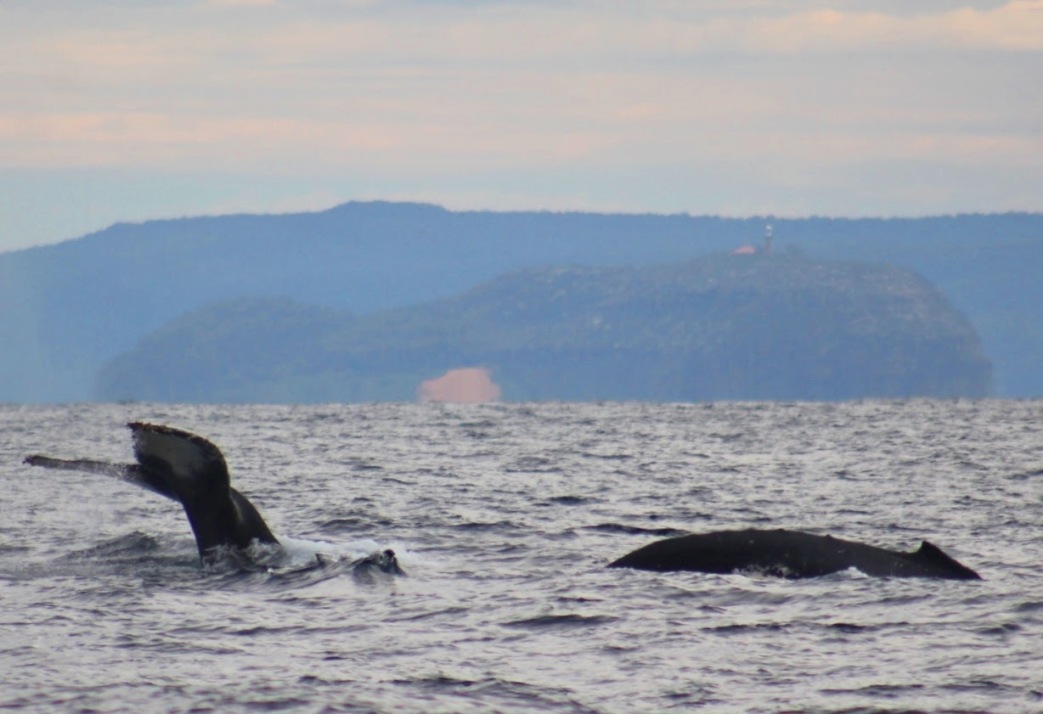
Sydney Wildlife Mobile Care Unit: Meet Pteri.
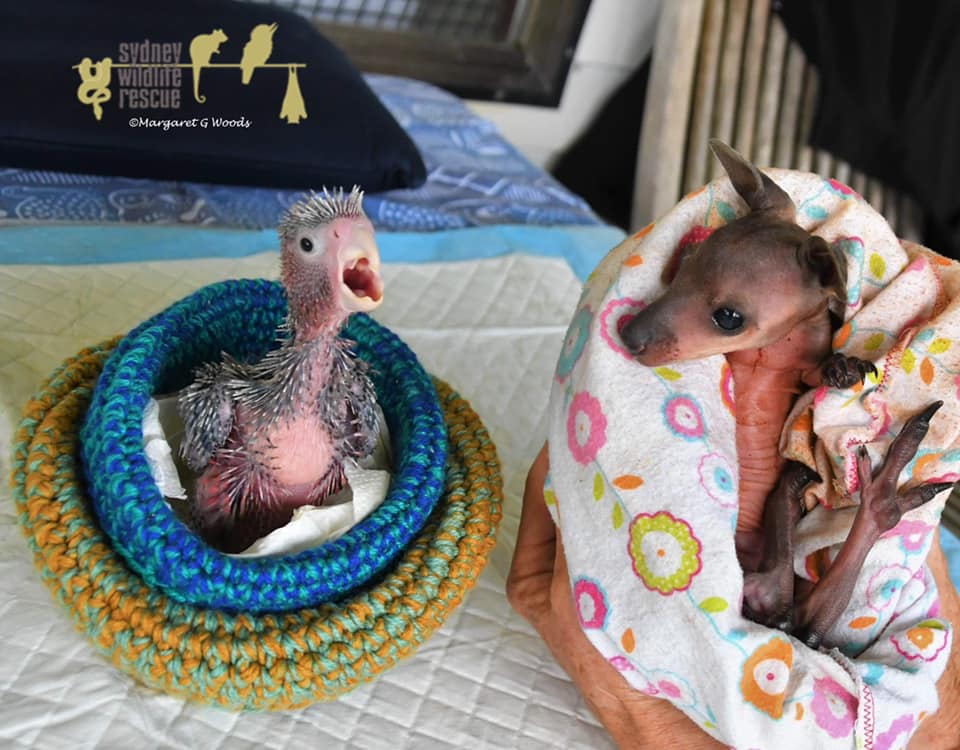
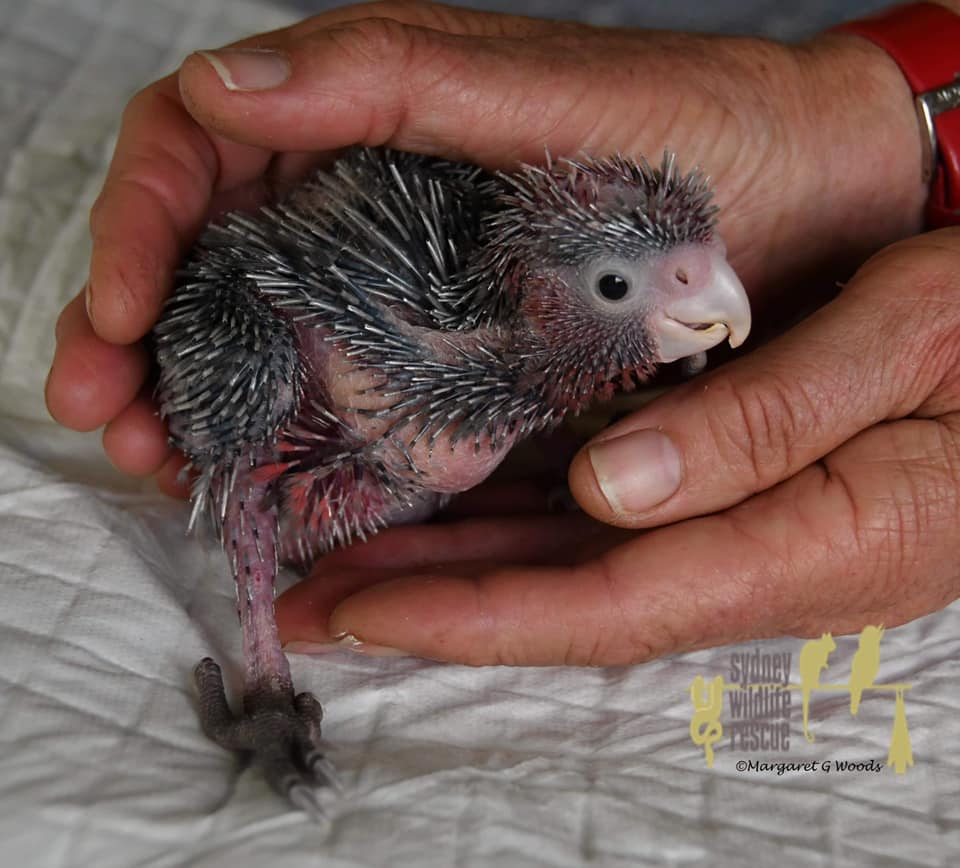
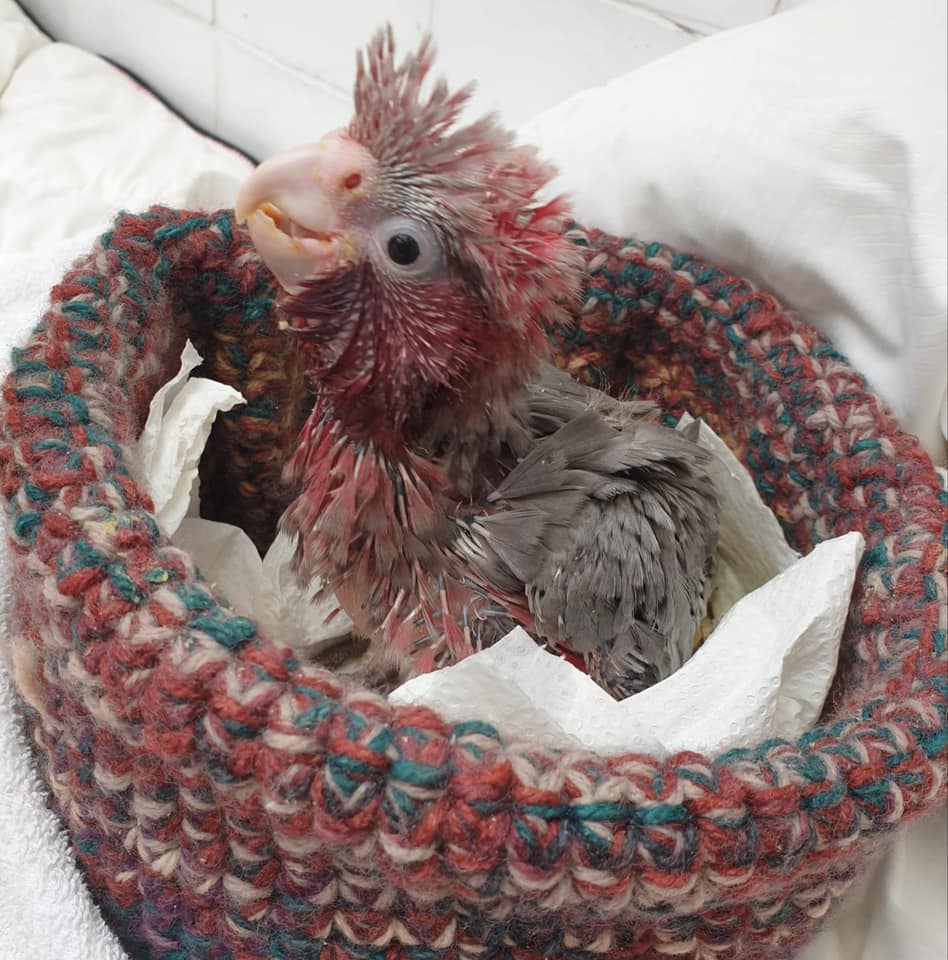
Applications Open To Refresh The Face Of Fishing Environments
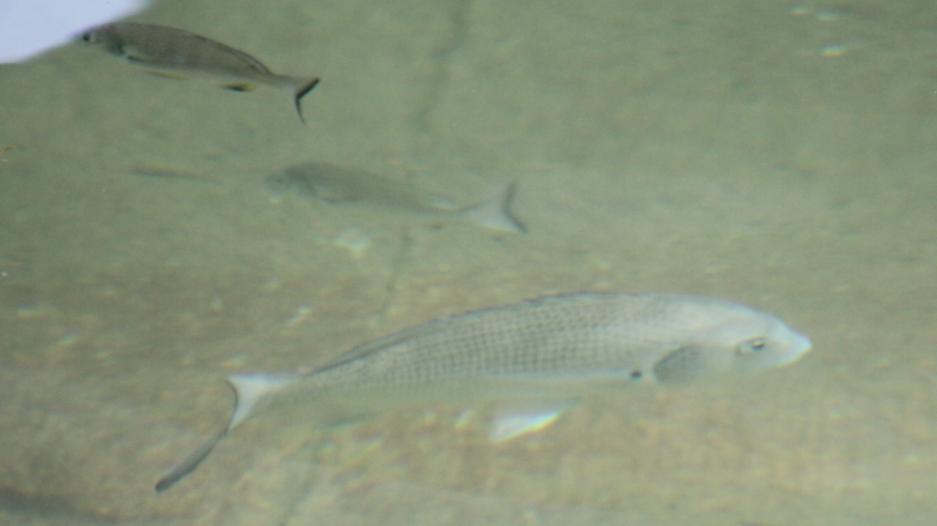 Minister for Agriculture Adam Marshall has today opened applications for the Habitat Action Grants program, and encouraged passionate fishers to submit ideas to see local native fish habitats flourish.
Minister for Agriculture Adam Marshall has today opened applications for the Habitat Action Grants program, and encouraged passionate fishers to submit ideas to see local native fish habitats flourish.Tuckeroo Becoming Troublesome In Pittwater
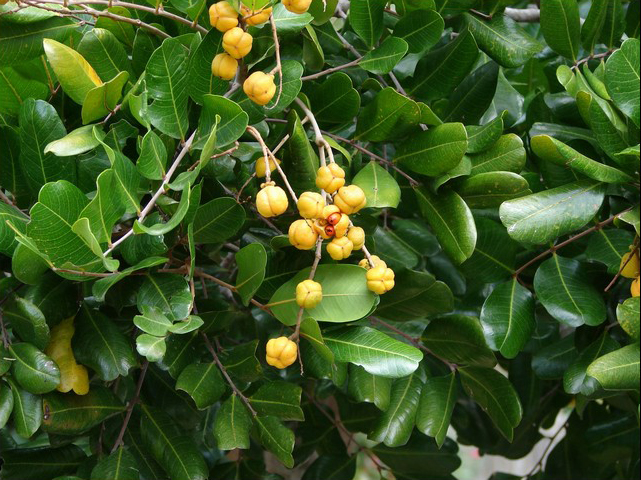
Avalon Preservation Association AGM 2021

Speaker: Angus Gordon OAM
“Global warming, is it real?”
The 2021 Annual General Meeting for Avalon Preservation Association (APA) will be held from 7.00pm on Thursday 11 November 2021 at the Avalon Beach surf life saving club.
Our special guest speaker is Angus Gordon OAM. Angus will talk on the controversial and very timely topic “Global Warming, Is it Real?”
Angus was General Manager of Pittwater Council from 1996 to 2005. He has a Master’s degree in Water and Coastal Engineering. In 2018 Angus received the Medal of the Order of Australia for “service to environmental management and planning, and to the community”.
Over the past 40 years he has undertaken projects in all states of Australia and in a number of overseas countries in coastal engineering, coastal zone management and flood management and engineering. Angus has served as a UN expert and was tasked with the development of the NSW Coastal Protection Act.
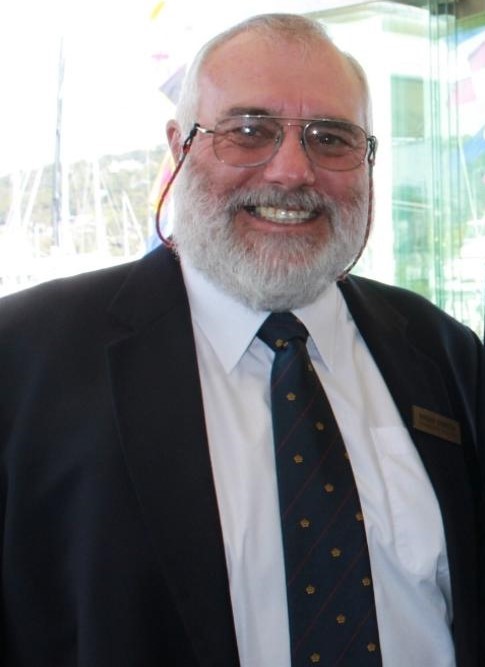
Angus Gordon OAM. AJG pic.

Speaker: Angus Gordon OAM
“Global warming, is it real?”
The 2021 Annual General Meeting for Avalon Preservation Association (APA) will be held from 7.00pm on Thursday 11 November 2021 at the Avalon Beach surf life saving club.
Our special guest speaker is Angus Gordon OAM. Angus will talk on the controversial and very timely topic “Global Warming, Is it Real?”
Angus was General Manager of Pittwater Council from 1996 to 2005. He has a Master’s degree in Water and Coastal Engineering. In 2018 Angus received the Medal of the Order of Australia for “service to environmental management and planning, and to the community”.
Over the past 40 years he has undertaken projects in all states of Australia and in a number of overseas countries in coastal engineering, coastal zone management and flood management and engineering. Angus has served as a UN expert and was tasked with the development of the NSW Coastal Protection Act.

Due to the current health situation, APA will hold the AGM strictly in line with the NSW Public Health Orders in force at the time. This may restrict the number of members and guests able to attend and guests may need to check in with a QR code, wear facemasks and show that they have been fully vaccinated.
November 2021 Forum For Friends Of Narrabeen Lagoon Catchment: Fishing Bats And Water Rats (Rakali)
.jpg?timestamp=1631741816240)
.jpg?timestamp=1631741908384)
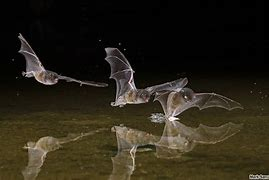
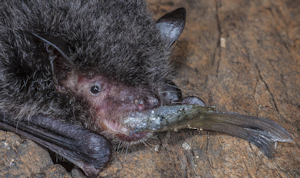
Migratory Bird Season
Baby Wildlife Season

Harry the ringtail possum. Sydney Wildlife photo
Sweet Release For Critically Endangered Regent Honeyeaters
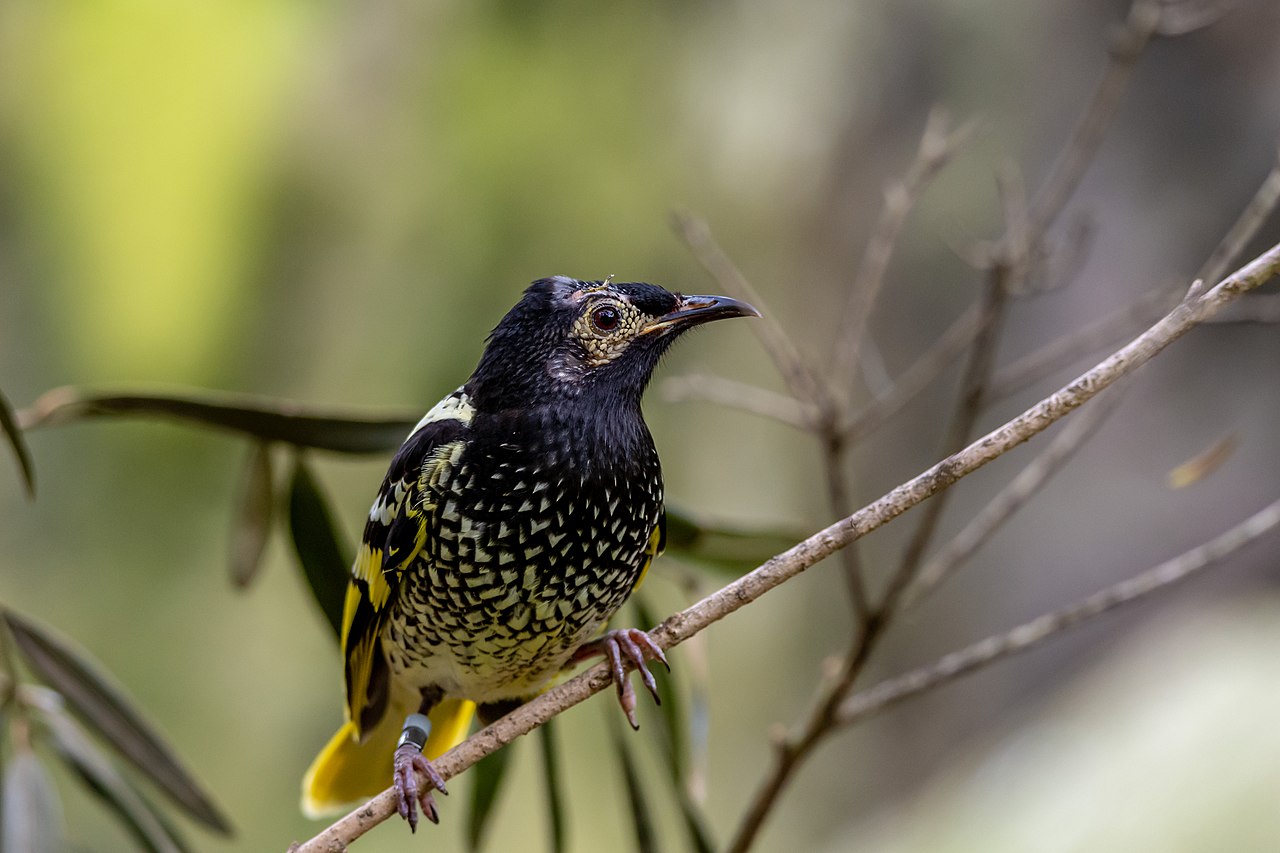
Big Boost To National Parks In Western NSW
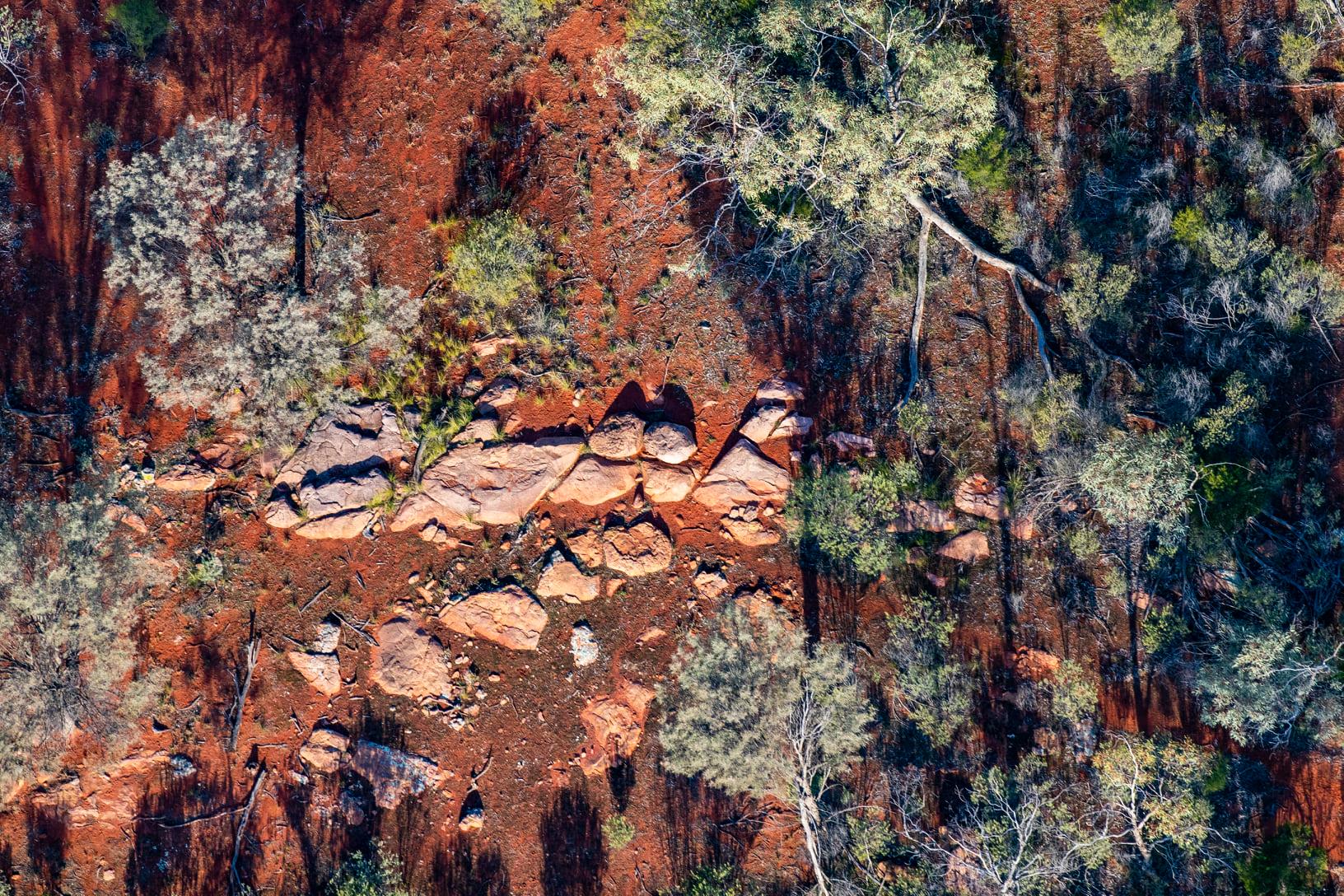
- Once formally gazetted, Avenel, Koonaburra and other recently acquired properties will take the total addition to the national park estate to over 520,000 Hectares since 2019.
- This is an increase of almost 7.5% in the park estate in a little over 2 years.
- NPWS is currently delivering the biggest investment in visitor infrastructure in national park history and this program will be extended to Avenel and Koonaburra.
- At 121,390 hectares, Avenel is the second largest acquisition of land for a national park in NPWS history, after Narriearra that created Narriearra Caryapundy Swamp National Park.
- Avenel is special because it:
- straddles two bioregions – the Simpson Strzelecki Dune fields and the Broken Hill Complex
- protects three landscapes that are not protected in any other national park in the State and several other landscapes that are poorly reserved
- is diverse, protecting nearly 50 different ecosystems or plant community types – 21 of which are not reserved at the bioregional level.
- The property features an array of arid zone landforms transitioning from the rocky plateau of the Barrier Range – with floodplains, gilgais and drainage lines washing onto gibber plains – through to the spectacular dune fields of the Strzelecki Desert.
- Vegetation includes acacia and chenopod shrublands on the rocky ranges, Mitchell grass grasslands on the outwash plains, open woodlands dominated by white cypress pine and belah (a casuarina) across the dune fields and an extensive network of drainage channels that support riparian woodlands dominated by river red gum and coolabah.
- Habitat for an estimated 30 threatened species are likely to occur on the property including Australian bustard, dusky hopping-mouse, eastern fat-tailed gecko and yellow-keeled swainsona, a small forb with pea-like flowers.
- Lying on Ngurunta country to the west and the Maljangapa country to the east, the property has significant Aboriginal cultural heritage value, with significant artefacts and sites across the property including middens, quarries and burial sites.
- Avenel is set to become an exciting new visitor destination with campgrounds, 4WD circuits and walking trails. It is expected to open to the public in mid-2022.
- At 45,534 hectares, Koonaburra Station contains ecosystems unrepresented, or poorly protected in the national park system, as well as threatened ecological communities and species.
- It contains two threatened ecological communities: acacia melvillei shrubland in the Riverina and Murray-Darling Depression bioregions (endangered) which is distributed over the southern section of the property and Sandhill Pine Woodland in the Riverina, Murray-Darling Depression and NSW South Western Slopes Bioregions (endangered) which occurs extensively across the northern portion of the property.
- A comprehensive enhanced feral animal management program will be implemented across the Park, including upgraded, fit-for-purpose fencing infrastructure. This will assist in the regeneration of native vegetation and sequester significant volumes of carbon.
- The station is situated on The Wool Track, 100 kilometres north east of Ivanhoe and 140 kilometres south west of Cobar.
- The soils are a mixture of loam, light to heavy red clay, grey soil from light to heavy, self-mulching flats interspersed with millions of water depressions called crab or melon holes.
- Boasting 355mm rainfall, Koonaburra has dual frontage to over 20 kilometres of the Sandy Creek. The entire station is watered by massive flood out systems – a dozen lakes, box cowls and meandering waterways.
- Koonaburra Station once formed part of the giant pastoral lease Keewong Station established in the early 1800s which ran Merino sheep.
- Paroo Darling National Park is located approximately 50 kilometres to the north west, and Yathong Nature Reserve approximately 55 kilometres to the south-east.
- It features some of the holding's original buildings including the shearing shed, the original standalone and renovated meat house and the old harness and buggy shed.
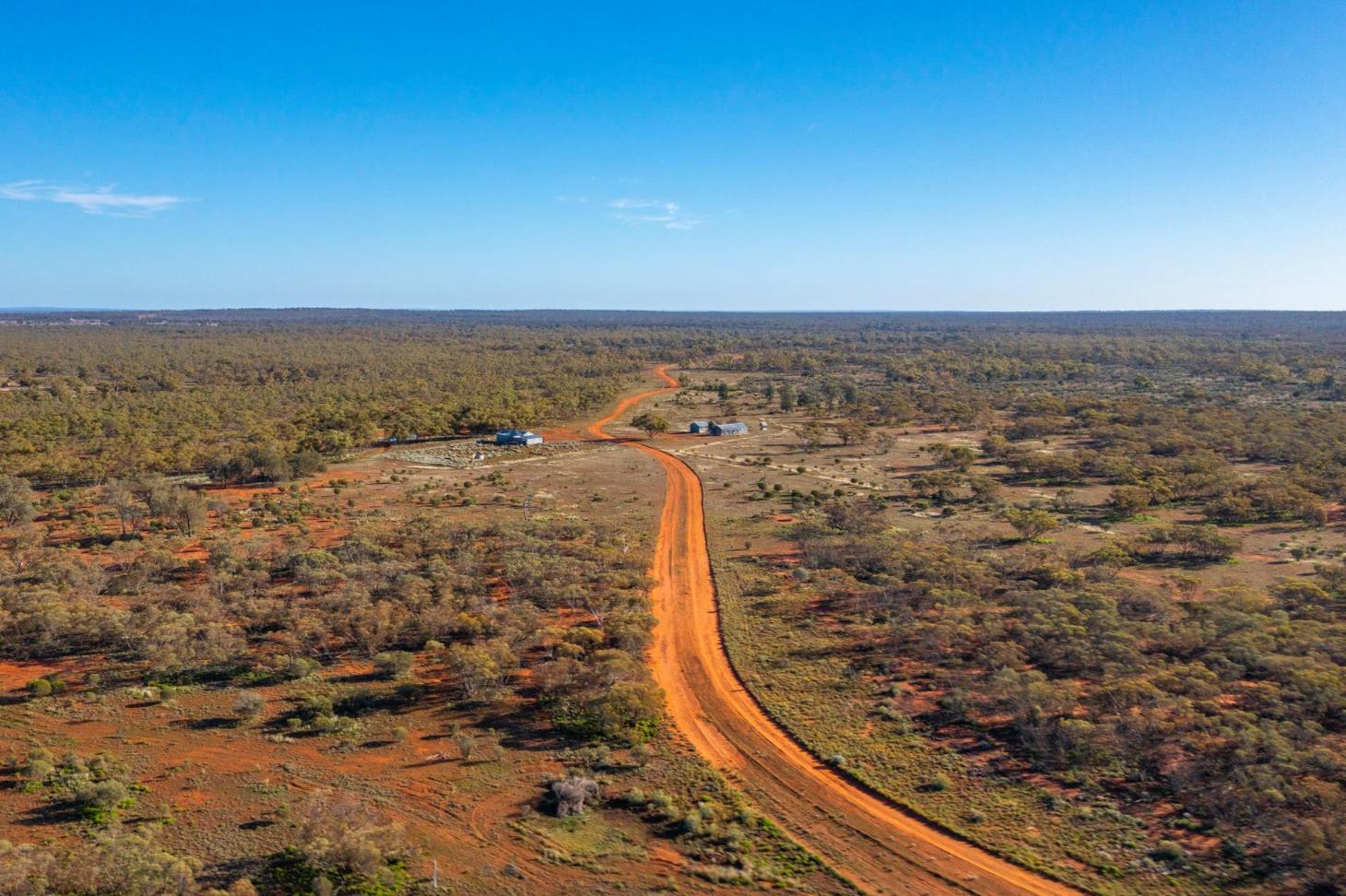
NSW To Lead The Way On Net Zero Buildings
New RAA Board Members Appointed To Deliver For Rural NSW
- Chair: Mr Andrew Rice, a mixed farming operator from Parkes, and Director of Agricultural and Management Services at ASPIRE Agri, as well as non-executive director and chairperson of the not-for-profit company Field Applied Research Australia Pty Ltd, and non-executive director, Central West Local Land Services.
- Director: Ms Joanna Balcomb, a mixed farming operator from Cudal, and Chief Risk Officer for First Choice Credit Union in Orange, with experience as an independent RAA appeals panel member for both bushfires and floods.
Greater Sydney Water Strategy Open For Feedback
- Improving water recycling, leakage management and water efficiency programs, which could result in water savings of up to 49 gigalitres a year by 2040.
- Extending a water savings program, which has been piloted in over 1000 households and delivered around 20 per cent reduction in water use per household and almost $190 in savings per year for household water bills.
- Consideration of running the Sydney Desalination Plant full-time to add an extra 20 gigalitres of water per year.
- Expanding or building new desalination plants to be less dependent on rainfall.
- Investigating innovations in recycled water to improve sustainability.
- Making greater use of stormwater and recycled water to cool and green the city and support recreational activities.
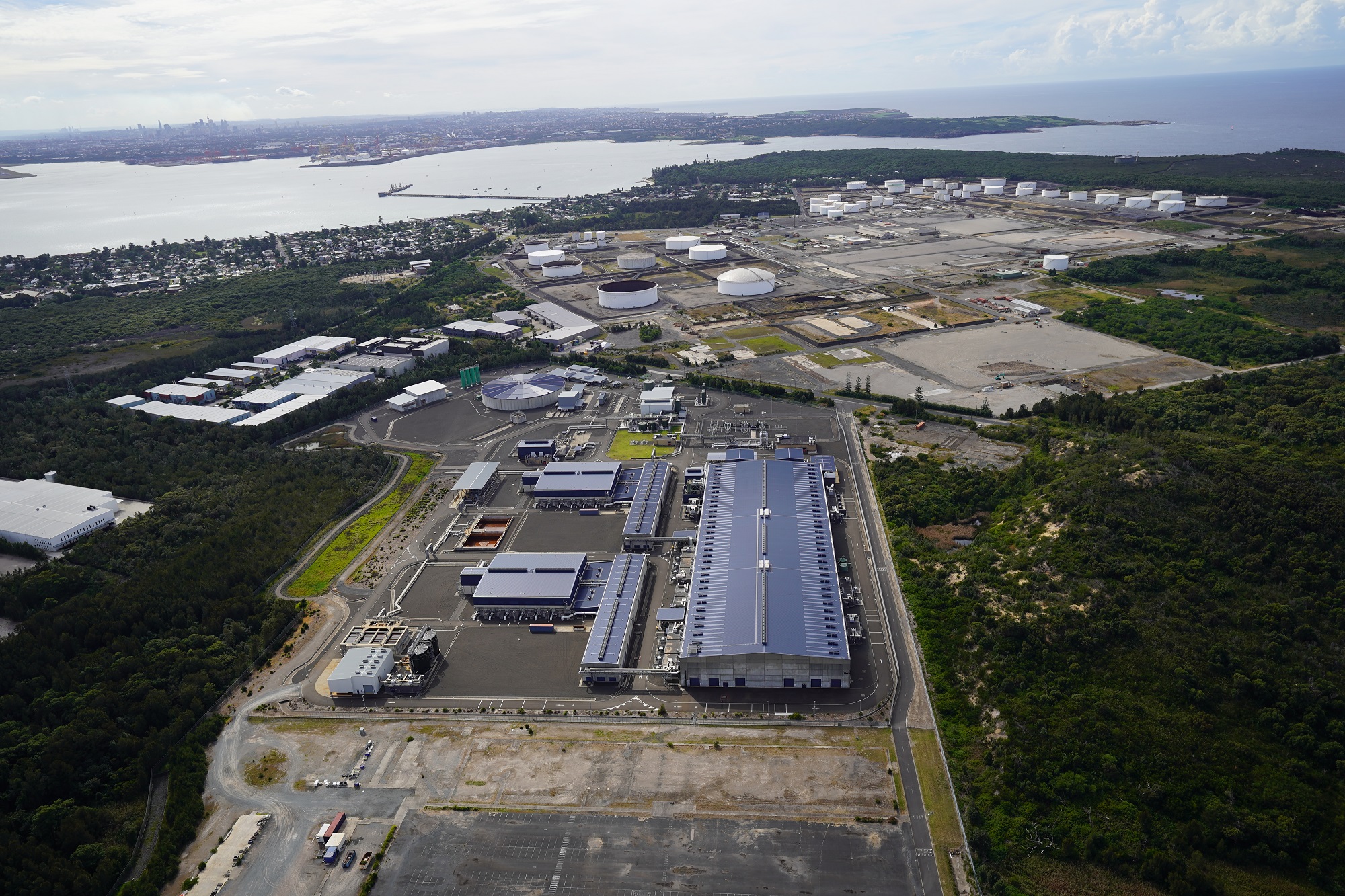
Warragamba Dam Raising Project EIS On Public Exhibition
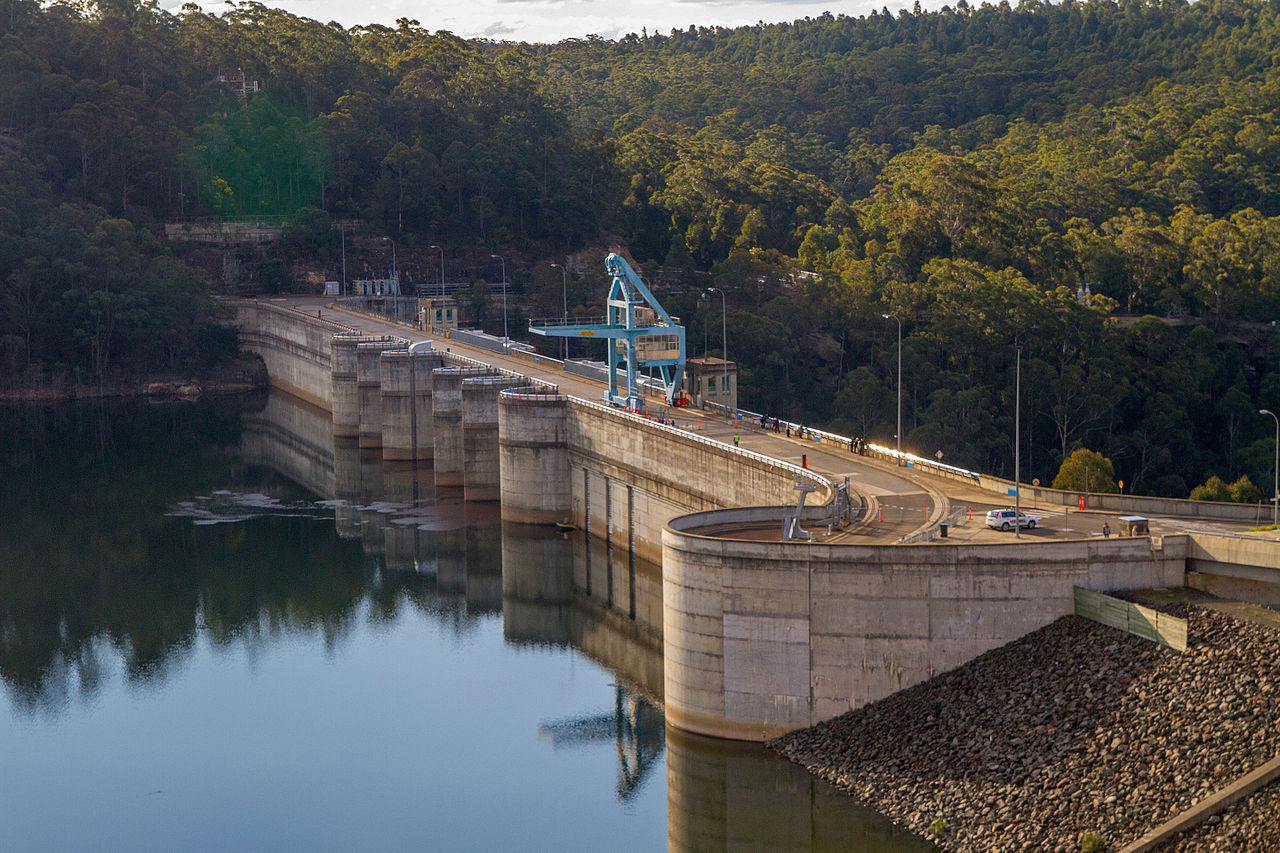
NSW Government Plan To Revitalise Peat Island And Mooney Mooney Released
- Nearly 270 new homes at Mooney Mooney to deliver more housing supply,
- Retention of nine unlisted historical buildings on the island, and four on the mainland, to be restored and used for new community and commercial opportunities,
- New retail and café or restaurant opportunities,
- Approximately 9.65 hectares of open space, including opportunities for walking and cycling tracks, parklands and recreational facilities,
- Retention of the chapel and surrounding land for community use, and
- 10.4 hectares of bushland dedicated as a conservation area.
Grattan on Friday: The weather gets choppy with Joyce and Morrison’s climate contradictions
Michelle Grattan, University of CanberraIn the press gallery at Parliament House, there’s a bell that years ago was rung regularly to alert journalists to press conferences and statements. Email has made it an anachronism.
But shortly before 8am on Thursday Deputy Prime Minister Barnaby Joyce appeared in the gallery, looking rather agitated, and personally rang the bell.
Joyce was there to lay an ownership claim to the exclusion of a methane reduction pledge from the 2050 net-zero climate plan Scott Morrison announced on Tuesday. “One of the key reasons that the Nationals went in to bat has become so clearly evident today,” Joyce declared.
This followed a report in The Australian, briefed by the office of Emissions Reduction Minister Angus Taylor, rejecting the United States push for a 30% reduction by 2030 of methane emissions (produced by cows burping, gas extraction, and the like).
Taylor apparently had been onto the methane exclusion issue for some time. Later on Thursday Morrison said the government never had any intention of agreeing to the reduction. He also rejected Joyce’s confusing claim there was an agriculture carve out from the climate plan.
Who gets political “branding rights” on the treatment of methane was just the latest pinch point in the fallout from Tuesday’s announcement.
Much doubt has been created by the government’s failure to release the plan’s modelling, which Morrison says will be out in a few weeks – that is, after COP26 is well and truly behind him.
An industry department official told a Senate estimates committee the material was being put into digestible shape.
“As the plan was only finalised on Tuesday, we need to make sure we have written that technical work up. The actual modelling, of course, had been finalised at that point.
"But the write-up of that – we just need to take a little bit of extra time to make sure that it’s written clearly and able to be presented well to the Australian public,” Jo Evans, a deputy secretary in the department, said.
Meanwhile most of the trade-offs the Nationals have received for their reluctant support continue to remain a mystery.
Joyce, who became acting prime minister after Morrison departed on Thursday night for the G20 in Rome followed by COP26 in Glasgow, is likely to announce certain measures while he’s in the spotlight.
But others are to be in the budget update at the end of the year, presented as election commitments, or in next year’s budget if that occurs before the election.
Some of these unknown measures still have to be brought forward as cabinet submissions and go through the formal bureaucratic hoops, including being costed.
That shows how unsatisfactory the process has been – the government had months to deal with net-zero, settling things with the minor Coalition partner and finalising the trade-offs.
More importantly from the Nationals’ standpoint, they’re left exposed as they return to their electorates now parliament has risen for a three-week break. When they meet their constituents, they are not able to produce the suite of benefits they obtained in return for their policy sign-up.
Read more: View from The Hill: Morrison's net-zero plan is built more on politics than detailed policy
For Morrison the 2050 policy is an attempted barnacle-removing process, for both the Glasgow conference and the election. The Nationals, in contrast, see it adding to their barnacles.
The rejection of the requested methane cuts is another indication of the general weakness of the Australian plan. For all the struggle to land it, the plan is a bare minimum and will be seen as such in Glasgow.
Domestically, given the flaws and inadequacies, the plan is not likely to win votes for the government; rather, it is designed to stem the loss of them to Labor and independents in the “leafy” southern seats.
We’ve yet to see Labor’s alternative but one would think independent candidates will still have plenty of scope to stake out ground on the climate issue.
Earlier this week Morrison made some comments that set off speculation he planned a May poll, as opposed to a March-April one.
A May election would give the time for another budget, with the opportunities that brought.
Whether the election is in May or March, Morrison is already in campaign mode.
In this week’s Newspoll, the government is on the back foot, trailing 46-54% on the two-party vote. Regardless, both sides regard the battle as open.
Despite the election being so near, Labor hasn’t broken out of a trot. Albanese’s strategy is to leave the attention on the government and, more generally, to keep Labor a small target in policy terms. On the logic of its wider approach Labor could be expected to be cautious in the policy it issues on climate change, although it is still debating its position, expected to be released before Christmas.
Read more: With Labor gaining in polls, is too much Barnaby Joyce hurting the Coalition?
Albanese has been heavily influenced, negatively, by his predecessor Bill Shorten’s approach before the 2019 election, when Labor put forward an extensive and radical bag of policies.
The big target approach was seen to have scared off voters. Whether the small target will encourage people to vote Labor is hard to judge. The danger for the opposition is that, in the absence of a leader who is a drawcard, many people might be inclined to stick with the status quo.
Without the prospect of much substantive and highly differentiated policy being contested, the seat-by-seat campaigning will be especially significant at this election. Voters think local to a greater extent than they used to.
On Thursday the government introduced controversial legislation to require voters to produce ID at the polling booth. Labor and some in the welfare sector warn this will discourage the disadvantaged, including Indigenous people, from voting. The government says there would be plenty of protections – a range of identification could be used, including a Medicare card, and a person without identification would be allowed to cast a vote, with his or her identity checked later.
Given the widespread demand for identification for all sorts of things in our community, the requirement for ID when voting is not unreasonable. But it seems a solution in search of a problem, because voter fraud hasn’t been a feature of federal elections.
And it reflects distorted priorities that this legislation has been introduced before we see the bill for the long-awaited national integrity commission.![]()
Michelle Grattan, Professorial Fellow, University of Canberra
This article is republished from The Conversation under a Creative Commons license. Read the original article.
The ‘97% climate consensus’ is over. Now it’s well above 99% (and the evidence is even stronger than that)
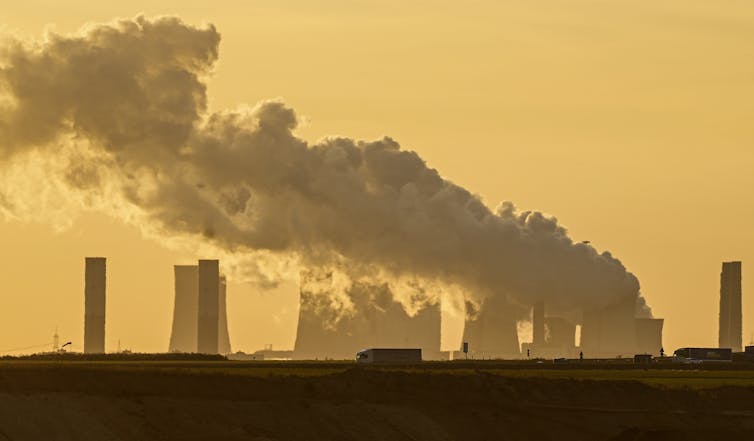
Despite the overwhelming evidence, it’s still common to see politicians, media commentators or social media users cast doubt on the role of humans in driving climate change.
But this denialism is now almost nonexistent among climate scientists, as a study released this month confirms. US researchers examined the peer-reviewed literature and found more than 99% of climate scientists now endorse the evidence for human-induced climate change.
That’s even higher than the 97% reported by an influential 2013 study, which has become a widely cited statistic by both climate change deniers and those who accept the evidence.
Why has the needle evidently shifted even more firmly in favour of the evidence-based consensus? Or, to put it another way, what happened to the 3% of researchers who rejected the consensus of human caused climate change? Is this change purely because of the growing weight of evidence published over the past few years?
Unpicking The Polls
We must first ask whether the two studies are directly comparable. The answer is yes. The latest study has reexamined the literature published since 2012, and is based on the same methods as the 2013 study, albeit with some important refinements.
Read more: Consensus confirmed: over 90% of climate scientists believe we're causing global warming
Both studies searched the Web of Science database – an independent worldwide repository of scientific paper citations – using the keywords “global climate change” and “global warming”. However, the recent study added “climate change” to the other two keyword searches, because the authors found that most climate-contrarian papers would not have been returned with only the two original terms.
The 2013 study examined 11,944 climate research papers and found almost one-third of them expressed a position on the cause of global warming. Of these 4,014 papers, 97% endorsed the consensus position that humans are the cause, 1% were uncertain, and 2% explicitly rejected it.
A 2015 review examined 38 climate-contrarian papers published over the preceding decade, and identified a range of methodological flaws and sources of bias.
One of the reviewers commented that “every single one of those analyses had an error – in their assumptions, methodology, or analysis – that, when corrected, brought their results into line with the scientific consensus”.
For example, many of the contrarian papers had “cherrypicked” results that supported their conclusion, while ignoring important context and other data sources that contradicted it. Some of them simply ignored fundamental physics.
The 2015 reviewers also made the important point that “science is never settled and that both mainstream and contrarian papers must be subjected to sustained scrutiny”. This is the cornerstone of the scientific method, and few if any climate scientists would disagree with this statement.
Separating The Human Influence From The Natural
The recently published Intergovernmental Panel for Climate Change (IPCC) Synthesis Report, says “it is unequivocal that human influence has warmed the atmosphere, ocean and land”, and warns that the Paris Agreement goals of 1.5℃ and 2℃ above pre-industrial levels will be exceeded during this century without dramatic emissions reductions.
In reaching this conclusion, it is important to distinguish between changes caused by human activities altering the atmosphere’s chemistry, and climate variability caused by natural factors.
These natural variations include small changes in the Sun’s energy output due to sunspots and solar flares, infrequent volcanic eruptions, and the effects of El Niño weather patterns in the Pacific Ocean.
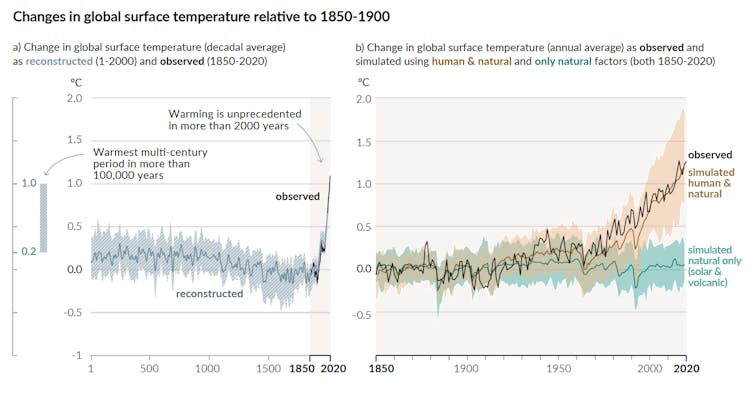
Excluding these natural variations, Earth’s surface temperature was generally stable from about 2,000 to 1,000 years ago. After that, the planet cooled by about 0.3℃ over several centuries, before the advent of fossil fuel-based industrialisation in the 1800s.
One study identified 12 major volcanic eruptions from 100 to 1200 CE, compared with 17 eruptions from 1200 to 1900 CE. Hence, heightened volcanic activity over roughly the past 800 years was associated with a general global cooling before the industrial revolution.
Current rates of global warming are unprecedented in more than 2,000 years and temperatures now exceed the warmest (multi-century) period in more than 100,000 years. Global average surface temperature for the decade from 2011-20 was about 1.1℃ higher than in 1850-1900. Each of the past four decades has been warmer than any preceding decade since 1850, when reliable weather observations began.
Read more: 99.999% certainty humans are driving global warming: new study
Researchers can separate human and natural factors in the modern global temperature record. This involves a process called hindcasting, in which a climate model is run backwards in time to simulate human and natural factors, and then compared with the observed data to see which combination of factors most accurately recreates the real world.
If human factors are removed from the data set and only volcanic and solar factors are included, then global average surface temperatures since 1950 should have remained similar to those over the preceding 100 years. But of course they haven’t.
The evidence, and the scientific consensus on it, are both clearer than ever.![]()
Steve Turton, Adjunct Professor of Environmental Geography, CQUniversity Australia
This article is republished from The Conversation under a Creative Commons license. Read the original article.
Drying land and heating seas: why nature in Australia’s southwest is on the climate frontline
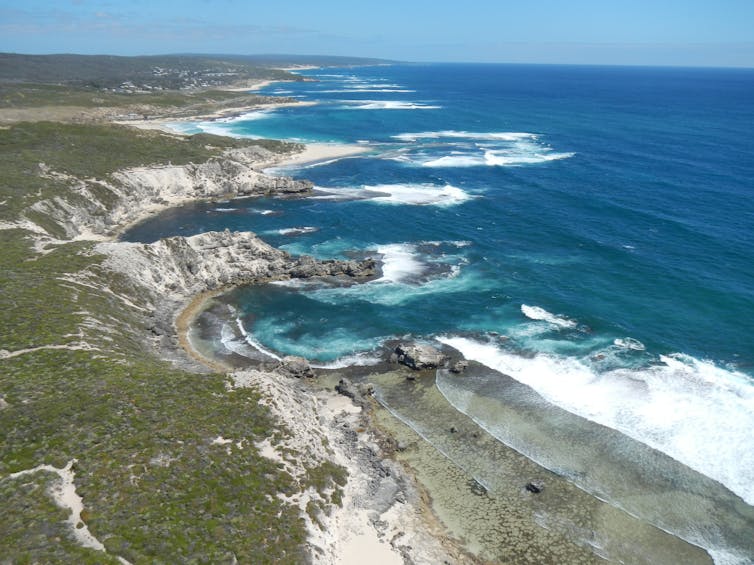
In a few days world leaders will descend on Glasgow for the United Nations climate change talks. Much depends on it. We know climate change is already happening, and nowhere is the damage more stark than in Australia’s southwest.
The southwest of Western Australia has been identified as a global drying hotspot. Since 1970, winter rainfall has declined up to 20%, river flows have plummeted and heatwaves spanning water and land have intensified.
The Intergovernmental Panel on Climate Change warns this will continue as emissions rise and the climate warms.
Discussion of Australian ecosystems vulnerable to climate change often focuses on the Great Barrier Reef, as well as our rainforests and alpine regions. But for southwest Western Australia, climate change is also an existential threat.
The region’s wildlife and plants are so distinctive and important, it was listed as Australia’s first global biodiversity hotspot. Species include thousands of endemic plant species and animals such as the quokka, numbat and honey possum. Most freshwater species and around 80% of marine species, including 24 shark species, live nowhere else on Earth.
They evolved in isolation over millions of years, walled off from the rest of Australia by desert. But climate heating means this remarkable biological richness is now imperilled – a threat that will only increase unless the world takes action.
Read more: Australia's south west: a hotspot for wildlife and plants that deserves World Heritage status
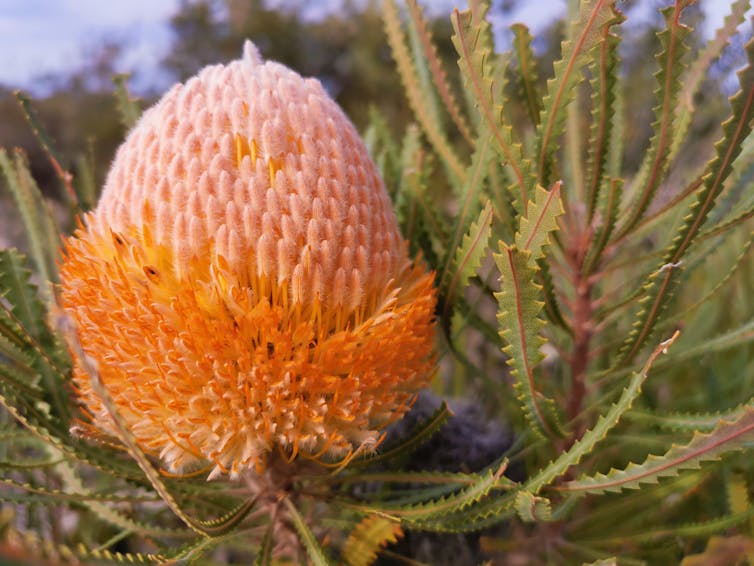
Hotter And Drier
Southwest WA runs roughly from Kalbarri to Esperance, and is known for its Mediterranean climate with very hot and dry summers and most rainfall in winter.
But every decade since the 1970s, the region’s summertime maximum temperatures have risen 0.1-0.3℃, and winter rainfall has fallen 10-20 millimetres.
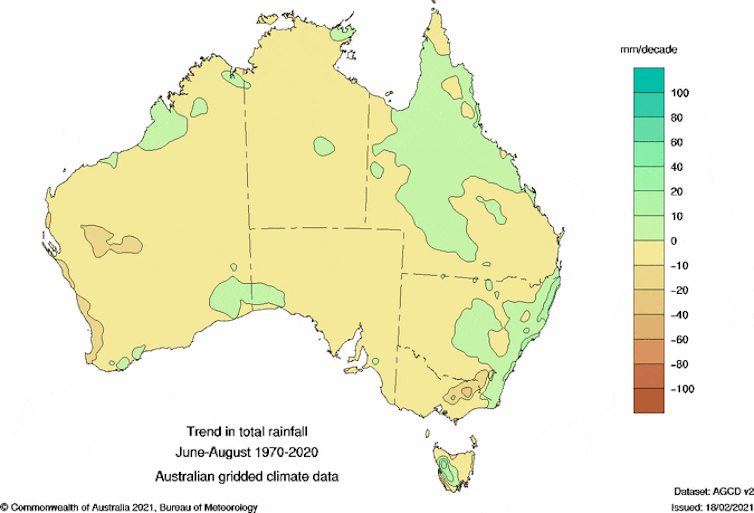
And remarkably, a 1℃ increase in the average global temperature over the last century has already more than doubled the days over 40℃ in Perth.
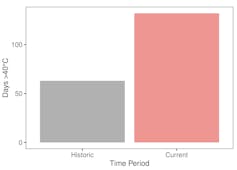
This trend is set to continue. Almost all climate models project a further drop in winter rainfall of up to 30% across most of the southwest by 2100, under a high emissions scenario.
The southwest already has very hot days in summer, thanks to heat brought from the desert’s easterly winds. As climate change worsens, these winds are projected to get more intense, bringing still more heat.
Drying Threatens Wildlife, Wine And Wheat
Annual rainfall in the southwest has fallen by a fifth since 1970. That might not sound dangerous, but the drop means river flows have already fallen by an alarming 70%.
It means many rivers and lakes now dry out through summer and autumn, causing major problems for freshwater biodiversity. For example, the number of invertebrate species in 17 lakes in WA’s wheatbelt fell from over 300 to just over 100 between 1998 and 2011.
The loss of water has even killed off common river invertebrates, such as the endemic Western Darner dragonfly, with most now found only in the last few streams that flow year round. The drying also makes it very hard for animals and birds to find water.
Most native freshwater fish in the southwest are now officially considered “threatened”. As river flow falls to a trickle, fish can no longer migrate to spawn, and it’s only a short march from there to extinction. To protect remaining freshwater species we must develop perennial water refuges in places such as farm dams.

The story on land is also alarming, with intensifying heatwaves and chronic drought. This was particularly dire in 2010/2011, when all ecosystems in the southwest suffered from a deadly drought and heatwave combination.
What does that look like on the ground? Think beetle swarms taking advantage of forest dieback, a sudden die off of endangered Carnaby’s Black Cockatoos, and the deaths of one in five shrubs and trees. Long term, the flowering rates of banksias have declined by 50%, which threatens their survival as well as the honey industry.
For agriculture, the picture is mixed. Aided by innovation and better varieties, wheat yields in the southwest have actually increased since the 1970s, despite the drop in rainfall.
Read more: Saving water in a drying climate: lessons from south-west Australia
But how long can farmers stay ahead of the drying? If global emissions aren’t drastically reduced, droughts in the region will keep getting worse.
Increased heating and drying will also likely threaten Margaret River’s famed wine region, although the state’s northern wine regions will be the first at risk.
Hotter Seas, Destructive Marine Heatwaves
The seas around the southwest are another climate change hotspot, warming faster than 90% of the global ocean since the middle of last century. Ocean temperatures off Perth have risen by an average of 0.1-0.3℃ per decade, and are now almost 1℃ warmer than 40 years ago.
The waters off the southwest are part of the Great Southern Reef, a temperate marine biodiversity hotspot. Many species of seaweeds, seagrasses, invertebrates, reef fish, seabirds and mammals live nowhere else on the planet.
As the waters warm, species move south. Warm-water species move in and cool-water species flee to escape the heat. Once cool-water species reach the southern coast, there’s nowhere colder to go. They can’t survive in the deep sea, and are at risk of going extinct.
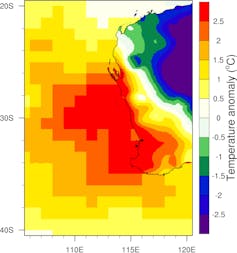
Marine heatwaves are now striking alongside this long-term warming trend. In 2011, a combination of weak winds, water absorbing the local heat from the air, and an unusually strong flow of the warm Leeuwin Current led to the infamous marine heatwave known as Ningaloo Nino.
Over eight weeks, ocean temperatures soared by more than 5℃ above the long-term maximum. Coral bleached in the state’s north, fish died en masse, 34% of seagrass died in Shark Bay, and kelp forests along 100km of WA’s coast were wiped out.
Following the heatwave came sudden distribution changes for species like sharks, turtles and many reef fish. Little penguins starved to death because their usual food sources were no longer there.
Recreational and commercial fisheries were forced to close to protect ailing stocks. Some of these fisheries have not recovered 10 years later, while others are only now reopening.
This is just the start. Projections suggest the southwest could be in a permanent state of marine heatwave within 20-40 years, compared to the second half of the 20th century.
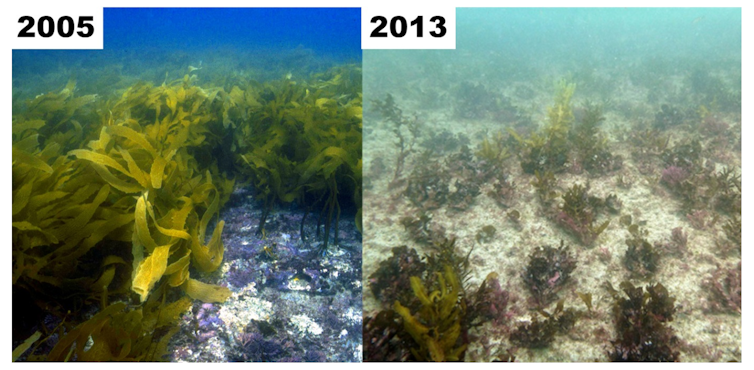
Read more: How much do marine heatwaves cost? The economic losses amount to billions and billions of dollars
Adaptation Has Limits
Nature in the southwest cannot adapt to these rapid changes. The only way to stem the damage to nature and humans is to stop greenhouse gas emissions.
Australia must take responsibility for its emissions and show ambition beyond the weak promise of net-zero by 2050, and commit to real 2030 targets consistent with the Paris climate treaty.
Otherwise, we will witness the collapse of one of Australia’s biological treasures in real time.![]()
Jatin Kala, Senior Lecturer and ARC DECRA felllow, Murdoch University; Belinda Robson, Associate Professor, Murdoch University; Joe Fontaine, Lecturer, Environmental and Conservation Science, Murdoch University; Stephen Beatty, Research Leader (Catchments to Coast), Centre for Sustainable Aquatic Ecosystems, Harry Butler Institute, Murdoch University, and Thomas Wernberg, Professor, The University of Western Australia
This article is republished from The Conversation under a Creative Commons license. Read the original article.
Fewer than half of Australia’s 150 biggest companies have committed to zero emissions by 2050

Corporate Australia has of late become a strong voice for more action on climate change. Earlier this month the Business Council of Australia, which represents the nation’s 100 biggest companies, declared its support for the federal government committing to halving its greenhouse gas emissions by 2030, and net zero emissions by 2050.
“Business is leading,” says the report arguing this case. “Domestic and international companies are rapidly adopting net zero and ambitious internal decarbonisation targets.”
That report goes on to say that among the top 200 companies listed on the Australian Stock Exchange – the ASX 200 – net-zero commitments in the past year have “more than tripled” to about 50 companies and that this represents about half the ASX200’s total market capitalisation.
Our research on Autralia’s 150 biggest public companies supports the Business Council’s claim that commitments are growing. But there’s still a long way to go in showing evidence of tangible progress.
Based on disclosures made in companies’ 2020 annual reports, our research shows 17 reported having achieved carbon neutrality while 46 have either declared commitment or an intention to achieve net zero emissions.
Of those 46 companies aiming for net zero, 38 declared commitment to achieving net zero by 2050 and 15 of them disclosed their intention to become carbon neutral by 2030. Another eight companies did not set a time frame (which arguably makes the commitment meaningless).
That means just 55 have committed to zero emissions by 2050.
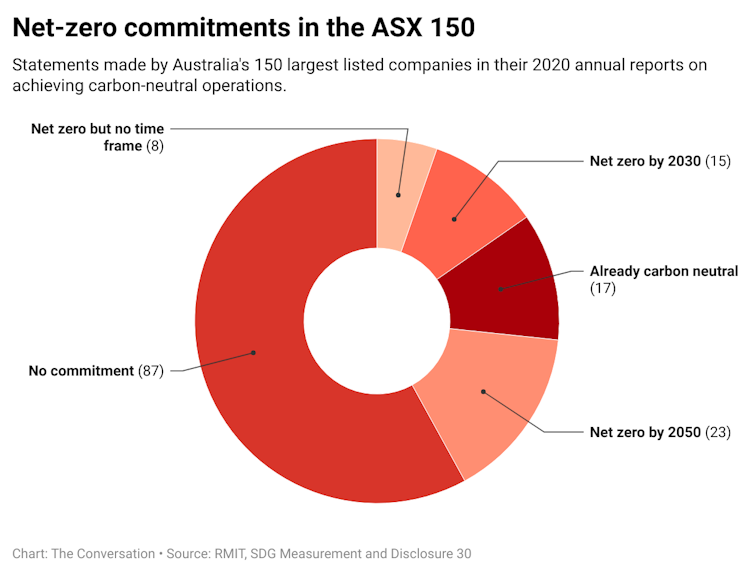
Measuring Sustainable Development Goals
These findings on corporate climate action are part of a broader research project by RMIT University and CPA Australia into action by Australian companies on the Sustainable Development Goals (SDGs).
This framework of 17 goals was adopted by the United Nations in 2015 to provide a uniform approach to defining and measuring progress on things such as eliminating poverty and discrimination, improving health and well-being, and achieving economic progress without harming the environment.
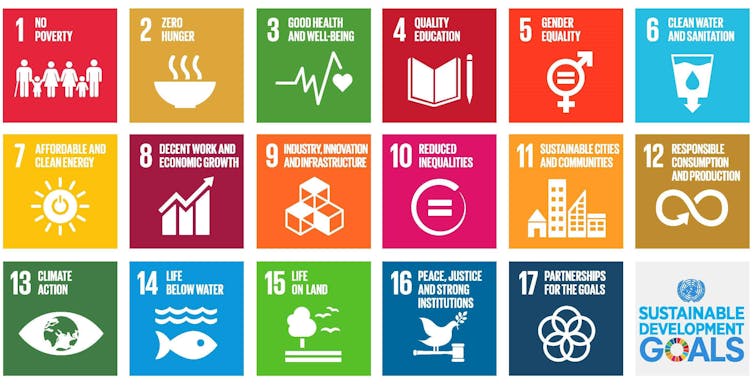
Each of the goals has a set of targets to measure achievement by 2030 (there are a total of 196 targets). On the goal of climate action (SDG13), one of the five targets is to integrate climate change measures into policies, strategies and planning.
The SDGs were originally intended for governments. But business committing and acting on them is fundamental for the transformational investments and new markets needed to promote more sustainable practices.
We have been monitoring the extent of corporate Australia’s commitment to the SDGs since 2018, based on disclosures in their annual reports. In particular we have been interested in evidence these commitments are meaningful, through companies having mechanisms to measure and report on what they have achieved.
Commitments Growing, But KPIs Lacking
The good news is that recognition and disclosure is growing. In 2018 just 56 of the ASX 150 (37%) mentioned the Sustainable Development Goals in their annual reports. In 2019 it was 72 (48%). In 2020 it was 94 (62%).
Statements on commitments, however, are not meaningful unless supported by evidence of actual progress. This requires having a plan to turn a commitment into an achievement, setting key performance indicators (KPIs), measuring success (or failure) and reporting on results.
On these things far less progress has been made. The number of companies aligning their KPIs with SDG targets has increased from two (1.3%) in 2018, to five (3.3%) in 2019, and 14 (9.3%) in 2020.
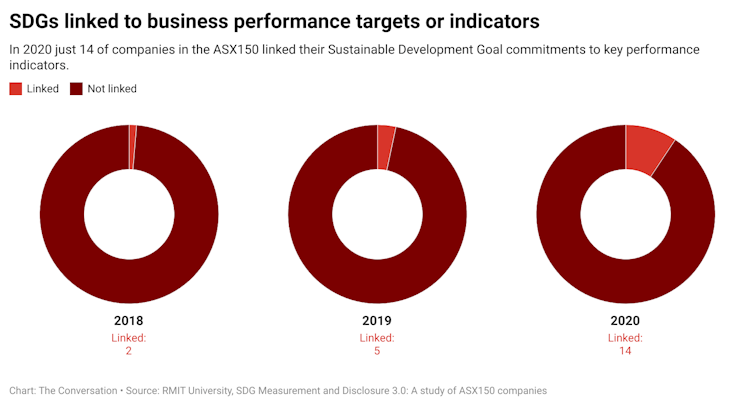
Including colourful SDG graphics in annual reports and having senior executives making public commitments is one thing. But without reporting on the actual measures to turn a commitment into actual progress, companies can easily be accused of lack of transparency or even green washing.
For corporate Australia to really claim the mantle of leading on climate action, our major companies must also lead in setting clear goals and timelines, defining measurements by which they will rate their success, and being fully transparent in reporting their progress.![]()
Renzo Mori Junior, Senior Advisor, Sustainable Development, RMIT University
This article is republished from The Conversation under a Creative Commons license. Read the original article.
What’s behind News Corp’s new spin on climate change?

Australia’s Murdoch-owned tabloid newspapers – including The Daily Telegraph, Herald Sun and Courier Mail – have embarked on a bold new climate change campaign.
This climate rebrand, dubbed “missionzero2050”, is billed by the company as “putting Australia on a path to a net zero future”.
The change has surprised Australian media observers and, no doubt, media consumers given News Corp’s long-held climate denialist stance, which is well documented in public commentary and research.
So why is this happening now? And what does it mean?
What Does The New Campaign Say?
Last Monday, News Corp’s tabloid mastheads began the new campaign with a 16-page wraparound supplement and a splashy online campaign championing the drive to cut climate warming emissions by 2050.
Read more: What is COP26 and why does the fate of Earth, and Australia's prosperity, depend on it?
News Corp must have done its climate communication research. It has assembled a collection of stories using best-practice climate communication techniques: telling a global story with a local face, visualising climate impacts and focusing on solutions, not creating fear.
Crucially, the campaign marks a change from News Corp’s long-held position on climate action. It’s moved from calling decarbonisation too expensive and bad for jobs (it tagged the cost at A$600 billion in 2015), to describing it now as a potential $2.1 trillion economic “windfall”, offering opportunities for 672,000 new jobs.
News Corp And Climate Change
What News Corp does matters, because it has extensive influence in Australia’s media market.
The company’s newspaper, radio, pay TV and online news portfolio gives it significant audience reach and huge political sway. In April, former Prime Minister Malcolm Turnbull labelled the Murdoch media “the most powerful political actor in Australia”.
Most people derive their understanding of climate change from the media. So News Corp’s audience reach (which included about 100 print and digital mastheads as of early 2021) has given it extensive influence over Australians’ knowledge of and opinions about climate change, profoundly shaping public debate.
Murdoch media outlets have denied the science of climate change and ridiculed climate action for more than a decade.
A 2013 study by the Australian Centre for Independent Journalism found climate denialist views in a third of Australian media coverage of climate change, and pointed to News Corp outlets as the key reason for this.
News Corp’s commentators have described those arguing for climate action as “alarmists” and “loons”, who are prone to “warming hysteria”. They have also said climate concern is a “cult of the elite” and the “effects of global warming have so far proved largely benign”.
Despite this, in 2019, Murdoch declared there were “no climate change deniers” in his company.
Signs Of A Mood Shift
This pivot on climate change was not entirely unexpected.
The company had been signalling a mood shift since early 2020, in the wake of its controversial reporting on the Black Summer bushfires, which saw it accused of downplaying the fires and fuelling misinformation about the cause.
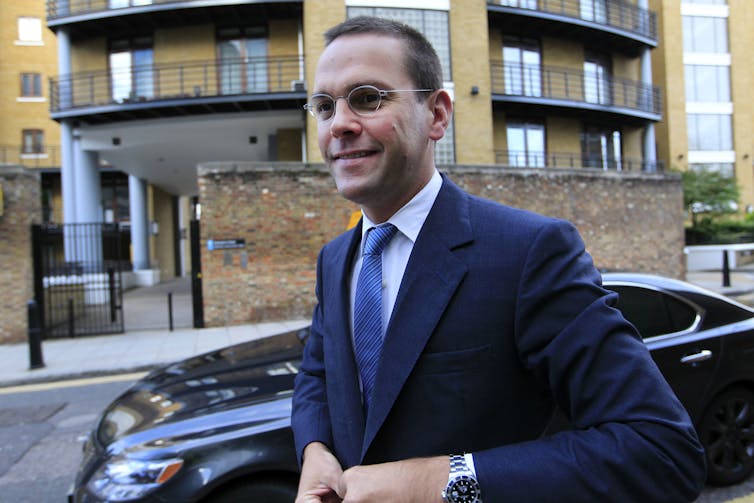
At that time, Rupert Murdoch’s son James expressed his concerns about the “ongoing denial” of climate change at News Corp in the face of “obvious evidence to the contrary”.
He subsequently resigned his position on the company’s board. Early last month, the Nine newspapers flagged an imminent change of stance on climate at News Corp, noting, “Rupert Murdoch’s global media empire has faced growing international condemnation and pressure from advertisers over its editorial stance on climate change”.
The Fine Print
Despite the gloss of missionzero2050 (the newspapers say they are only focusing on “positive stories” about creating “a clean future while having fun and feeling good at the same time”), a deeper analysis shows the campaign has some quite specific agendas, signalling its climate epiphany may be limited.
In the stories that make up the campaign, it is still rolling out business-as-usual narratives like:
defending Australia’s emissions as small compared to other countries, especially China (therefore suggesting we do not need to take drastic action)
framing renewables as an unreliable source of energy (so not an adequate replacement for fossil fuels)
promoting Australia’s coal as cleaner than other countries’ (some of it may be, but the International Energy Agency says the world must start quitting coal now to stay within safer global warming limits)
promoting gas as having half the emissions of coal (burning gas does emit less carbon dioxide, but its extraction also causes fugitive emissions of methane, a gas that’s about 30 times more powerful as a heat-trapping greenhouse gas than carbon dioxide over 100 years)
advocating carbon capture and storage (which is not yet a proven way to reduce emissions from burning fossil fuels)
criticising a carbon pollution price (economists widely agree this is the single most effective way to encourage polluters to reduce greenhouse gas emissons).
Read more: Australia's top economists back carbon price, say benefits of net-zero outweigh cost
Surprisingly, the campaign is making a big effort to spruik nuclear power. It states: “our aversion to nuclear energy defies logic” and advocates strongly for an Australian nuclear industry for “national security” purposes as well as energy.
Overall, the missionzero2050 agenda seems to be set on supporting new and existing extractive industries and Prime Minister Scott Morrison’s “gas-led recovery”.
Strangely, the campaign also emphasises “putting Australia first” – although efforts to deal with climate change must be inherently globally focused.
Loud Silences
What’s most perverse, perhaps, about missionzero2050 are the things it does not say or acknowledge. There has been no mention of News Corp’s years of intentionally undermining decarbonisation and helping to topple Australian leaders who advocated for climate action.
Oddly, News Corp has not muzzled its high-profile commentators. Columnist Andrew Bolt was quick to make it known that he thought the campaign was “rubbish”.
Nor has it aligned its advertising with the missionzero2050 message. For example, last Wednesday, the Herald Sun ran a half-page ad placed by the climate “sceptical” Climate Study Group about the “great climate change furphy,” discrediting climate science and advocating for more coal and nuclear power.
What Might It Mean?
The timing of the campaign, just as Morrison negotiates with the Nationals ahead of the COP26 climate conference, is likely to be no coincidence. It seems designed to provide cover for a potential shift on the part of the Coalition towards a mid-century net zero declaration.
Morrison is also under intense pressure from other world leaders to lift his ambitions on climate. He’ll be expected to bring new plans for emissions cuts to the table in Glasgow.
Some commentators have labelled the Murdoch pivot “greenwashing”. Others have called it a “desperate ploy to rehabilitate the public image of a leading climate villain”.
However perplexing the Murdoch papers’ climate U-turn may seem, at least Morrison will know Australia’s “most powerful political actor” is not likely to campaign against any 2050 net zero declaration.
Given News Corp’s power to subvert the national narrative on climate, that’s important if we want to see the action that’s so long overdue.![]()
Gabi Mocatta, Research Fellow in Climate Change Communication, Climate Futures Program, University of Tasmania, and Lecturer in Communication - Journalism, Deakin University
This article is republished from The Conversation under a Creative Commons license. Read the original article.
Australia’s net-zero plan fails to tackle our biggest contribution to climate change: fossil fuel exports
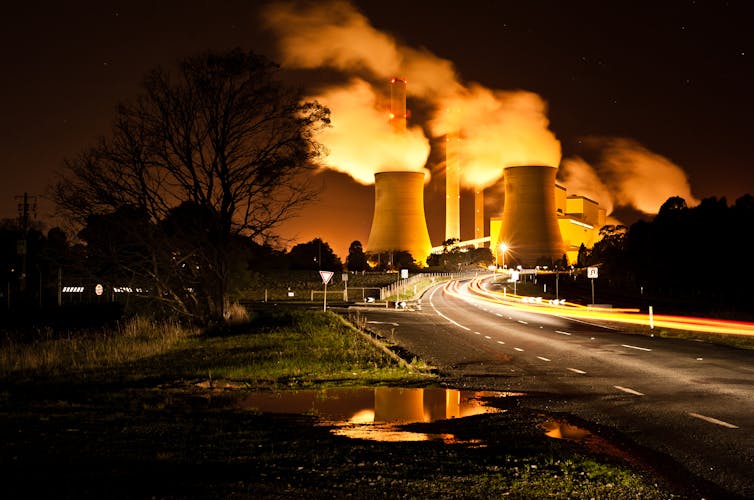
The Morrison government’s eleventh hour commitment to net zero by 2050 is a monumental failure.
Critics rightly point out the government’s plan involves no increase to Australia’s 2030 climate target, no new funding or policies and few concrete details of how reductions will be achieved – except a heavy reliance on technological solutions not yet invented.
What we do know is not encouraging. The questionable focus on subsidising technologies such as carbon capture and storage seems designed to allow the fossil fuel industry to keep operating for decades to come. There is also no detail on how the promised jobs and economic growth will be achieved, nor any plan to legislate the projected reductions in emissions.
But the most glaring gap is a complete failure to tackle Australia’s biggest contribution to climate change: our coal, gas and oil exports. What’s more, the government’s “technology not taxes” mantra belies the fact taxpayers, not big business, will incur a multi-billion dollar bill for emissions reduction.
No Net-Zero Without Exports
The government’s plan contains no credible strategy to reduce the enormous emissions produced by Australia’s fossil fuel industry, especially the export industry.
Australia’s fossil fuel exports have more than doubled since 2005. We are the world’s largest exporter of metalurgical coal and the third largest exporter of fossil fuels overall.
Read more: Between the lines, Morrison's plan has coal on the way out, with the future bright
The emissions caused by other countries burning Australia’s exported fossil fuels are more than double Australia’s domestic emissions.
Annual domestic greenhouse gas emissions in 2020 were around 494 million tonnes of carbon dioxide equivalent. Yet the emissions from exported coal and liquefied natural gas (LNG) alone were 1,073 million tonnes, according to my calculations using standard conversion factors. This is more than the emissions caused by the 2019-2020 bushfires.
For a net-zero plan not to include a strategy to phase out this enormous contribution to climate change is an abrogation of responsibility.
Australia is not responsible for all of the emissions produced by exported fossil fuels – after all other countries consume them. Still, Australia must take a high degree of responsibility given the billions of dollars in subsidies and environmental approvals that allow the industry to exist.
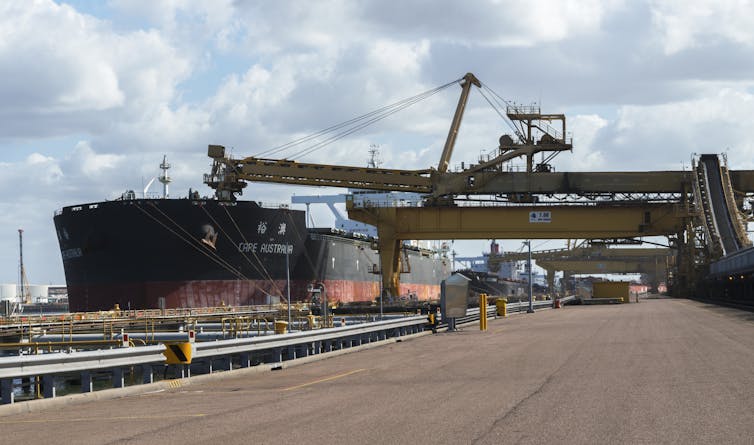
The supply of cheap, subsidised fossil fuels to global markets significantly worsens climate change, even if not all of the emissions from those exported fuels are Australia’s responsibility.
The government is asking the wrong questions. Instead of asking how it can reduce domestic emissions, it should be asking: what is Australia’s contribution to climate change and how can it be reduced? Given the combined emissions from Australia’s exported fossil fuels and domestic emissions are around 3-4% of global emissions, this must be addressed.
And there is clear evidence Australia’s fossil fuel industry will continue to enjoy strong support.
The net zero plan includes directing the Clean Energy Finance Corporation and the Australian Renewable Energy Agency to fund technologies like carbon capture and storage – the process of capturing carbon emissions from the source and storing in the ground – which will channel more taxpayer dollars into the fossil fuel industry.
The federal government also continues to grant approvals for new fossil fuel developments that will create millions of tonnes of CO₂ equivalent. This includes three new coal mines and a new major gas power plant in Kurri Kurri in the Hunter Valley.
These actions are not consistent with a real commitment to reducing Australia’s contribution to climate change.
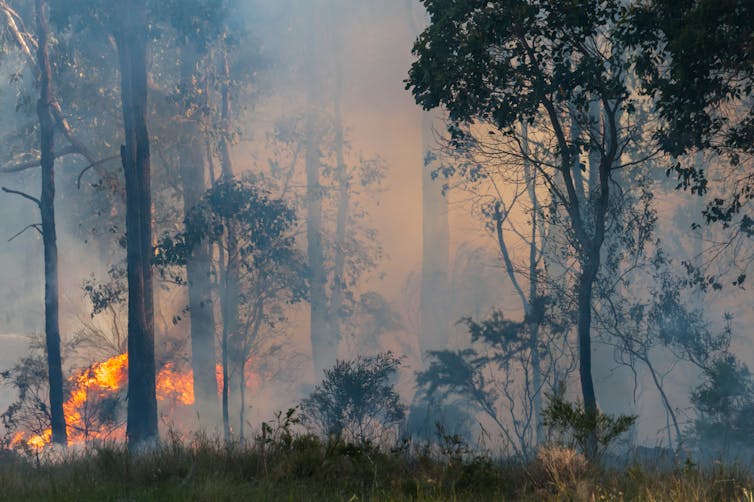
Technology Via Taxation
The support the fossil fuel industry will receive under the government’s plan also means the government mantra of “technology not taxes” is highly misleading.
The commitment in the government’s new plan to spend A$20 billion of taxpayer money on new technologies is using taxes to pay for climate action. Any subsidy for fossil fuel production, the development of new carbon capture and storage technologies or other low emissions technology, comes from taxation revenue.
There are many policies that would shift the burden of climate action away from taxpayers and onto the companies responsible for the pollution. This includes extracting the full historical social cost of carbon from big polluters or legislating a carbon price.
But as we all know, the Coalition scrapped the Gillard government’s carbon price in 2014 and such a policy is now considered political poison.
The bulk of federal tax revenue comes from individual taxpayers. The majority of the big fossil fuel exporters such as Shell or ExxonMobil, which have contributed huge volumes of greenhouse gases, pay little or no corporate tax. And under the Morrison plan they will not have to pay for their pollution.
The Plan Procrastinates On Climate Action
The timing of this plan is also deeply flawed. Even with Australia’s projected (not legislated) emissions reduction of 30-35% by 2030, this still leaves around 70% of the emissions reductions to happen after 2030. Given the urgency of the problem, the proportions ought to be the other way around.
In a briefing note released Monday by the ARC Centre of Excellence, Australian climate scientists say even if global emissions do reach net-zero by mid-century, temperatures are still likely to exceed 2℃ this century if short-term action doesn’t increase.
Read more: If all 2030 climate targets are met, the planet will heat by 2.7℃ this century. That's not OK
Australia’s weak targets are made worse by the fact our per capita emissions at 22 tonnes of CO₂ equivalent are double the OECD average. Australia’s long history of high domestic and exported emissions means we ought to be on top of the list of emission reducers, not at the bottom.
The position Australia finds itself in on the eve of the COP26 negotiations could not be more stark. We can either join the ranks of the climate ambitious and come up with a real plan with substantial interim targets. Or, we can join with the likes of Saudi Arabia and delay action further.
But we cannot claim to be taking climate action while simultaneously being one of the world’s largest coal exporters – and pretending it makes no contribution to climate change.![]()
Jeremy Moss, Professor of Political Philosophy, UNSW
This article is republished from The Conversation under a Creative Commons license. Read the original article.
If all 2030 climate targets are met, the planet will heat by 2.7℃ this century. That’s not OK
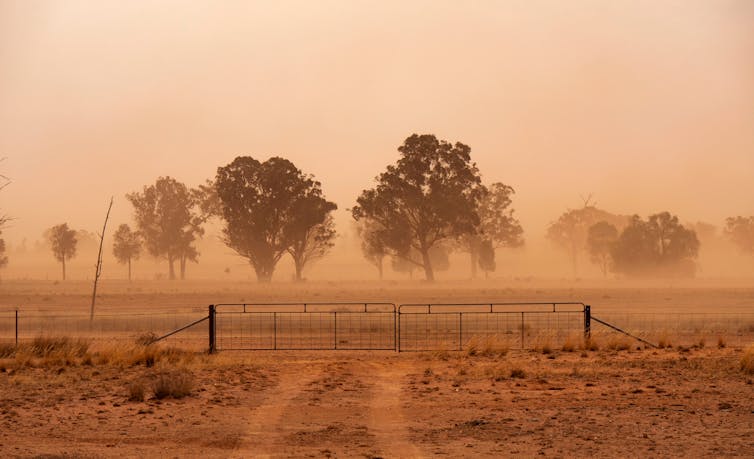
If nations make good on their latest promises to reduce emissions by 2030, the planet will warm by at least 2.7℃ this century, a report by the United Nations Environment Programme (UNEP) has found. This overshoots the crucial internationally agreed temperature rise of 1.5℃.
Released today, just days before the international climate change summit in Glasgow begins, UNEP’s Emissions Gap Report works out the difference between where greenhouse emissions are projected to be in 2030 and where they should be to avoid the worst climate change impacts.
It comes as the Morrison government yesterday officially committed to a target of net-zero emissions by 2050. The government made no changes to its paltry 2030 target to reduce emissions by between 26% and 28% below 2005 levels, but announced that Australia is set to beat this, and reduce emissions by up to 35%.
The UNEP report was conducted before Australia’s new 2050 target was announced, but even with this new pledge, global pledges will undoubtedly still be short of what’s needed.
The report found global targets for net-zero emissions by mid-century could cut another 0.5℃ off global warming. While this is a big improvement, it will still see temperatures rise to 2.2℃ this century. If we don’t close the global emissions gap, what will Australia, and the rest of world, be forced to endure?
Pledges Are Falling Short
As of August 30 (the date the UNEP report reviewed to), 120 countries had made new or updated pledges and announcements to cut emissions.
The US, for example, has set an ambitious new target of reducing emissions by 50-52% below 2005 levels in 2030. Similarly, the European Union will cut carbon emissions by at least 55% by 2030, compared with 1990 levels.
But the UNEP report shows all these pledges are falling short. It finds we must take an extra 28 million tonnes of carbon dioxide equivalent off annual emissions by 2030, over what’s already promised.
The UNEP also found that while effectively delivering on net-zero targets by mid-century could mitigate the predicted temperature rise, current plans are vague, with many delaying action until after 2030, which is too late. These net-zero targets, including Australia’s, are also based on technologies that don’t exist on a large-scale yet, such as carbon capture and storage.
UNEP’s findings echo a briefing note by Australian climate scientists on Monday, who say even if global emissions reach net-zero by mid-century, there’s still a high chance temperatures will exceed 2℃ this century if we neglect to increase short-term action.
When the UNEP report was conducted, 49 countries plus the EU had pledged a net-zero target, which accounts for a third of the global population and half of global emissions. Eleven of these targets are enshrined in law, which accounts for 12% of global emissions.
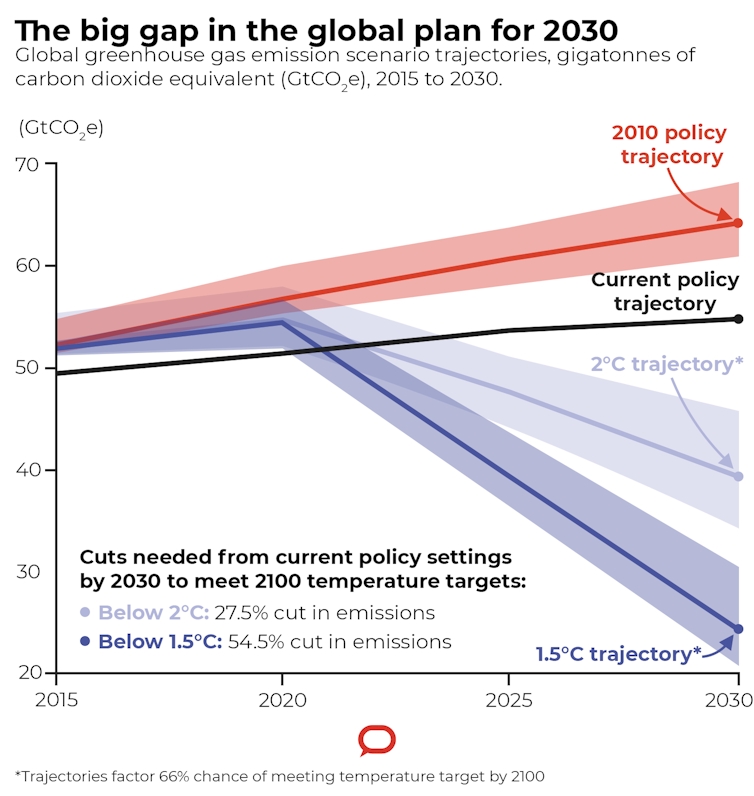
Did COVID-19 make a difference? While carbon emissions fell by 5-6% in 2020, this was due to widespread lockdowns and other restrictions worldwide, rather than long-lived changes in how society functions.
The report notes that as restrictions ease, emissions are expected to sharply rise again this year to a level only slightly lower than in 2019. To avoid the worst climate change effects, a sustainable year-on-year reduction in carbon emissions is required.
What Does This Mean For Australia?
To date, the world has warmed by about 1.2℃ since pre-industrial levels, and we’re already experiencing significant climate change impacts and worsening extreme weather events.
The western North America heatwave in late June this year saw temperature records and heat-related deaths spike. This event would have been virtually impossible without human-caused greenhouse gas emissions warming the planet.
Similarly, the extreme rainfall that led to recent floods in central Europe which tore through towns in July were very likely enhanced by global warming.
In Australia, we’ve seen our own share of extreme events in recent years that were intensified by climate change, including record hot summers and the devastating bushfires of 2019 and 2020.
Meeting the Paris Agreement and keeping global warming below 2℃ or even 1.5℃ would still lead to continued sea level rise and worsening heatwaves on land and in our oceans.
If we fail to meet the Paris Agreement and warm the world by closer to 3℃ by 2100, then the impacts of climate change worsen considerably.
Read more: Seriously ugly: here's how Australia will look if the world heats by 3°C this century
Warm water coral reefs, including the Great Barrier Reef, are already stressed by frequent bleaching events and might be on the brink already. Most coral reefs would likely not survive sustained 1.5℃ warming, much less likely 2℃ global warming, let alone 3℃ of warming. However, limiting warming to 1.5℃ rather 2℃ makes a huge difference for many other ecosystems.
Historically hot summers, such as the Angry Summer of 2012 and 2013 and the Black Summer of 2019 and 2020, would be cooler than most Australian summers in a 2-3℃ warmer world. Parts of Sydney and Melbourne would likely see 50℃ temperatures during heatwaves.

And at 2-3℃ global warming, most of the continent would experience more short bursts of extreme rainfall that causes flash flooding, Meanwhile, droughts are projected to worsen, especially in the southwest and southeast of the continent.
While Australia would experience major climate change impacts if the world fails to meet the Paris Agreement, the outlook is much worse and more devastating for less wealthy nations. Intensified heatwaves, more extreme rain events and droughts would make life harder for many, as developing nations don’t have the resources to adapt.
A Big Task For COP26
It is imperative we avoid the impacts of climate change that come with a 2 to 3℃ average temperature rise.
To have any chance at meeting the goals of the Paris Agreement, all countries will need to significantly increase their ambition and pledge much greater reductions in carbon emissions in Glasgow.
Wealthy, high-emitting countries should lead the way with stronger pledges, and agree on terms to finance climate mitigation and adaptation in developing countries.
Time is fast running out to avert more dangerous climate changes, and the world cannot afford a missed opportunity at COP26.
Read more: A successful COP26 is essential for Earth's future. Here's what needs to go right ![]()
Andrew King, ARC DECRA fellow, The University of Melbourne and Malte Meinshausen, A/Prof., School of Earth Sciences, The University of Melbourne
This article is republished from The Conversation under a Creative Commons license. Read the original article.
Australia’s stumbling, last-minute dash for climate respectability doesn’t negate a decade of abject failure
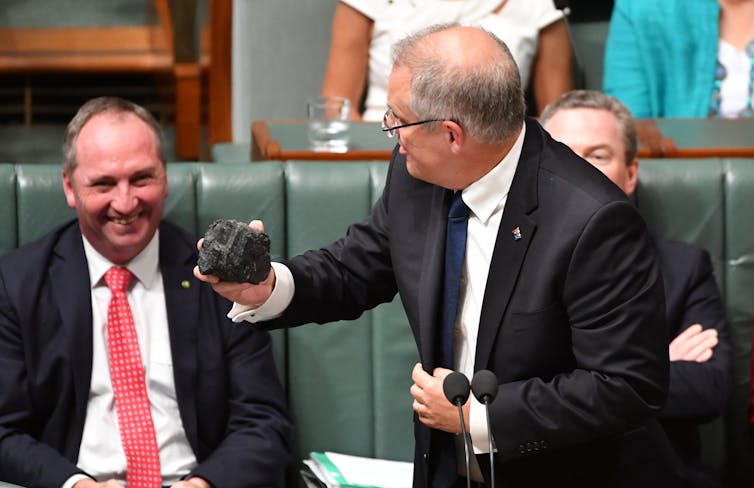
Prime Minister Scott Morrison is poised to announce Australia will adopt a target of net-zero greenhouse gas emissions by 2050. The pledge is long overdue – but the science tells us 2050 is about a decade too late to reach net-zero.
If we want to meet the goals of Paris climate agreement and limit global warming to 1.5℃ this century, what actually matters is the action we take this decade.
No doubt the federal government will expect to be congratulated for finally succumbing to the extraordinary international and community pressure brought in the lead up to the COP26 meeting in Glasgow.
But after eight years without an effective policy to reduce emissions, it’s sadly too little, too late.
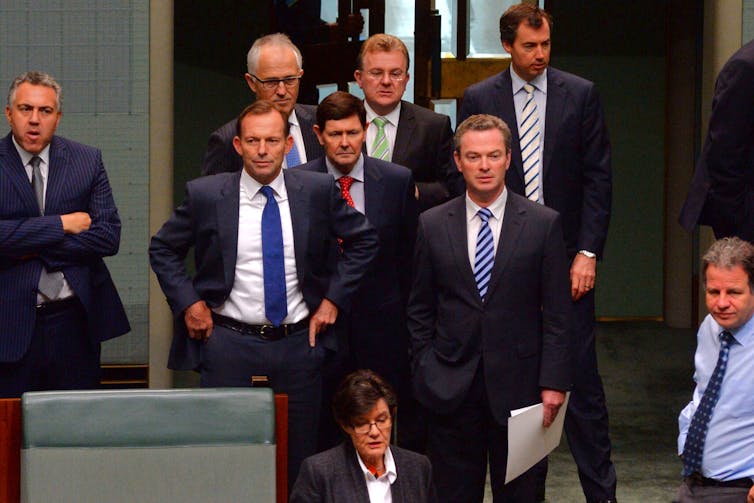
Balancing The Carbon Budget
The carbon budget approach is a useful way to assess whether climate targets are adequate.
Carbon budgets show the amount of carbon dioxide (CO₂) that can be emitted for a given level of global warming. It’s based on the (approximately linear) relationship between the amount of CO₂ emitted from all human sources since the beginning of industrialisation and the increase in global average surface temperature.
Once the carbon budget has been “spent”, or emitted, emissions must be at net-zero to avoid exceeding the corresponding temperature target. In a report released in April, the Climate Council used this approach to estimate Australia’s fair share of the global effort to meet the Paris targets.
To keep global temperatures below 1.5℃, and assuming humans emit CO₂ at the current rate of 43 billion tonnes a year, we have about 2.5 years of emissions still to spend. This pushes out to 5 years at a linear rate of emission reduction, achieving net-zero emissions by 2026.
Using the same logic, we also calculated when the world would exceed the Paris ambition of staying “well below 2℃” of warming, which we assume to be 1.8℃. Our remaining global carbon budget would be spent in about 9.5 years – so by about 2030. This pushes out to 19 years at a linear rate of emission reduction, so net-zero emissions would need to be achieved by about 2040.
Read more: Who's who in Glasgow: 5 countries that could make or break the planet's future under climate change
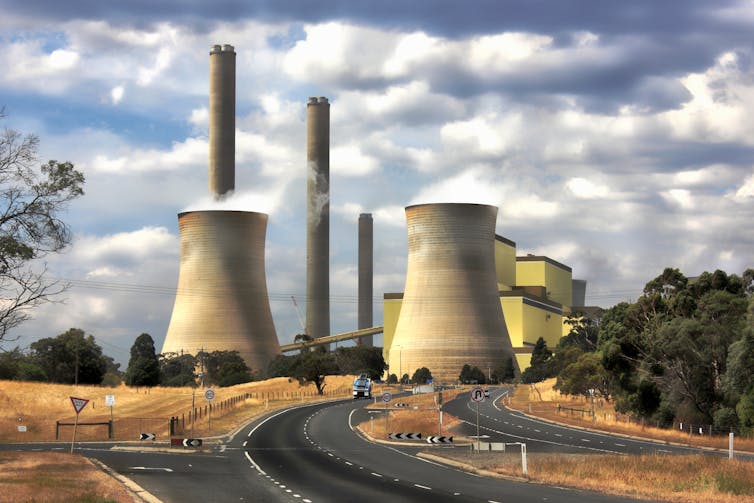
Australia’s Fair Share
These calculations relate to the global effort. So what is Australia’s fair contribution? In 2014 the Climate Change Authority, a panel of government-appointed experts, addressed this question.
The Climate Change Authority recommended Australia’s emissions be reduced by between 45% and 65% on 2005 levels by 2030. This approach generously allocated 0.97% of the remaining global carbon budget to Australia even though our population is about 0.33% of the global total.
Applying the same method today to estimate Australia’s share of the remaining carbon budget, we calculate Australia needs to achieve net-zero emissions within 16 years – around 2038 – and reduce emissions by 50% to 75% by 2030.
So any way you cut it, net-zero emissions by 2050 is too late.
And we must not forget, Australia is a wealthy country, with one of the highest per capita emission rates. That means doing our “fair share” should entail emissions reductions greater than the global average.
An emissions target for Australia of 75% below 2005 levels by 2030, and reaching net-zero emissions by 2035, is consistent with global efforts to limit warming to 1.8℃. There’s no doubt achieving a 75% reduction in Australia’s emissions by 2030 would be challenging, but this target is both scientifically robust and ethically responsible.
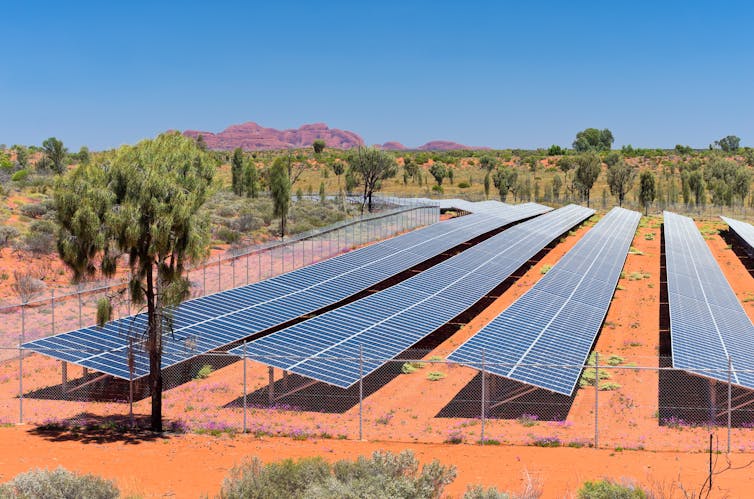
The World Is Watching
COP26 in Glasgow will be a defining moment in the global response to climate change. In the words of COP President-Designate Alok Sharma:
The choices we make in the year ahead will determine whether we unleash a tidal wave of climate catastrophe on generations to come. But the power to hold back that wave rests entirely with us.
More than 100 countries have pledged to achieve net-zero emissions by 2050, and the G7, consisting of the world’s largest developed economies, has committed to at least halving its emissions this decade. That’s the good news.
The bad news is that for all the ambition, a United Nations report released last month points to a 16% increase in emissions by 2030 compared to 2010. This would lead to about 2.7℃ warming by 2100.
Adding to the bad news, Australia is the worst-performing of all developed countries when it comes to meaningful climate action.
We ranked dead last in 2021 for action taken to reduce global greenhouse gas emissions in the UN Sustainable Development Report. The latest report from the Climate Council also ranks Australia last, compared to 30 other wealthy developed countries, for both climate policy/action, and fossil fuel dependence.
The list of poor rankings could go on, but there’s no doubt Australia is viewed as a global climate pariah.

Repairing The Damage
To turn this miserable position around, Australia should be going to Glasgow with a far stronger emissions-reduction target for 2030. This should be backed by a national plan to rapidly decarbonise our electricity and transport sectors, absorb more carbon in the landscape and support the transition of communities to new clean industries.
It goes without saying Australia must commit to ending public funding for coal, oil and gas – both their use and extraction. And we must say no to any new fossil fuel developments.
Australia must also make a new commitment to support climate action in developing countries because if poorer nations don’t also make the low-carbon transition, the whole world suffers. As a first step, Australia should follow the United States in doubling its current climate finance contribution, which would bring AUstralia’s contribution to least A$3 billion over 2021-2025.
A week before a major international meeting aimed at saving life on Earth, the Morrison government has apparently seen the light.
Granted, it’s a start. But the new targets are less than the bare minimum required. The government’s last-minute jump on the bandwagon is not quite the Damascene conversion it would have the public believe.
Will Australia’s stumbling, last-minute dash towards climate respectability be well-received in Glasgow? Don’t hold your breath.![]()
Lesley Hughes, Professor, Department of Biological Sciences, Macquarie University and Will Steffen, Emeritus Professor, Fenner School of Environment & Society, Australian National University
This article is republished from The Conversation under a Creative Commons license. Read the original article.
How much do marine heatwaves cost? The economic losses amount to billions and billions of dollars
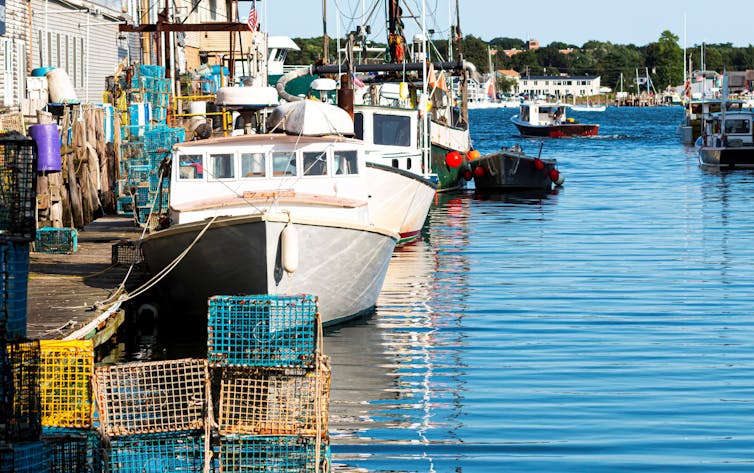
Marine heatwaves are catastrophic impacts of climate change many of us are already familiar with. But how much do they cost society?
During marine heatwaves, ocean temperatures can become so high that many species become stressed, or die. Critical coastal habitats, such as seagrass meadows, corals and kelp forests, can die out, limiting their natural capacity to store carbon dioxide and disrupting fisheries and tourism.
Until now, we’ve not understood how much society loses during marine heatwaves. This is what our new research, published in Science, sought to find out.
We looked at 34 marine heatwaves worldwide, and found one event in 2016 in southern Chile cost more than US$800 million (A$1.07 billion) in direct losses to aquaculture (cultivating aquatic plants and animals for food). Another heatwave in Shark Bay, Western Australia, resulted in US$3.1 billion (A$4.14 billion) per year in indirect losses, as a result of lost carbon storage when seagrass beds were impacted.
As world leaders prepare to meet for COP26 in Glasgow, they must keep these intensifying marine heatwaves front of mind. They are not only a stress test for the ocean’s ecosystems, but also for millions of people who rely on them – and who are already suffering.
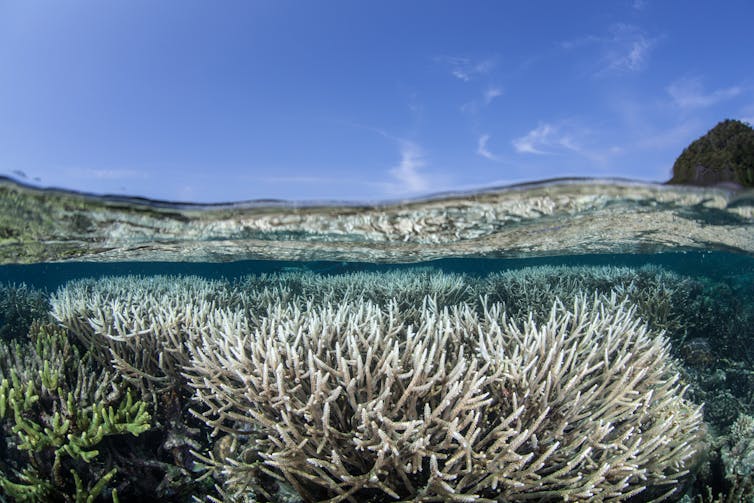
Marine Heatwaves Can Strike Anywhere
Marine heatwaves are defined as prolonged periods of very warm surface water temperatures that commonly last for weeks to months. Climate change has caused surface waters to warm at an average rate of 0.15℃ per decade over the past 40 years, leading to longer and more frequent heatwaves. Eight of the ten most severe events ever recorded took place in the past decade alone.
They can occur in any ocean for two reasons: heat entering the ocean via the atmosphere, or via ocean currents that bring warmer waters. When both processes occur together, they lead to heatwaves with even higher temperatures.
Heatwaves lead to major economic losses because they modify the ocean’s “ecosystem services” – the range of benefits healthy marine ecosystems provide to humans.
For example, fishers, aquaculturalists, and tourism operators all rely on “foundation” species – such as corals, kelps and seagrasses – because they provide habitat for a range of creatures.
When a marine heatwave destroys a foundation species, like we’ve seen in the recent, back-to-back coral bleaching events in Australia’s Great Barrier Reef, then the whole ecosystem suffers, and the knock-on socio-economic consequences can run into billions of dollars.
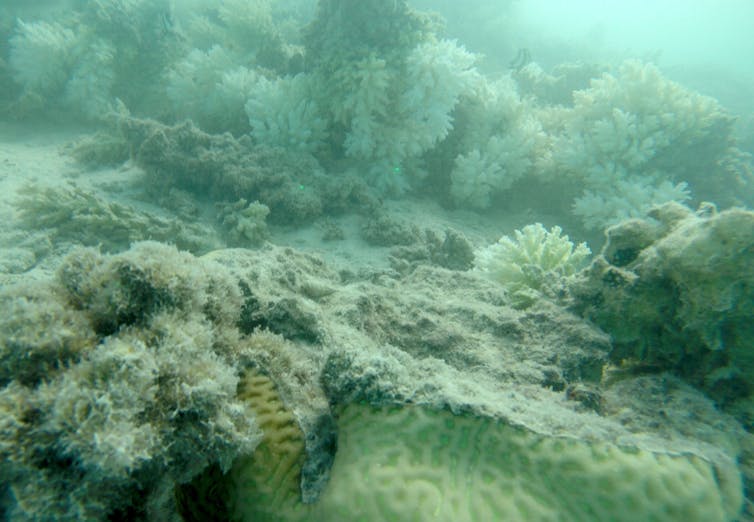

Billions Of Dollars Of Damage
Fortunately, extreme events occur rarely in any single location. This, however, means learning about them can be slow.
So to gain insight into these increasingly frequent disasters, we collated information on 34 marine heatwaves across all major ocean basins over the past 25 years. We found most resulted in declines in fish catch, the destruction of kelp forests or seagrass meadows, or led to mass deaths of wildlife.
The longest-lived marine heatwave in the North Pacific, known as “the Blob”, persisted for over one year in 2015 and 2016, and raised average water temperatures along the United States west coast by 2-4℃.
It led to declines in fish catch, killed thousands of seabirds and marine mammals, and saw new species move toward the pole where the water was uncharacteristically warm. Harmful algal blooms led to the closure of the Dungess Crab Fishery – a US$97 million (A$130 million) loss for fishers.
Heatwaves also limit ecosystem services relating to carbon sequestration. Seagrass, kelp, coral and other habitat-forming species store carbon dioxide in the same way forests do on land. When they die, this carbon is released.
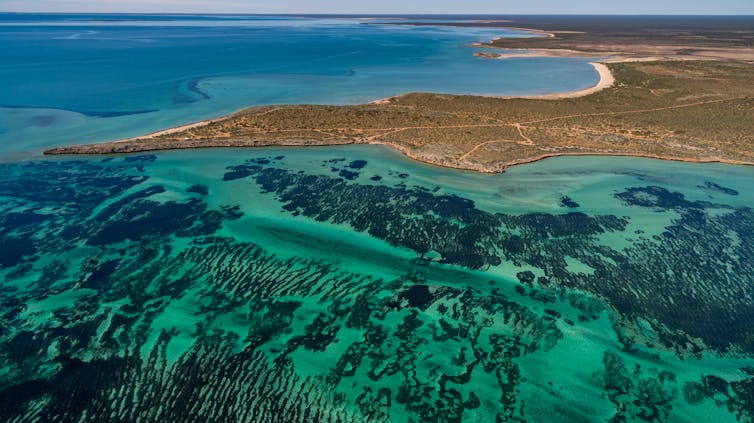
Shark Bay in Western Australia is home to one of the world’s largest seagrass meadows, at 4,000 square kilometres. In 2011, 34% of this seagrass died after a marine heatwave struck, releasing between 2 and 9 billion tonnes of CO₂ into the atmosphere over the following three years. The indirect economic loss from this event was estimated to be US$3.1 billion (A$4.14 billion) per year, based on the ecosystem service value of the seagrass’ capacity to store carbon.
This heatwave also wiped out kelp habitats along 100km of WA’s coast. Abalone, scallop and swimmer crab fisheries were forced to close, and fish species that relied on the kelp declined. Local businesses that supported fishers also lost revenue.
Read more: A marine heatwave has wiped out a swathe of WA's undersea kelp forest
While most impacts have been negative, we did note some short-term positive benefits from dramatically warmer waters. This is mainly due to new species following the warmer water to a region, resulting in more fishing opportunities.
For example, a 2012 marine heatwave in the Gulf of Maine, US, resulted in a US$38 million loss in a lobster fishery. This was due to an unexpected influx of lobsters that created a glut of product, and a rapid drop in the price lobster fishers received for their catches.
However, a second marine heatwave in 2016 saw the same lobster fishery earn an extra US$103 million, as a result of experience gained since the first, which allowed them to capitalise on the higher lobster catch rates.
We Must Learn To Cope
Our research makes conservative estimates – the true costs of marine heatwaves are likely to be much greater, because many socioeconomic effects likely remain unknown and under reported. This is particularly true for regions with limited scientific capacity, and where marine heatwaves have not been widely studied, such as in the Indian Ocean.
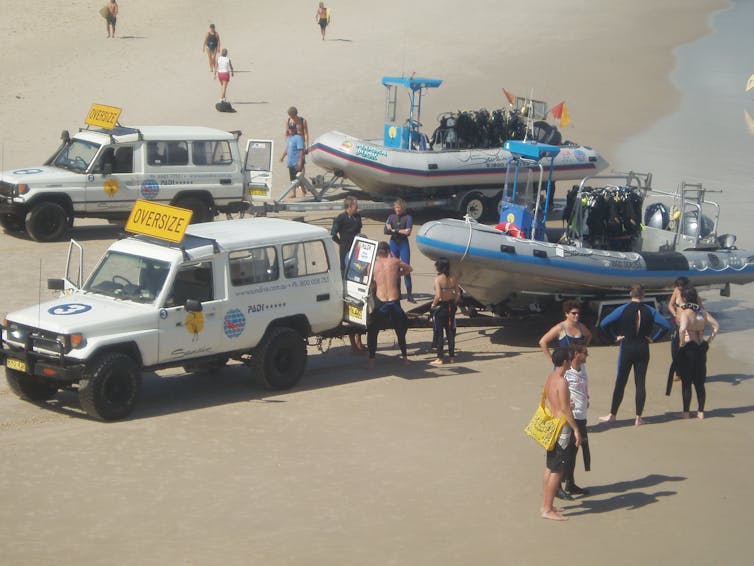
As with every climate-related threat, reducing greenhouse gases and a commitment to the Paris Agreement is the best, long-term solution. However, given we’ve already seen a 50% increase in marine heatwave days since 1925, we will undoubtedly see heatwaves intensify further, even if the world succeeds in holding average global warming to between 1.5 and 2℃.
So, we must find a way to prepare for more frequent and intense marine heatwaves to cope better when they hit.
Our current efforts are in forecasting extreme events. Currently, scientists who forecast these events can give only less than a week’s notice for when a heatwave is likely to strike.
Read more: We just spent two weeks surveying the Great Barrier Reef. What we saw was an utter tragedy
Hopefully, with enough notice, fishers may relocate or prepare for harvesting new species, aquaculture businesses can harvest early, and conservation managers may prepare for an influx of hungry animals. And perhaps, in future, coral reef managers may to deploy new technologies to shade and cool critical reefs.
Developing responses like these to help us live with marine heatwaves must be supported by awareness of current events. If climate change mitigation is slow and the planet heats beyond the crucial 2℃ temperature rise, adaptation will be even more important.![]()
Alistair Hobday, Senior Principal Research Scientist - Oceans and Atmosphere, CSIRO; Dan Smale, Research Fellow in Marine Ecology, Marine Biological Association; Kathryn Smith, Postdoctoral Research Assistant, Marine Biological Association, and Thomas Wernberg, Professor, The University of Western Australia
This article is republished from The Conversation under a Creative Commons license. Read the original article.
Scott Morrison’s deal with the Nationals must not ignore land stewardship – an attractive, low-hanging fruit
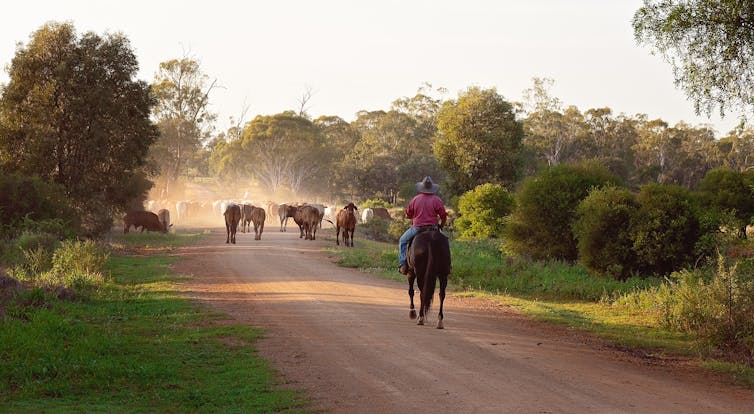
The Nationals this week finally agreed to a plan of net-zero emissions by 2050. Farmers say they’ve done much of the heavy lifting on Australia’s emissions reduction and had been calling for a deal that addressed purported inequities of the past.
The terms of the agreement between Morrison and the Nationals have not been formally released. We know it involves five-yearly reviews by the Productivity Commission to assess how regional Australia is faring throughout the transition, cutting red tape for farmers and a new cabinet position for the Nationals.
But so far, there’s no clear indication that the deal includes expanded measures to help farmers restore rural environments. This would be a huge missed opportunity.
Agriculture covers 58% of Australia’s land mass, and restoring farmland is one of the best ways to tackle climate and environmental issues over the long-term. A recent study I was involved in explored how farmers can best be supported to do this.
It found landholders are often forced to rely on unreliable and insufficient funding and support when restoring land. What’s more, no coordinated strategy exists to maximise the value land-stewardship programs might deliver.

Why Farmer Think They’re Owed
Sentiment from farmers that they’re owed compensation for their emissions reduction efforts stems back to the 1990s and early 2000s. It was then, according to the National Farmers Federation, that Queensland and New South Wales farmers became “victims of land clearing legislation that removed their property rights, without compensation”.
The belief is linked to the unique concession Australia won in the 1997 Kyoto Protocol. Following an extraordinary 1990 spike in land clearing, Australia was allowed to count reduced land-clearing toward its emissions reductions commitments.
Restrictions on land clearing mean more vegetation is retained, leading to carbon dioxide being drawn down from the atmosphere and stored in plants and soil. This limit to land-clearing relieved pressure on other sectors of the economy to reduce carbon emissions.
So it’s understandable the National Party wanted compensation for farmers, and used the net-zero emissions target as a negotiation opportunity. Details of the final deal are expected in coming months.
It would be in everyone’s interest if the measures included ways to boost environmental stewardship of rural areas. This would not only help farmers reduce emissions over the long term, but help improve Australia’s very poor environmental record.
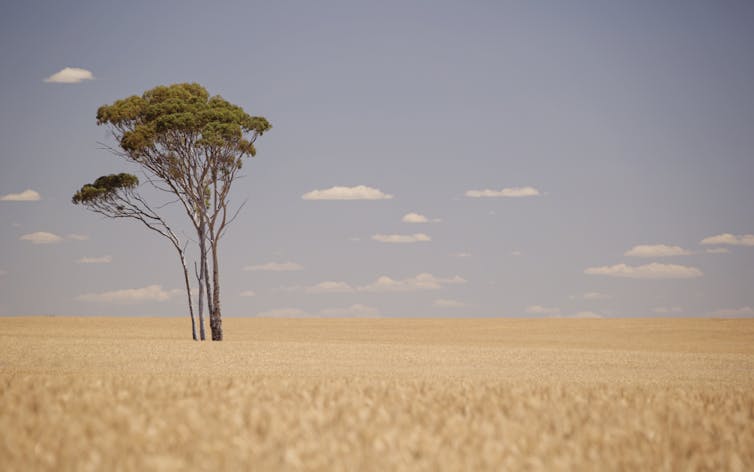
Well Designed, Well Funded Programs
Land stewardship involves efforts to enable landowners and others to responsibly manage and protect land and environmental assets.
This year’s federal budget included A$32.1 million for “biodiversity stewardship”, in which farmers who adopt more sustainable practices can earn money on private markets. The funding includes programs to protect existing native vegetation, implement a certification scheme and set up a trading platform.
But as others have noted, the experience of environmental markets and certification schemes to date suggests they won’t effectively encourage farmers to take part.
Farmers often have unreliable or weak cash-flows, due to seasonal conditions, natural disasters, and the nature of commodity markets. More government funding and policy support is needed to promote responsible land management, as well as to enforce rules prohibiting environmentally damaging practices.
A study I was recently involved in found current systems to achieve this are inadequate.
Well-designed, well-funded and long-term programs would create a significant win-win for the farming sector and for the environment, and shore up Australia’s credentials internationally. These measures should make it easy and affordable for farmers to:
conserve water
protect soil
avoid manure and chemical runoff, which can contaminate soil and waterways
reduce land-clearing
support conservation of plants and animals
avoid disturbance to habitats
minimise chemical use.
Read more: Nature is a public good. A plan to save it using private markets doesn't pass muster
Make It Appealing To Farmers
Any new climate deal for agriculture should focus on removing hurdles to practical land stewardship. Industry-led sustainability initiatives show what’s possible.
Examples include:
myBMP, a best practice training management program helping the cotton industry manage land sustainably and reduce water use
Sustainawool, a similar example from the wool sector
Freshcare Environmental which achieves similar outcomes in horticulture.
But current incentives and support for farmers to participate in programs like these are not strong enough to ensure a large proportion of farmers take part.
We need a national stewardship investment strategy, developed in partnership with industry and involving sufficient long-term government funding.
A New Authority
Payments for environmental services and good stewardship practices often promote good environmental stewardship, but require sufficient investment to work. The National Farmers Federation and KPMG have proposed such a scheme for agriculture.
Our study recommended the creation of an authority to lead the design and initial implementation of a national rural stewardship investment strategy.
It could be created via a successor to the Council of Australian Governments (COAG) or a special purpose national and state body. We proposed this new authority should be responsible for initiating a national stewardship funding program within a specified time frame, such as three years.
The authority should be supported by research from the Productivity Commission or a similar body. Crucially, it must consult widely with environmental and primary production stakeholders and First Nations people and ensure they’re involved in design and decision-making processes.
Well-designed stewardship work can create efficiencies. A recent study, for example, devised a feasible plan to restore 30% of native vegetation cover across almost all degraded ecosystems on Australia’s marginal farming land, by spending just A$2 billion a year for about 30 years.
The plan could restore 13 million hectares of degraded land without affecting food production or urban areas, the authors found.
A feasible rural stewardship investment strategy for Australia is essential, possible, and would deliver a much needed win-win for landholders and the planet. It would be a shame for Australian politicians not to harvest such attractive, low-hanging fruit.
Read more: A successful COP26 is essential for Earth's future. Here's what needs to go right ![]()
Paul Martin, Director, Australian Centre for Agriculture and Law, University of New England
This article is republished from The Conversation under a Creative Commons license. Read the original article.
Bushcare In Pittwater
Where we work Which day What time
Avalon
Angophora Reserve 3rd Sunday 8:30 - 11:30am
Avalon Dunes 1st Sunday 8:30 - 11:30am
Avalon Golf Course 2nd Wednesday 3 - 5:30pm
Careel Creek 4th Saturday 8:30 - 11:30am
Toongari Reserve 3rd Saturday 9 - 12noon (8 - 11am in summer)
Bangalley Headland 2nd Sunday 9 to 12noon
Bayview
Winnererremy Bay 4th Sunday 9 to 12noon
Bilgola
North Bilgola Beach 3rd Monday 9 - 12noon
Algona Reserve 1st Saturday 9 - 12noon
Plateau Park 1st Friday 8:30 - 11:30am
Church Point
Browns Bay Reserve 1st Tuesday 9 - 12noon
McCarrs Creek Reserve Contact Bushcare Officer To be confirmed
Clareville
Old Wharf Reserve 3rd Saturday 8 - 11am
Elanora
Kundibah Reserve 4th Sunday 8:30 - 11:30am
 Mona Vale
Mona Vale Mona Vale Beach Basin 1st Saturday 8 - 11am
Mona Vale Dunes 2nd Saturday +3rd Thursday 8:30 - 11:30am
Newport
Bungan Beach 4th Sunday 9 - 12noon
Crescent Reserve 3rd Sunday 9 - 12noon
North Newport Beach 4th Saturday 8:30 - 11:30am
Porter Reserve 2nd Saturday 8 - 11am
North Narrabeen
Irrawong Reserve 2nd Saturday 2 - 5pm
Palm Beach
North Palm Beach Dunes 3rd Saturday 9 - 12noon
Scotland Island
Catherine Park 2nd Sunday 10 - 12:30pm
Elizabeth Park 1st Saturday 9 - 12noon
Pathilda Reserve 3rd Saturday 9 - 12noon
Warriewood
Warriewood Wetlands 1st Sunday 8:30 - 11:30am
Whale Beach
Norma Park 1st Friday 9 - 12noon
Western Foreshores
Coopers Point, Elvina Bay 2nd Sunday 10 - 1pm
Rocky Point, Elvina Bay 1st Monday 9 - 12noon
Gardens And Environment Groups And Organisations In Pittwater
Avalon Golf Course Bushcare Needs You
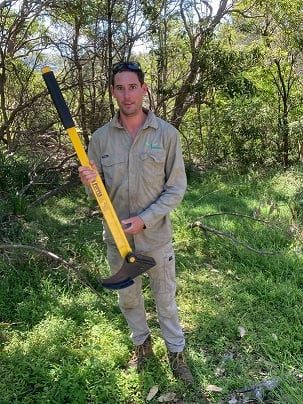
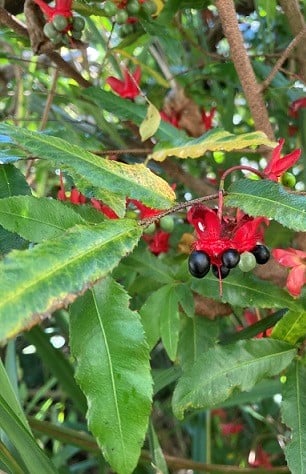
Pittwater Reserves + Others
A History Of The Campaign For Preservation Of The Warriewood Escarpment by David Palmer OAM and Angus Gordon OAM
Angophora Reserve - Angophora Reserve Flowers
Annie Wyatt Reserve - A Pictorial
Avalon's Village Green: Avalon Park Becomes Dunbar Park - Some History + Toongari Reserve and Catalpa Reserve
Bairne Walking Track Ku-Ring-Gai Chase NP by Kevin Murray
Bangalley Headland Bangalley Mid Winter
Banksias of Pittwater
Barrenjoey Headland: Spring flowers Barrenjoey Headland after fire
Bayview Baths
Bayview Wetlands
Beeby Park
Bilgola Beach
Botham's Beach
Bungan Beach Bush Care
Careel Bay Saltmarsh plants
Careel Bay Birds
Careel Bay Clean Up day
Careel Bay Playing Fields History and Current
Careel Creek
Careel Creek - If you rebuild it they will come
Centre trail in Ku-ring-gai Chase National Park
Chiltern Track- Ingleside by Marita Macrae
Clareville Beach
Clareville/Long Beach Reserve + some History
Coastal Stability Series: Cabbage Tree Bay To Barrenjoey To Observation Point by John Illingsworth, Pittwater Pathways, and Dr. Peter Mitchell OAM
Cowan Track by Kevin Murray
Curl Curl To Freshwater Walk: October 2021 by Kevin Murray and Joe Mills
Currawong State Park Currawong Beach + Currawong Creek
Deep Creek To Warriewood Walk photos by Joe Mills
Drone Gives A New View On Coastal Stability; Bungan: Bungan Headland To Newport Beach + Bilgola: North Newport Beach To Avalon + Bangalley: Avalon Headland To Palm Beach
Dunbar Park - Some History + Toongari Reserve and Catalpa Reserve
Dundundra Falls Reserve: August 2020 photos by Selena Griffith - Listed in 1935
Elsie Track, Scotland Island
Elvina Track in Late Winter 2019 by Penny Gleen
Elvina Bay Walking Track: Spring 2020 photos by Joe Mills
Elvina Bay-Lovett Bay Loop Spring 2020 by Kevin Murray and Joe Mills
Fern Creek - Ingleside Escarpment To Warriewood Walk + Some History photos by Joe Mills
Ingleside
Ingleside Wildflowers August 2013
Irrawong - Ingleside Escarpment Trail Walk Spring 2020 photos by Joe Mills
Irrawong - Mullet Creek Restoration
Katandra Bushland Sanctuary - Ingleside
McCarrs Creek
McCarr's Creek to Church Point to Bayview Waterfront Path
McKay Reserve
Mona Vale Beach - A Stroll Along, Spring 2021 by Kevin Murray
Mona Vale Headland, Basin and Beach Restoration
Mount Murray Anderson Walking Track by Kevin Murray and Joe Mills
Mullet Creek
Narrabeen Creek
Narrabeen Lagoon Catchment: Past Notes Present Photos by Margaret Woods
Narrabeen Lagoon State Park
Narrabeen Lagoon State Park Expansion
Narrabeen Rockshelf Aquatic Reserve
Nerang Track, Terrey Hills by Bea Pierce
Newport Bushlink - the Crown of the Hill Linked Reserves
Newport Community Garden - Woolcott Reserve
Newport to Bilgola Bushlink 'From The Crown To The Sea' Paths: Founded In 1956 - A Tip and Quarry Becomes Green Space For People and Wildlife
Pittwater spring: waterbirds return to Wetlands
Pittwater's Lone Rangers - 120 Years of Ku-Ring-Gai Chase and the Men of Flowers Inspired by Eccleston Du Faur
Pittwater's Parallel Estuary - The Cowan 'Creek
Riddle Reserve, Bayview
Salvation Loop Trail, Ku-Ring-Gai Chase National Park- Spring 2020 - by Selena Griffith
Stapleton Reserve
Stapleton Park Reserve In Spring 2020: An Urban Ark Of Plants Found Nowhere Else
The Chiltern Track
The Resolute Beach Loop Track At West Head In Ku-Ring-Gai Chase National Park by Kevin Murray
Towlers Bay Walking Track by Joe Mills
Trafalgar Square, Newport: A 'Commons' Park Dedicated By Private Landholders - The Green Heart Of This Community
Turimetta Beach Reserve by Joe Mills, Bea Pierce and Lesley
Turimetta Beach Reserve: Old & New Images (by Kevin Murray) + Some History
Turimetta Headland
Warriewood Wetlands and Irrawong Reserve
Whale Beach Ocean Reserve: 'The Strand' - Some History On Another Great Protected Pittwater Reserve
Winji Jimmi - Water Maze

New Shorebirds WingThing For Youngsters Available To Download
A Shorebirds WingThing educational brochure for kids (A5) helps children learn about shorebirds, their life and journey. The 2021 revised brochure version was published in February 2021 and is available now. You can download a file copy here.
If you would like a free print copy of this brochure, please send a self-addressed envelope with A$1.10 postage (or larger if you would like it unfolded) affixed to: BirdLife Australia, Shorebird WingThing Request, 2-05Shorebird WingThing/60 Leicester St, Carlton VIC 3053.

 Shorebird Identification Booklet
Shorebird Identification Booklet
The Migratory Shorebird Program has just released the third edition of its hugely popular Shorebird Identification Booklet. The team has thoroughly revised and updated this pocket-sized companion for all shorebird counters and interested birders, with lots of useful information on our most common shorebirds, key identification features, sighting distribution maps and short articles on some of BirdLife’s shorebird activities.
The booklet can be downloaded here in PDF file format: http://www.birdlife.org.au/documents/Shorebird_ID_Booklet_V3.pdf
Paper copies can be ordered as well, see http://www.birdlife.org.au/projects/shorebirds-2020/counter-resources for details.
Download BirdLife Australia's children’s education kit to help them learn more about our wading birdlife
Shorebirds are a group of wading birds that can be found feeding on swamps, tidal mudflats, estuaries, beaches and open country. For many people, shorebirds are just those brown birds feeding a long way out on the mud but they are actually a remarkably diverse collection of birds including stilts, sandpipers, snipe, curlews, godwits, plovers and oystercatchers. Each species is superbly adapted to suit its preferred habitat. The Red-necked Stint is as small as a sparrow, with relatively short legs and bill that it pecks food from the surface of the mud with, whereas the Eastern Curlew is over two feet long with a exceptionally long legs and a massively curved beak that it thrusts deep down into the mud to pull out crabs, worms and other creatures hidden below the surface.
Some shorebirds are fairly drab in plumage, especially when they are visiting Australia in their non-breeding season, but when they migrate to their Arctic nesting grounds, they develop a vibrant flush of bright colours to attract a mate. We have 37 types of shorebirds that annually migrate to Australia on some of the most lengthy and arduous journeys in the animal kingdom, but there are also 18 shorebirds that call Australia home all year round.
What all our shorebirds have in common—be they large or small, seasoned traveller or homebody, brightly coloured or in muted tones—is that each species needs adequate safe areas where they can successfully feed and breed.
The National Shorebird Monitoring Program is managed and supported by BirdLife Australia.
This project is supported by Glenelg Hopkins Catchment Management Authority and Hunter Local Land Services through funding from the Australian Government’s National Landcare Program. Funding from Helen Macpherson Smith Trust and Port Phillip Bay Fund is acknowledged.
The National Shorebird Monitoring Program is made possible with the help of over 1,600 volunteers working in coastal and inland habitats all over Australia.
The National Shorebird Monitoring program (started as the Shorebirds 2020 project initiated to re-invigorate monitoring around Australia) is raising awareness of how incredible shorebirds are, and actively engaging the community to participate in gathering information needed to conserve shorebirds.
In the short term, the destruction of tidal ecosystems will need to be stopped, and our program is designed to strengthen the case for protecting these important habitats.
In the long term, there will be a need to mitigate against the likely effects of climate change on a species that travels across the entire range of latitudes where impacts are likely.
The identification and protection of critical areas for shorebirds will need to continue in order to guard against the potential threats associated with habitats in close proximity to nearly half the human population.
Here in Australia, the place where these birds grow up and spend most of their lives, continued monitoring is necessary to inform the best management practice to maintain shorebird populations.
BirdLife Australia believe that we can help secure a brighter future for these remarkable birds by educating stakeholders, gathering information on how and why shorebird populations are changing, and working to grow the community of people who care about shorebirds.
To find out more visit: http://www.birdlife.org.au/projects/shorebirds-2020/shorebirds-2020-program
Aussie Bread Tags Collection Points

The Force Awakens In A Newborn Star: NASA Image Of The Day
October 26, 2021
This celestial lightsaber does not lie in a galaxy far, far away, but rather inside our home galaxy, the Milky Way. It's inside a turbulent birthing ground for new stars known as the Orion B molecular cloud complex, located 1,350 light-years away.
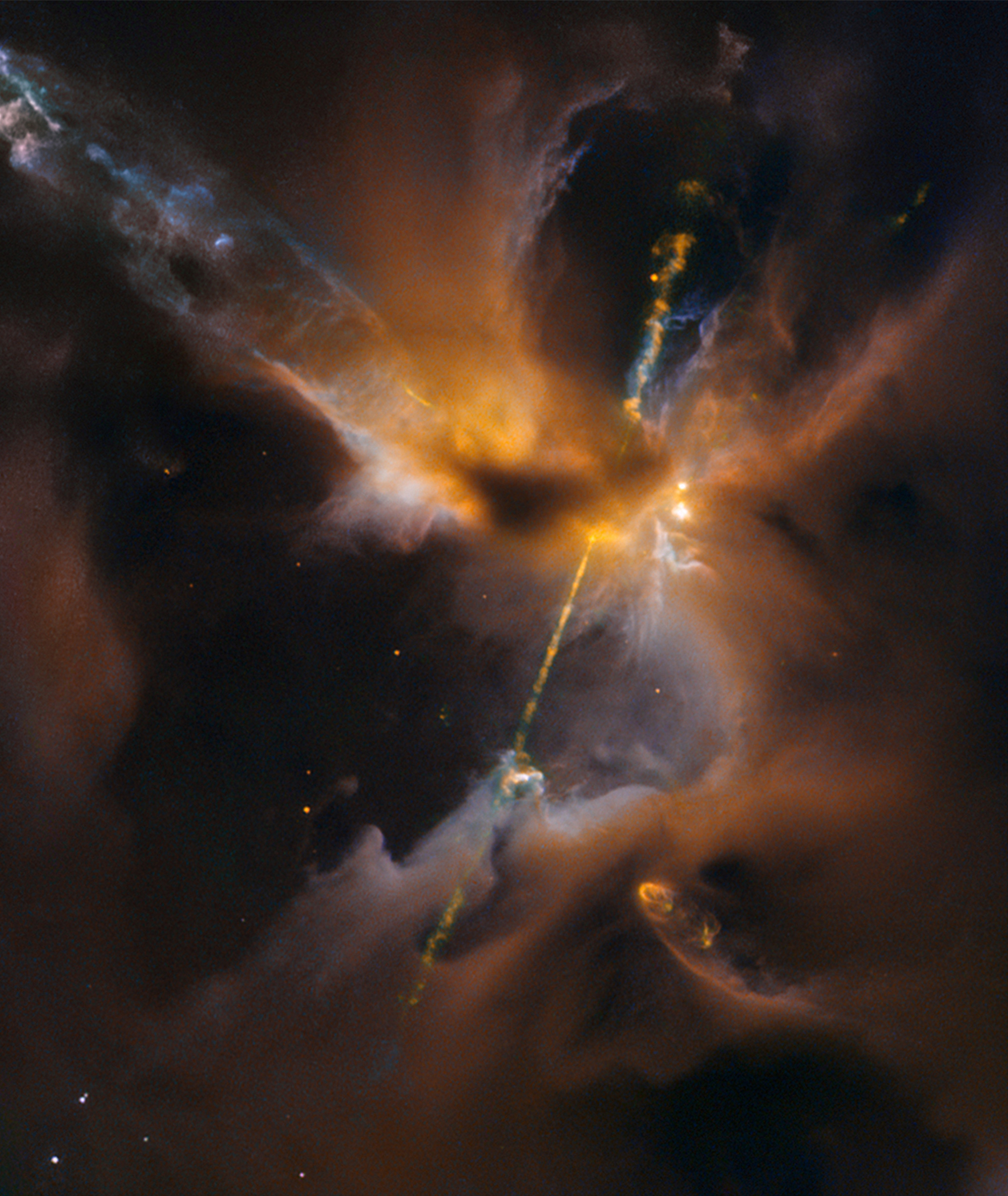
When stars form within giant clouds of cool molecular hydrogen, some of the surrounding material collapses under gravity to form a rotating, flattened disk encircling the newborn star.
Though planets will later congeal in the disk, at this early stage the protostar is feeding on the disk with a Jabba-like appetite. Gas from the disk rains down onto the protostar and engorges it. Superheated material spills away and is shot outward from the star in opposite directions along an uncluttered escape route — the star’s rotation axis.
Shock fronts develop along the jets and heat the surrounding gas to thousands of degrees Fahrenheit. The jets collide with the surrounding gas and dust and clear vast spaces, like a stream of water ploughing into a hill of sand. The shock fronts form tangled, knotted clumps of nebulosity and are collectively known as Herbig-Haro (HH) objects. The prominent HH object shown in this image is HH 24.
Just to the right of the cloaked star, a couple of bright points are young stars peeking through and showing off their own faint lightsabers — including one that has bored a tunnel through the cloud towards the upper-right side of the picture.
Overall, just a handful of HH jets have been spotted in this region in visible light, and about the same number in the infrared. Hubble’s observations for this image were performed in infrared light, which enabled the telescope to peer through the gas and dust cocooning the newly forming stars and capture a clear view of the HH objects.
These young stellar jets are ideal targets for NASA’s upcoming James Webb Space Telescope, which will have even greater infrared wavelength vision to see deeper into the dust surrounding newly forming stars.
The Hubble Space Telescope is a project of international cooperation between NASA and the European Space Agency. NASA’s Goddard Space Flight Center in Greenbelt, Maryland, manages the telescope. The Space Telescope Science Institute (STScI) in Baltimore, Maryland, conducts Hubble science operations. STScI is operated for NASA by the Association of Universities for Research in Astronomy, in Washington, D.C.
Image Credit: NASA/ESA
Halloween
Halloween or Hallowe'en (a contraction of "All Hallows' evening"), also known as Allhalloween, All Hallows' Eve, or All Saints' Eve, is a celebration observed in many countries on 31st of October, the eve of the Western Christian feast of All Hallows' Day. It begins the observance of Allhallowtide, the time in the liturgical year dedicated to remembering the dead, including saints (hallows), martyrs, and all the departed.
One theory holds that many Halloween traditions were influenced by Celtic harvest festivals, particularly the Gaelic festival Samhain, which are believed to have pagan roots; some go further and suggest that Samhain may have been Christianized as All Hallow's Day, along with its eve, by the early Church. Other academics believe Halloween began solely as a Christian holiday, being the vigil of All Hallow's Day. Celebrated in Ireland and Scotland, in the 19th century, Irish and Scottish migrants brought many Halloween customs to North America, and then through American influence, Halloween spread to many other countries by the 21st century.
Halloween activities include trick-or-treating (or the related guising and souling), attending Halloween costume parties, carving pumpkins into jack-o'-lanterns, lighting bonfires, apple bobbing, divination games, playing pranks, visiting haunted attractions, telling scary stories, as well as watching horror films. For some people, the Christian religious observances of All Hallows' Eve, including attending church services and lighting candles on the graves of the dead, remain popular, although for others it is a secular celebration. Some Christians historically abstained from meat on All Hallows' Eve, a tradition reflected in the eating of certain vegetarian foods on this vigil day, including apples, potato pancakes, and soul cakes.
Below run a few decorated houses spotted this week.
Scholarships Open For Vulnerable Youth
A Day In The Life: General Duties Police - NSW Police Force
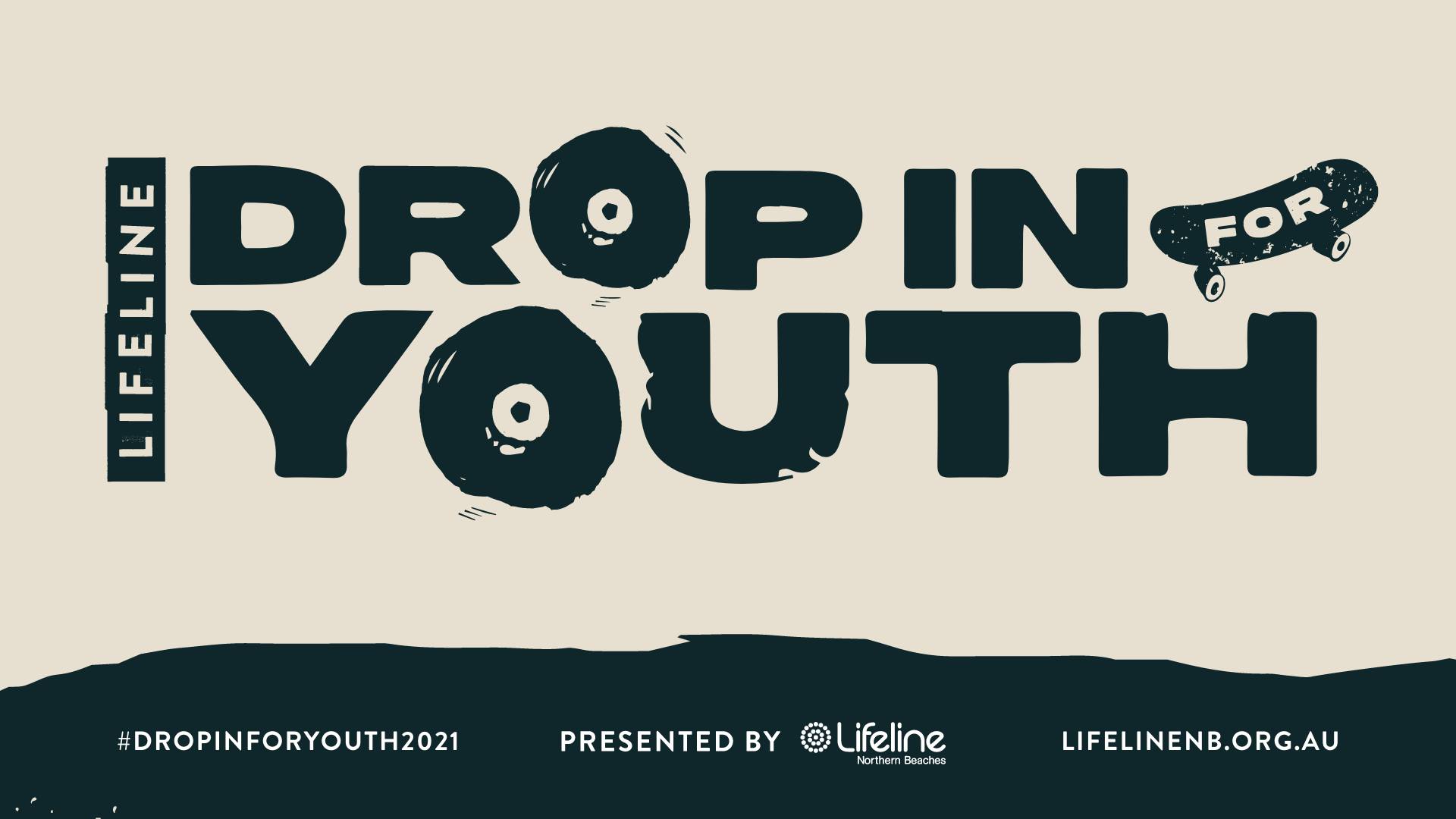
JOIN Ruby “Rockstar” Trew at DROP IN for YOUTH 2021
SKATE VERT COMP
+ Skate Park Fun - BEST Limbo, Highest Ollie, Board Jump and Trick Jam
OVER $10,000 in CASH - PRIZES - GIVEAWAYS to be WON!
DJ - FOOD TRUCKS - CAFE
SATURDAY 11 DECEMBER 2021 9:30AM
@MONA VALE SKATE PARK, 1604 Pittwater Road, Mona Vale
Saturday, 11 December 2021; 09:30 am- $15 entry online. $20 entry on event day, rego opens 9:30am. Vert Comp kicks off 10:30am.
Tickets: https://lifelinenb.grassrootz.com/drop-in-for-youth-2021
SKATE VERT COMP Kicks off 10:30am
Divisions:
- - 6 & Under - Girls and Boys
- - 8 & Under - Girls and Boys
- - 12 & Under - Girls and Boys
- - 16 & Under - Girls and Boys
- - Open Women’s - All Ages
- - Open Men’s - All Ages
- - Masters 45+ - Women's and Men's
EVENT T&C's
Participants can only compete in a single category for the event. Age Group participants are competing for prizes. Entry into the Open category is for anyone who wants to compete for prize money.
Open and Masters participants are competing for ca$h and GLORY!
Skate Park Fun - BEST Limbo, Highest Ollie, Board Jump and Trick Jam competitions are for everyone to have some fun!
Presented by: Avalon Youth Hub - Business Education Network (THE BEN) - Hurley ANZ - Lifeline Northern Beaches - Modest Eyewear Co - Monster Skate Park - Rotaract - Skater HQ
Lifeline Northern Beaches is offering FREE face-to-face counselling at the Avalon Youth Hub for people aged 15-24. Counselling is safe and confidential, and our service is available with or without a referral. For more information, visit www.lifelinenb.org.au/avalon-youth-hub. To book an appointment, call Lifeline Northern Beaches on 9949 5522 or email counselling@lifelinenb.org.au
School Sport And HSC Support Offered As Students Return
Students Cash In On Financial Literacy Challenge
 School students in NSW can now undertake the Treasurer’s Financial Literacy Challenge to understand the costs of real-life financial decisions.
School students in NSW can now undertake the Treasurer’s Financial Literacy Challenge to understand the costs of real-life financial decisions.Opportunity: The Search Begins For The Next Generation Of VFX And Animation Artists
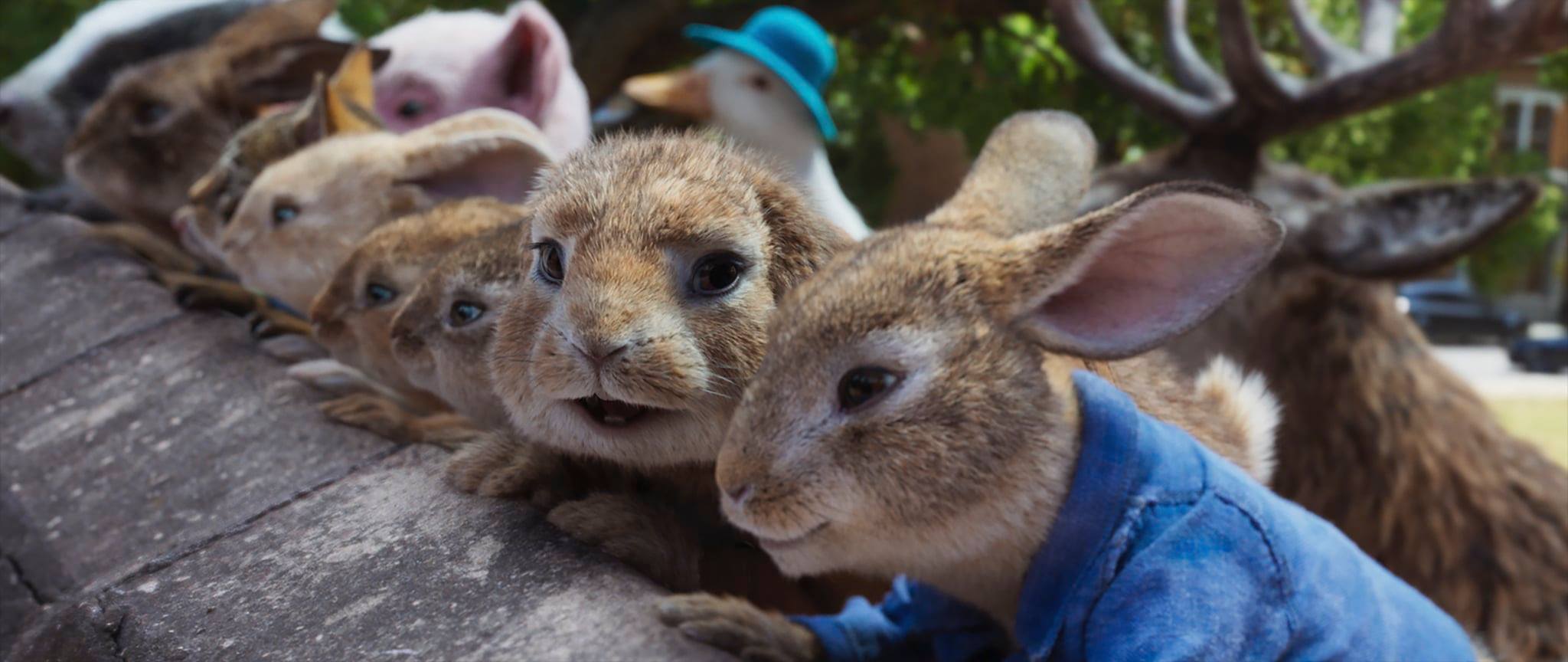
Opportunity: Free Training To Help Hospitality Industry Raise The Bar

A Tour And History Behind Australia's Most Famous Building, The Sydney Opera House
Canberra In The1920s (Compilation)
NESA Media Statement: HSC Major Projects
- Drama
- Textiles and Design
- Design and Technology
- Industrial Technology
- Visual Arts
- English Extension 2
- Music 1 (compositions)
- Music 2 and Extension (compositions and musicology)
- Society and Culture Personal Interest Project
HSC Online Help Guide
Stay Healthy - Stay Active: HSC 2021

Why are birds’ eggs colourful? New research shows it’s linked to the shape of their nests

Of all the vertebrates on Earth – that is, animals with backbones – birds are the only ones that lay colourful eggs. Scientists are still unsure why, but new research brings us a step closer to finding out.
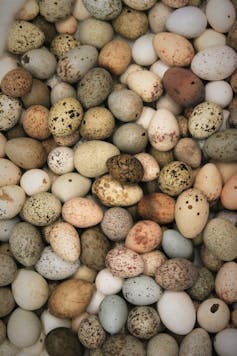
In a study published today in the journal Evolution, my colleagues and I reveal how the colours of songbird eggs diversified alongside the evolution of “open cup” nests, more than 40 million years ago.
Why Are Eggs Colourful?
Scientists are not entirely sure why birds lay such colourful eggs. Current theories fall into two main categories.
The first is that colour helps protect the eggs from environmental factors such as extreme cold or rain. Eggs with darker pigments heat up faster and maintain heat longer than white eggs. Pigments have also been shown to help strengthen thinner eggshells.
Eggshells can show areas of thinning, usually when the female’s diet is lacking calcium. This can often result from the use of pesticides, including DDT, in the wild — as they can dissolve or contaminate otherwise nutritious food such as snail shells.
Females have been shown to deposit pigments in the same spots where a shell is thinner (and more prone to breaking) — a bit like covering it with plaster. This may reinforce the shell and help keep it structurally sound.
We know the pigments are produced in the female’s uterus during the shell’s formation, but it’s still not known how different colours and complex patterns are applied to the shell while the egg is still inside the female.
Read more: Hot as shell: birds in cooler climates lay darker eggs to keep their embryos warm
The second theory is that colour provides a survival advantage, either by camouflaging the eggs from predators or parasites, or by signalling the female’s reproductive fitness to potential partners. More colourful eggs, particularly blue, signify that the mother is healthy and can spare resources for her babies.
How Is The Colour Made?
All the colours we see in bird eggs stem from just two pigments, one brown and the other blue. Different concentrations of these two pigments create the vast range of egg colours we see today.
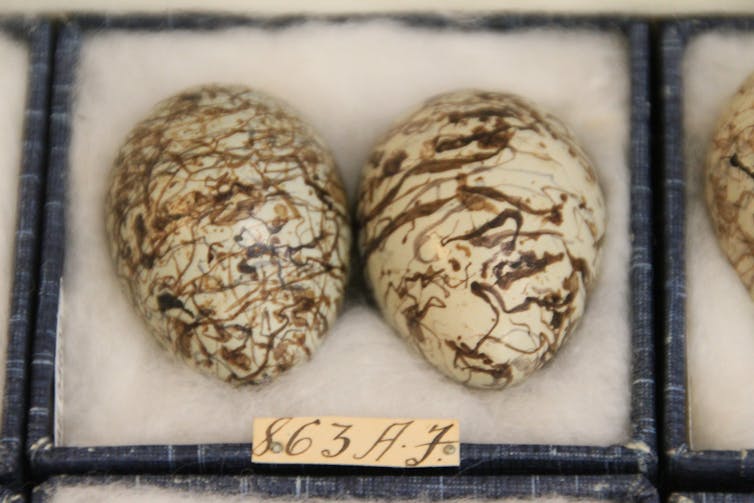
Until 2017, scientists believed laying colourful eggs was a trait unique to birds. But as it turns out, the same pigments can be found in fossilised dinosaur eggs too.
Researchers also found a link between dinosaurs’ nesting behaviour and egg colour. Specifically, they discovered dinosaurs that laid their eggs in partially open nests (rather than burying them like crocodiles) had colour in their eggshells.
Nest-Building Through Time
Until about 40 million years ago, songbirds built complex dome-shaped nests with insulated walls and roofs. Over time, however, they evolved the ability to create the open cup nests we see more commonly today.
Birds exhibit fantastic dexterity when building nests. Using only their beaks and feet, they can weave an array of nests ranging from relatively rudimentary designs to substantial, intricately woven structures.
The nests must have enough structural integrity to hold both the eggs and the weight of an incubating parent without being punctured. They must also stay intact while parents move around, hatched chicks start wriggling, and during rainfall and harsh winds.
Now, our research has found a link between eggshell colour and changes in nest construction. Specifically, birds have gone from laying a narrower range of coloured eggs (mainly white or dark brown) in closed dome nests, to a wider variety of colours (white, pink, olive, blue, pink and brown) in cup nests.
The transition to cup nests means the eggs are exposed when the incubating parent leaves to forage. During these foraging bouts, eggs are much more vulnerable to falling outside the temperature range needed to survive.
If they get too cold or hot, the embryos die. They’re also more exposed to passing predators looking for a snack.
Parasitic cuckoos lay their eggs inside other birds’ nests, and match their eggs to those already in the nest. Perhaps colour started playing an essential role in host parents’ evolutionary attempts to thwart the cuckoos?
Back when nests were mostly closed, and eggs hidden, the host wouldn’t have needed to produce colourful eggs to distinguish them from the cuckoo’s. Similarly, cuckoos wouldn’t have needed to match their eggs with the host’s.
Our research found that laying colourful eggs is a flexible trait, and was lost and regained multiple times during songbirds’ evolutionary history. Moreover, birds that evolved to make cup nests lost and regained this trait twice as many times as birds that still make closed nests today.
Onward, Upward
In the 1800s naturalists had a fascination with birds’ eggs, and it became common to own extensive egg collections. The ultimate goal for collectors, other than prestige, was to have as many different species as possible.
Today, collecting specimens is quite understandably illegal. But those old collections do come in handy.
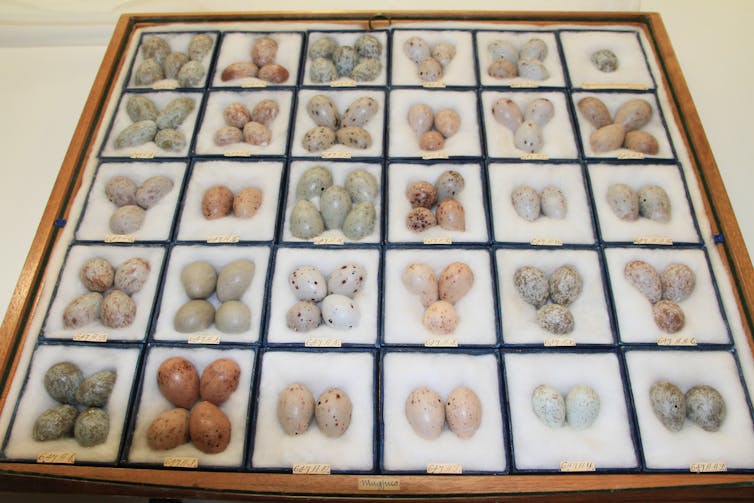
For our work, we were able to draw on extensive egg collections donated to museums in Australia. We measured the egg colours of more than 250 different species of Australian songbird, took photographs, and analysed them against their evolutionary histories.
Many of the eggs from museum collections also come with geographical locations. We’re grateful to early naturalists for making extensive notes on where, when and how they collected each clutch.
Moving forward, we want to use this data to investigate how climatic variables interact with egg colour — as well as whether a female’s diet impacts egg colour. Egg-citing stuff!
We would like to acknowledge the Traditional Owners of the land from which these eggs were taken, and pay our respects to the Elders, past and present and emerging.![]()
Kiara L'Herpiniere, PhD Candidate, Wildlife Biologist, Macquarie University
This article is republished from The Conversation under a Creative Commons license. Read the original article.
The bryozoan mystery: a new look at an old fossil reveals the origin of these tiny coral-like creatures
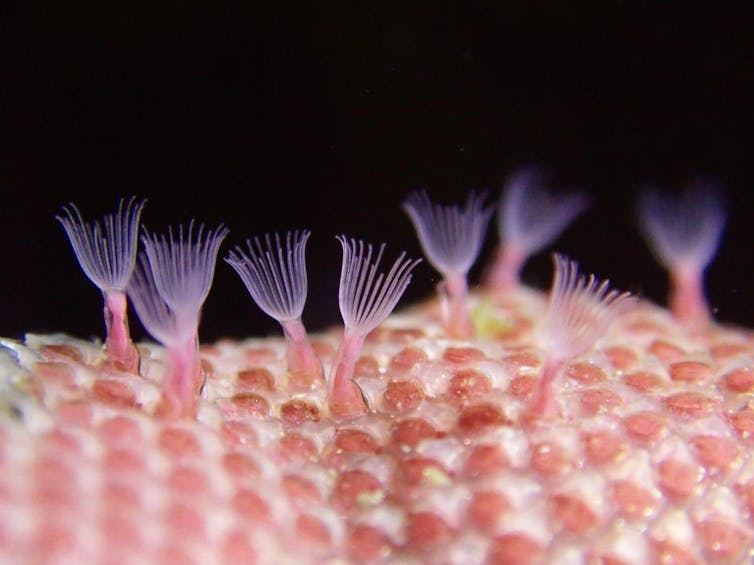
Most groups of modern animals had their beginnings more than half a billion years ago in an amazing evolutionary event known as the Cambrian Explosion.
This wasn’t the kind of explosion caused by a bomb or asteroid: we call it an “explosion” because of the huge and rapid increase in the diversity of animals we see in the fossil record during this time.
Read more: Evolution's 'big bang' explained (and it's slower than predicted)
Many familiar features of today’s animals arose in this period. The first eyes and other sensory organs developed, and appendages for swimming and walking also appeared. Tooth-rimmed jaws for predation evolved, as did complex hard parts for protection against predators.
One group of animals, called bryozoans, has until now appeared to be absent from the Cambrian Explosion. In new research, we took a closer look at some old fossils and discovered these tiny coral-like creatures were indeed present during this riotous surge in the variety of animal life on Earth.
Have You Heard Of Bryozoans?
Bryozoans are a distinct group of water-dwelling, filter-feeding animals. Like corals, bryozoans form colonies of tiny individuals. They eat using a crown of fine tentacles called a lophophore to extract tiny food particles from the water.
Bryozoan colonies come in a variety of shapes and sizes, including forms that encrust rocky surfaces, delicate branching structures, and even small jelly-like mounds.
Because the colony is often constructed of a hard material called calcium carbonate (the same material from which seashells are made), bryozoans are easily preserved as fossils. This is why roughly 15,000 species of fossil bryozoans are known to science.
Hidden Origins
Despite all these fossils, the origin of bryozoans has remained a mystery. The group seemingly “bursts” into existence about 480 million years ago (some 50 million years after the Cambrian Explosion), during the Ordovician Period.
Before the Ordovician, there is no record of their existence. This “missing” record led many palaeontologists to speculate that bryozoans first evolved sometime during the Cambrian. But these early forms were probably tiny and delicate, and may not have constructed their colonies of calcium carbonate. This would make them much less likely to be preserved as fossils.
A New Look At Old Fossils
Our research, published today in Nature, reveals bryozoans were indeed present during the Cambrian Explosion. The key to solving the mystery of their origins is a strange, honeycomb-like fossil called Protomelission (the name means “first honeycomb”).
The first specimens of Protomelission were originally described in 1993 from important Cambrian rocks in the Flinders Ranges in South Australia. However, it wasn’t clear from these original specimens that Protomelission was a bryozoan. Then, in 2018, an almost identical specimen was discovered in China.

Using a state-of-the-art technology called micro-computed tomography (MicroCT), we looked inside Protomelission to confirm it is, in fact, a fossil from a bryozoan colony.
MicroCT technology is similar to a CAT scan in a hospital. Using a thin beam of X-rays, we peer inside the fossil in a series of narrow “slices”. We then use a computer to stack the slices together and produce 3D images and videos of tiny objects like Protomelission.
Read more: The science of medical imaging: X-rays and CT scans
Our new images confirmed the fossil lacked the robust calcium carbonate skeleton that most living bryozoans possess. Based on our analyses, we can now say with certainty that bryozoans first appeared during the Cambrian Explosion.
A Hidden History Revealed
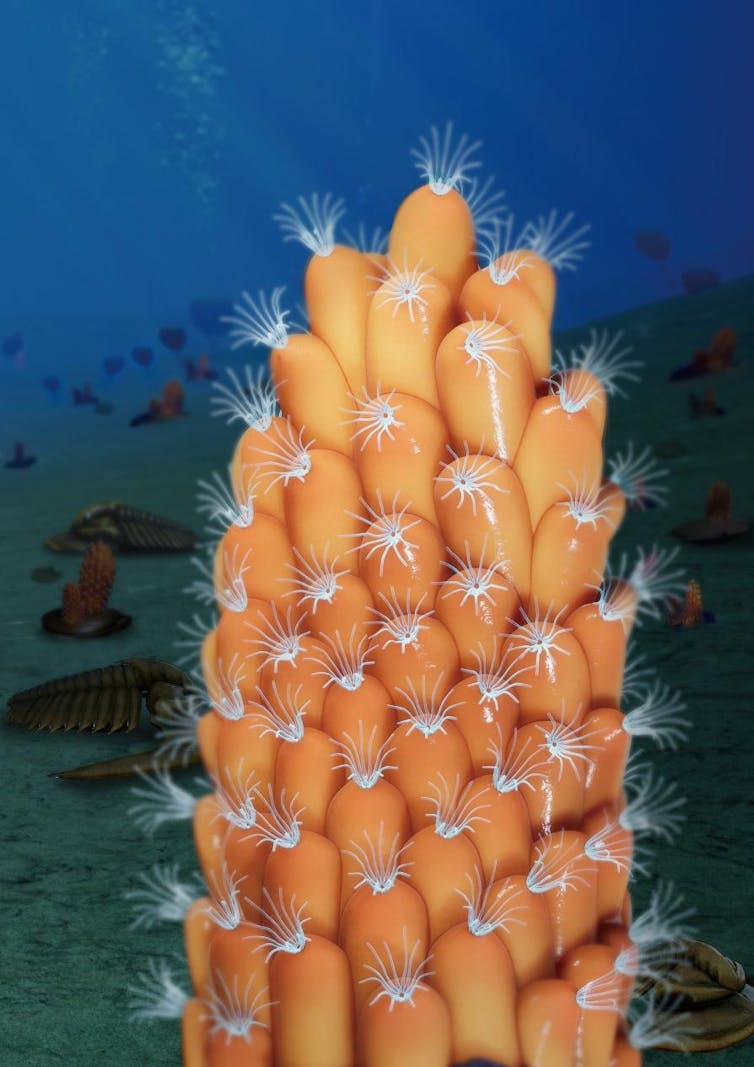
It’s not every day the hidden history of an entire group of animals is revealed by the fossil record! For context, this would be like revealing the early ancestor of every fish, amphibian, reptile, bird and mammal all in one go.
Our discovery pushes back the first appearance of the phylum Bryozoa by about 35 million years, making Protomelission the oldest known bryozoan. Importantly, our results also mean that living in colonies, a rare feature in complex animals, also originated during the Cambrian Explosion.
The bryozoans can now take their place among the incredible evolutionary and ecological events associated with the rise of animal communities.
For more information and resources related to the wonderful phylum Bryozoa please go here.![]()
Glenn A Brock, Honorary Professor, Macquarie University and Luke Strotz, Professor, Northwest University, Xi'an
This article is republished from The Conversation under a Creative Commons license. Read the original article.
Apple’s iPod came out two decades ago and changed how we listen to music. Where are we headed now?

On October 23, 2001, Apple released the iPod — a portable media player that promised to overshadow the clunky design and low storage capacity of MP3 players introduced in the mid-1990s.
The iPod boasted the ability to “hold 1,000 songs in your pocket”. Its personalised listening format revolutionised the way we consume music. And with more than 400 million units sold since its release, there’s no doubt it was a success.
Yet, two decades later, the digital music landscape continues to rapidly evolve.
A Market Success
The iPod expanded listening beyond the constraints of the home stereo system, allowing the user to plug into not only their headphones, but also their car radio, their computer at work, or their hi-fi system at home. It made it easier to entwine these disparate spaces into a single personalised soundtrack throughout the day.
There were several preconditions that led to the iPod’s success. For one, it contributed to the end of an era in which people listened to relatively fixed music collections, such as mixtapes, or albums in their running order. The iPod (and MP3 players more generally) normalised having random collections of individual tracks.

Then during the 1990s, an MP3 encoding algorithm developed at the Fraunhofer Institute in Germany allowed unprecedented audio data compression ratios. In simple terms, this made music files much smaller than before, hugely increasing the quantity of music that could be stored on a device.
Then came peer-to-peer file-sharing services such as Napster, Limewire and BitTorrent, released in 1999, 2000 and 2001, respectively. These furthered the democratisation of the internet for the end user (with Napster garnering 80 million users in three years). The result was a fast-changing digital landscape where music piracy ran rife.
The accessibility of music significantly changed the relationship between listener and musician. In 2003, Apple responded to the music piracy crisis by launching its iTunes store, creating an attractive model for copyright-protected content.
Meanwhile, the iPod continued to sell, year after year. It was designed to do one thing, and did it well. But this would change around 2007 with the release of the touchscreen iPhone and Android smartphones.
Read more: Stream weavers: the musicians' dilemma in Spotify's pay-to-play plan
Computer In Your Pocket
The rise of touchscreen smartphones ultimately led to the iPod’s downfall. Interestingly, the music app on the original iPhone was called “iPod”.
The iPod’s functions were essentially reappropriated and absorbed into the iPhone. The iPhone was a flexible and multifunctional device: an iPod, a phone and an internet communicator all in one — a computer in your pocket.
And by making the development tools for their products freely available, Apple and Google allowed third-party developers to create apps for their new platforms in the thousands.
It was a game-changer for the mobile industry. And the future line of tablets, such as Apple’s iPad released in 2010, continued this trend. In 2011, iPhone sales overtook the iPod, and in 2014 the iPod Classic was discontinued.
Unlike the Apple Watch, which serves as a companion to smartphones, single-purpose devices such as the iPod Classic are now seen as antiquated and obsolete.
Music Streaming And The Role Of The Web
As of this year, mobile devices are responsible for 54.8% of web traffic worldwide. And while music piracy still exists, its influence has been significantly reduced by the arrival of streaming services such as Spotify and YouTube.
These platforms have had a profound effect on how we engage with music as active and passive listeners. Spotify supports an online community-based approach to music sharing, with curated playlists.
Based on our listening habits, it uses our activity data and a range of machine-learning techniques to generate automatic recommendations for us. Both Spotify and YouTube have also embraced sponsored content, which boosts the visibility of certain labels and artists.
And while we may want to bypass popular music recommendations — especially to support new generations of musicians who lack visibility — the reality is we’re faced with a quantity of music we can’t possibly contend with. As of February this year, more than 60,000 tracks were being uploaded to Spotify each day.

What’s Next?
The experience of listening to music will become increasingly immersive with time, and we’ll only find more ways to seamlessly integrate it into our lives. Some signs of this include:
Gen Z’s growing obsession with platforms such as TikTok, which is a huge promotional tool for artists lucky enough to have their track attached to a viral trend
new interactive tools for music exploration, such as Radio Garden (which lets you tune into radio stations from across the globe), the Eternal Jukebox for Spotify and Instrudive
the use of wearables, such as Bose’s audio sunglasses and bone-conduction headphones, which allow you to listen to music while interacting with the world rather than being closed off, and
the surge in virtual music performances during the COVID pandemic, which suggests virtual reality, augmented reality and mixed reality will become increasingly accepted as spaces for experiencing music performances.
The industry is also increasingly adopting immersive audio. Apple has incorporated Dolby Atmos 3D spatial audio into both its Logic Pro music production software and music on the iTunes store. With spatial audio capabilities, the listener can experience surround sound with the convenience of portable headphones.
As for algorithms, we can assume more sophisticated machine learning will emerge. In the future, it may recommend music based on our feelings. For example, MoodPlay is a music recommendation system that lets users explore music through mood-based filtering.
Some advanced listening devices even adapt to our physiology. The Australian-designed Nura headphones can pick up information about how a specific listener’s ears respond to different sound frequencies. They purport to automatically adjust the sound to perfectly suit that listener.
Such technologies are taking “personalised listening” to a whole new level, and advances in this space are set to continue. If the digital music landscape has changed so rapidly within the past 20 years, we can only assume it will continue to change over the next two decades, too.
Read more: Goodbye iPod Classic ![]()
Stuart James, Lecturer and Research Scholar in Composition and Music Technology, Edith Cowan University
This article is republished from The Conversation under a Creative Commons license. Read the original article.
Nearly 500 Ancient Ceremonial Sites Found In Southern Mexico
.%20Photo%20by%20Inomata.jpg?timestamp=1635355880030)
A mysterious signal looked like a sign of alien technology — but it turned out to be radio interference
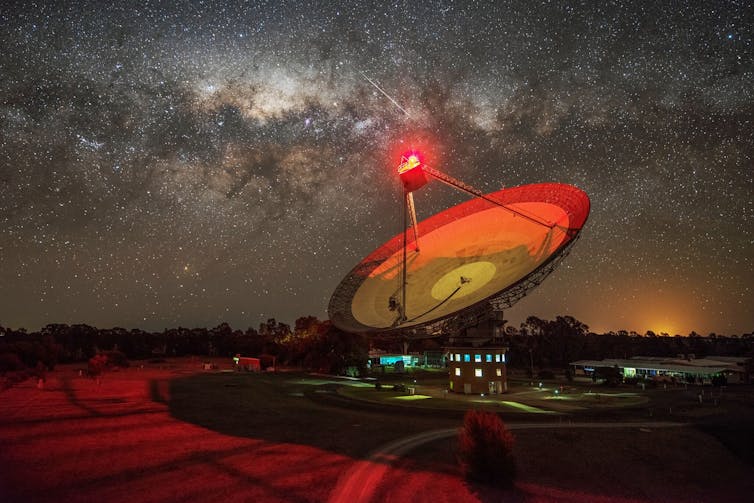
In December last year, the media reported an intriguing signal we at the Breakthrough Listen project found in our radio telescope data. Dubbed BLC1, the signal didn’t appear to be the result of any recognisable astrophysical activity or any familiar Earth-based interference.
The trouble was, we weren’t ready to discuss it. When you’re searching for signs of extraterrestrial life, you want to be very careful about getting it right before you make any announcements. Last year we had only just started secondary verification tests, and there were too many unanswered questions.
Read more: We asked astronomers: are we alone in the Universe? The answer was surprisingly consistent
Today we are ready to report that BLC1 is, sadly, not a signal from intelligent life beyond Earth. Rather, it is radio interference that closely mimics the type of signal we’ve been looking for. Our results are reported in two papers in Nature Astronomy.
Searching For Solar Flares And Signs Of Life
The story of BLC1 starts in April 2019, when Andrew Zic, who at the time was a PhD student at the University of Sydney, began observing the nearby star Proxima Centauri with multiple telescopes to search for flare activity. At 4.22 light years away, Proxima Centauri is our nearest stellar neighbour, but it is too faint to see with the naked eye.
Flares from stars are bursts of energy and hot plasma that may impact (and likely destroy) the atmosphere of any planets in their path. Though the Sun produces flares, they are not strong or frequent enough to disrupt life on Earth. Understanding how and when a star flares teaches us a lot about whether those planets might be suitable for life.
Proxima Centauri hosts an Earth-sized exoplanet called Proxima Centauri b, and Andrew’s observations suggested the planet is buffeted by fierce “space weather”. While bad space weather doesn’t rule out life existing in the Proxima Centauri system, it does mean the planet’s surface is likely to be inhospitable.
Read more: Bad space weather may make life impossible near Proxima Centauri
Still, as our nearest neighbour, Proxima Centauri b remains a compelling target for the search for extraterrestrial intelligence (or SETI). Proxima Centauri is one of the only stars we could potentially ever visit in our lifetime.
At the speed of light, a two-way trip would take 8.4 years. We can’t send a spaceship that fast, but there is hope that a tiny camera on a light sail could reach there in 50 years and beam back pictures.
Because of this, we joined forces with Andrew Zic and his collaborators, and used CSIRO’s Parkes telescope (also known as Murriyang in the Wiradjuri language) to run SETI observations in parallel with the flare activity search.
Read more: Observing the universe with a camera traveling near the speed of light
An Intriguing Summer Project
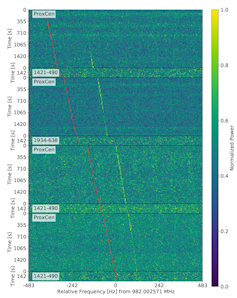
We thought searching these observations would be an excellent project for a summer student. In 2020, Shane Smith, an undergraduate student from Hillsdale College in Michigan, United States, joined the Berkeley SETI Research Experience for Undergraduates program and began sifting through the data. Toward the end of his project, BLC1 popped out.
The Breakthrough Listen team quickly became intrigued by BLC1. However, the burden of proof to claim a detection of life beyond Earth is exceedingly high, so we don’t let ourselves get too excited until we’ve applied every test we can think of. The analysis of BLC1 was spearheaded by Sofia Sheikh, at the time a PhD student at Penn State, who ran an exhaustive set of tests, many of which were new.
There was plenty of evidence pointing toward BLC1 being a genuine sign of extraterrestrial technology (or “technosignature”). BLC1 has many characteristics we expect from a technosignature:
we only saw BLC1 when we were looking toward Proxima Centauri, and didn’t see it in when we looked elsewhere (in “off-source” observations). Interfering signals are commonly seen in all directions, as they “leak” into the telescope receiver
the signal only occupies one narrow band of frequencies, whereas signals from stars or other astrophysical sources occur over a much wider range
the signal slowly drifted in frequency over a 5-hour period. A frequency drift is expected for any transmitter not fixed to Earth’s surface, as its movement relative to us will cause a Doppler effect
the BLC1 signal persisted for several hours, making it unlike other interference from artificial satellites or aircraft that we have observed before.
Nevertheless, Sofia’s analysis led us to conclude BLC1 is most likely radio interference from right here on Earth. Sofia was able to show this by searching across the entire frequency range of the Parkes receiver and finding “lookalike” signals, whose characteristics are mathematically related to BLC1.
Unlike BLC1, the lookalikes do appear in off-source observations. As such, BLC1 is guilty by association of being radio interference.
Not The Technosignature We Were Looking For
We don’t know exactly where BLC1 was coming from, or why it wasn’t detected in off-source observations like the lookalike signals. Our best guess is that BLC1 and the lookalikes are generated by a process called intermodulation, where two frequencies mix together to create new interference.
If you’ve listened to blues or rock guitar, you are probably familiar with intermodulation. When a guitar amp is deliberately overdriven (when you turn it up to 11), intermodulation adds a pleasant-sounding distortion to the clean guitar signal. So BLC1 is – perhaps – just an unpleasant distortion from a device with an overdriven radio frequency amplifier.
Read more: Seti: why extraterrestrial intelligence is more likely to be artificial than biological
Regardless of what caused BLC1, it was not the technosignature we were looking for. It did, however, make for an excellent case study, and showed that our detection pipelines are working and picking up unusual signals.
Proxima Centauri is only one of many hundreds of billions of stars in the Milky Way. To search them all, we need to keep our momentum, to continue to improve our tools and verification tests, and to train the next generation of astronomers, like Shane and Sofia, who can continue the search with the next generation of telescopes.![]()
Danny C Price, Senior research fellow, Curtin University
This article is republished from The Conversation under a Creative Commons license. Read the original article.
What makes a good literary hoax? A political point, for starters

Literary hoaxes thrive on exposure. At best, they are politically transgressive. They strip away anything smug, pretentious or hypocritical to reveal an uglier reality underneath.
Hoaxes may use ethically questionable methods. But when they work, they tell us something about the relationship of art to life and politics. It’s the literary equivalent of Banksy shredding an artwork at Sotheby’s as the hammer came down.
If they don’t, then we should question if they deserve to be called a hoax at all.

Recently, hoaxes were in the headlines when three men leapt onto a Barcelona stage to accept a million euro literary prize awarded by the publishing house, Planeta – “unmasking” themselves as the Spanish writer, Carmen Mola in the process. “Mola”, a bestselling crime author, won the Euro prize for La Bestia – The Beast – a thriller about a serial killer stalking Madrid in the midst of a cholera epidemic.
Cue global shock, followed by shrugs from authors, publishers and critics. So far, the fury has centred on who is allowed to write what, and why. However author Margaret Atwood crisply and correctly called the unveiling a “a great publicity stunt”. This hoax was embarrassing and high profile. But it was also unoriginal and apolitical.
The men behind Mola said they were tired of lying. But might claiming a lucrative, prestigious prize – and a bit of ego – also have been a factor in unmasking themselves?

Pen Name Politics
The Mola hoax infuriated many because the authors, who wrote a trilogy of ultra-violent novels starring a female detective, Inspector Elena Blanco, had generated a backstory that was more than a pseudonym. It was an identity. It was also stereotypically gendered.
Mola, which roughly translates as “Carmen the cool” in English, claimed she was an academic who kept her writing career a secret because she was bashful about the allegedly transgressive subject matter.
“I didn’t want my colleagues at the office, my sisters-in-law or my mother to know that I wrote a book where someone kills a woman by getting larva worms into her skull,” Mola said in an emailed interview. Email and claims of reclusiveness are the modus operandi for managing publicity arrangements for a problematic identity.
Lawyer and former director of the Women’s Institute in Spain, Beatriz Gimeno, tweeted that the authors had propagated the persona of a woman through email interviews for years, for financial gain. Another commenter called it gender bending “catfishing”.
According to Spanish journalist, Maria Ramirez, a Madrid feminist bookstore is now refusing to sell the Mola books on principle that “men don’t take all the space”. Historically female authors have been forced to use male pseudonyms to be published to fight for this space.
Read more: Reclaim Her Name: why we should free Australia's female novelists from their male pseudonyms
Did the authors see themselves as taking a poke at the history of women’s writing or gender oppression? No. They reportedly said they chose the name by chance and for fun and there was no politics associated with their choice of a woman. “Choosing a woman’s name was not a thought out thing, we don’t want to send any message. We could have put R2-D2 on it,” they said.

In Australia, in the 1940s, Dymphna Cusack and Florence James used the male pseudonym, Sydney Wyborne, to win a newspaper competition for an unpublished manuscript. They make an interesting comparison to the Mola case. Sadly, once unmasked, the prize was withdrawn. They didn’t get the money or the publishing contract.
Their book wasn’t published until 1951, under the new name Come in Spinner, by another publisher. According to Cusack, the delay was complicated by obscenity laws at the time, and editors’ resistance to publishing the women under their two real names.
Asking Questions
A true hoax provokes. It questions cultural biases, shatters conventions, leaving fragments for discussion that linger for years, if not centuries.
Daniel Defoe’s Robinson Crusoe, for instance, is widely credited as the first realist English novel but it was initially read as a “true history” when published in 1719, under Crusoe’s name. The first novel, or one of the first fake memoir hoaxes? This is a conversation that continues.

Fast forward to 2006, when the Australian newspaper launched a “sting” on Australian publishers. The article was titled, “Would a manuscript from the 1973 Nobel laureate pass muster today?” A chapter of Patrick White’s Nobel prize winning novel, The Eye of the Storm, was sent to publishers under a pen name that was an anagram of Patrick White: Wraith Picket. The idea was copied from a similar sting by The Times of London, using writing by V.S. Naipaul.
Furious publishers who rejected White’s manuscript said they were not given enough of the book to make a decision and it was sloppily presented. This simple hoax was in the tradition of the fictional Australian poet from the 1940s Ern Malley. It made a cultural point – much of the book world is driven by rank commercialism and passing fads. An editorial eye is hit and miss.
Less salubrious – and more obvious – are the cultural commentary hoaxes on the saleability of sex romps, from a 1970s satire of the writing of Harold Robbins to a more recent parody of the writing style of 50 Shades of Grey.
Intercultural thefts are a separate matter. They aren’t hoaxes. They are harmful appropriations. Most commonly, such theft is committed by a dominant culture and the victim is the literary heritage of an oppressed minority.
This sorry history includes the so called “Virago Vicar”; an Anglican vicar named Toby Forward who published a collection of stories with the British feminist publishing house Virago under the pseudonym Rahila Khan.
Identity theft involving non-fiction forms or memoir is beyond this category – it belongs in the realm of fake news and “alternative facts”.
One interesting theft that keeps everybody talking – and may well endure – is the case of writer “Jeremiah Terminator Leroy”; a New York based television writer named Laura Albert who adopted the persona of a queer male sex worker from West Virginia, whose novels gave rise to a cult following. Albert convinced her sister-in-law Savannah Knoop to play the part of the reclusive author at book and other celebrity events.
The Mola men’s best defence might be that collaborations are rarely rewarded in the publishing world and they aimed to explode that status quo. But they have made little of this, other than mentioning how they “combined their talents” to write their crime trilogy along with this new novel.
Planeta, meanwhile, are expected to honour both the publishing deal for La Bestia and the lucrative associated TV adaptation of the Blanco trilogy under the Carmen Mola name. Filming starts in January.![]()
Camilla Nelson, Associate Professor in Media, University of Notre Dame Australia and Kerrie Davies, Lecturer, School of the Arts & Media, UNSW
This article is republished from The Conversation under a Creative Commons license. Read the original article.
Transport For NSW Partner With Motional To Lay Foundations For A Driverless Future Robotaxi Service

Rein In Behaviour Around Horses On The Road

Crowded Pyrmont bridge picture see: nla.gov.au/nla.news-page13266297 ' The Man Who Swings the Bridge', Sunday Times, December 1920! - from the Powerhouse Museum's Tyrell Collection on Flickr.
Urgent Need To Tighten Rules On Use Of 'Surgeon' To Protect Public Safety Warns AMA
Australia Needs A Strategy To Minimise Climate Change Health Burden
 Despite being uniquely vulnerable to the hazards of climate change, Australia does not have a national plan to address the health risks it faces, says a national assessment of health and climate change released this week in the Medical Journal of Australia’s 2021 MJA-Lancet Countdown on Health and Climate Change.
Despite being uniquely vulnerable to the hazards of climate change, Australia does not have a national plan to address the health risks it faces, says a national assessment of health and climate change released this week in the Medical Journal of Australia’s 2021 MJA-Lancet Countdown on Health and Climate Change.New Study Suggests That Breastfeeding May Help Prevent Cognitive Decline
 "While many studies have found that breastfeeding improves a child's long-term health and well-being, our study is one of very few that has looked at the long-term health effects for women who had breastfed their babies," said Molly Fox, PhD, lead author of the study and an Assistant Professor in the UCLA Department of Anthropology and the Department of Psychiatry and Biobehavioral Sciences. "Our findings, which show superior cognitive performance among women over 50 who had breastfed, suggest that breastfeeding may be 'neuroprotective' later in life."
"While many studies have found that breastfeeding improves a child's long-term health and well-being, our study is one of very few that has looked at the long-term health effects for women who had breastfed their babies," said Molly Fox, PhD, lead author of the study and an Assistant Professor in the UCLA Department of Anthropology and the Department of Psychiatry and Biobehavioral Sciences. "Our findings, which show superior cognitive performance among women over 50 who had breastfed, suggest that breastfeeding may be 'neuroprotective' later in life."Dragging Your Feet? Lack Of Sleep Affects Your Walk
New Research Finds Air Pollution Reduces Sperm Counts Through Brain Inflammation
Coffee And The Effects Of Climate Change
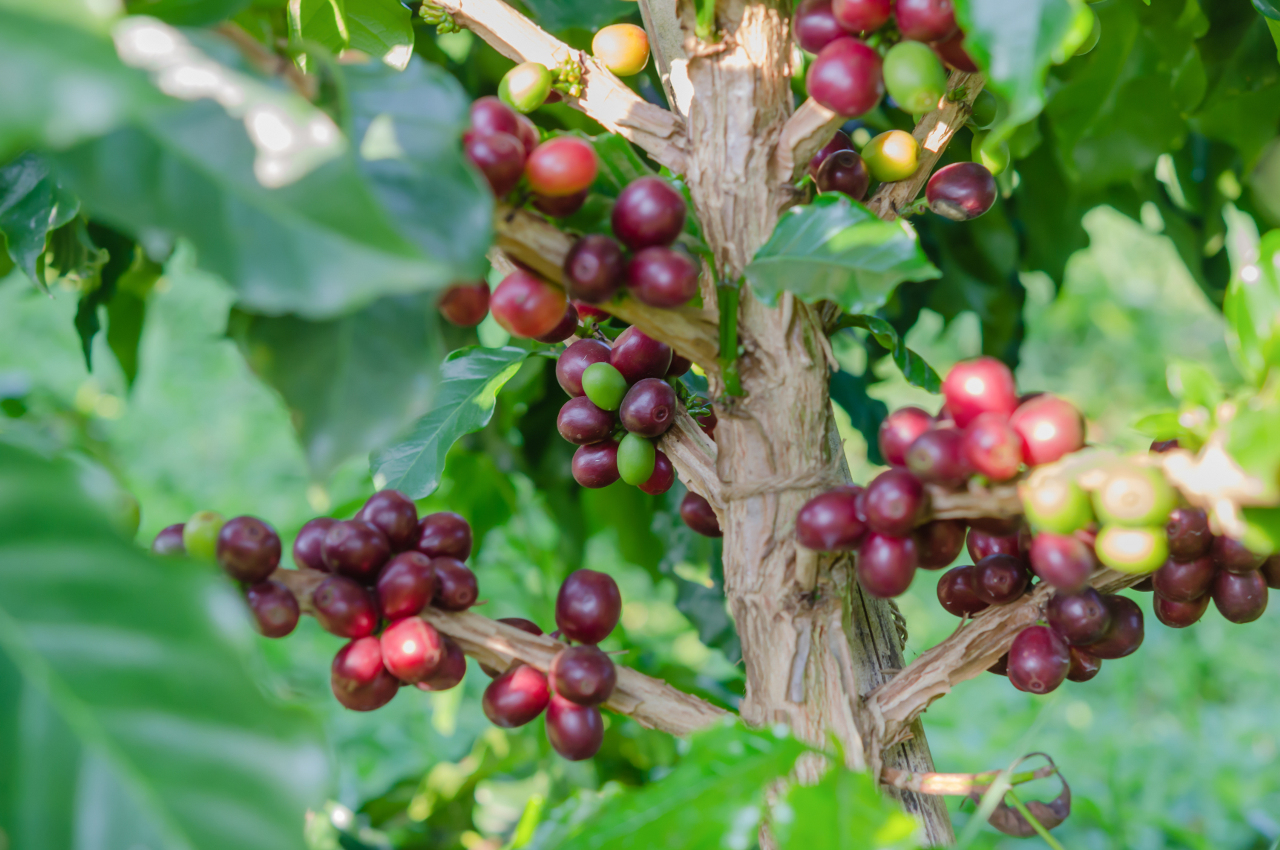
Researchers Discover A Way To Increase The Effectiveness Of Antibiotics

Super Cool Building Materials Prove Powerful Arsenal Against Climate Change
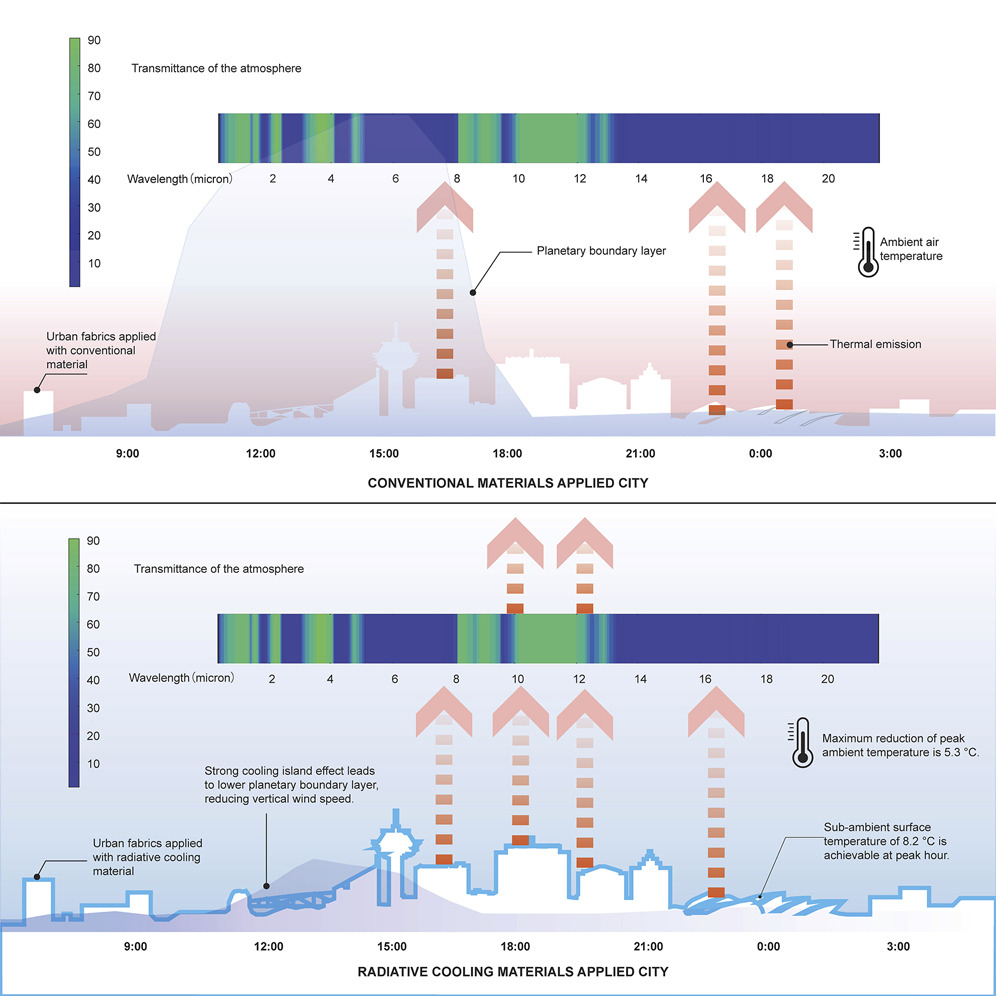
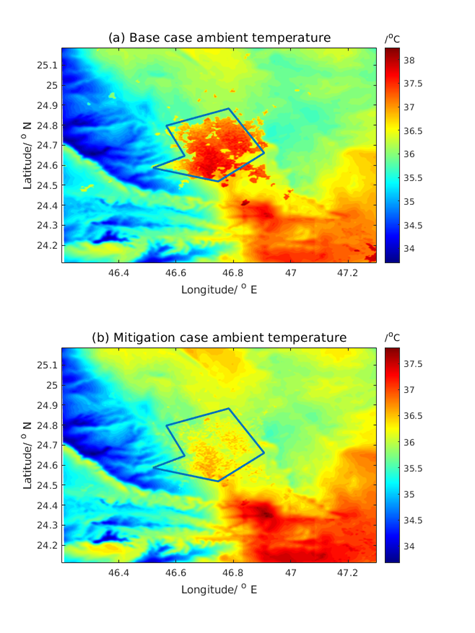
Disclaimer: These articles are not intended to provide medical advice, diagnosis or treatment. Views expressed here do not necessarily reflect those of Pittwater Online News or its staff.